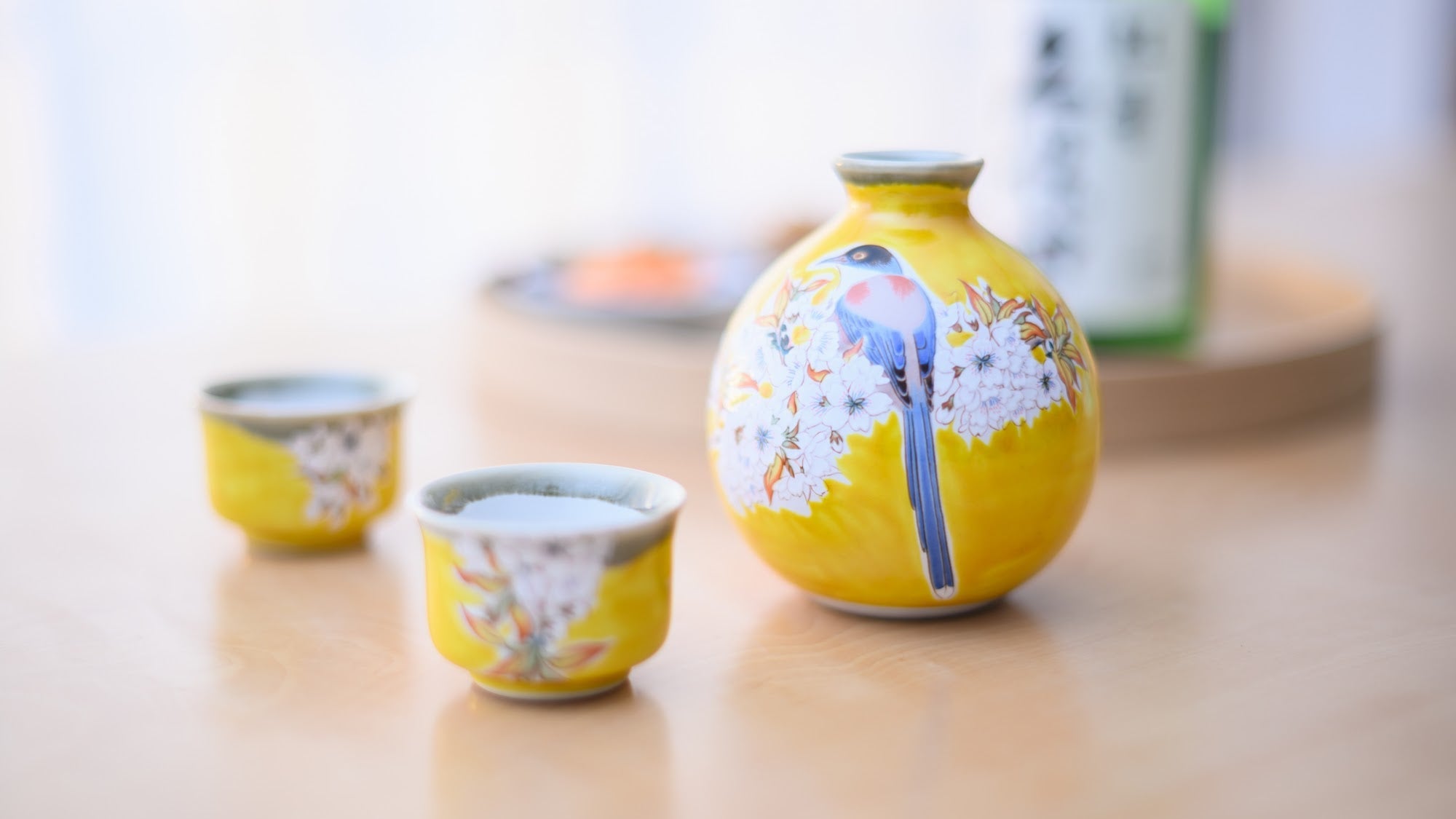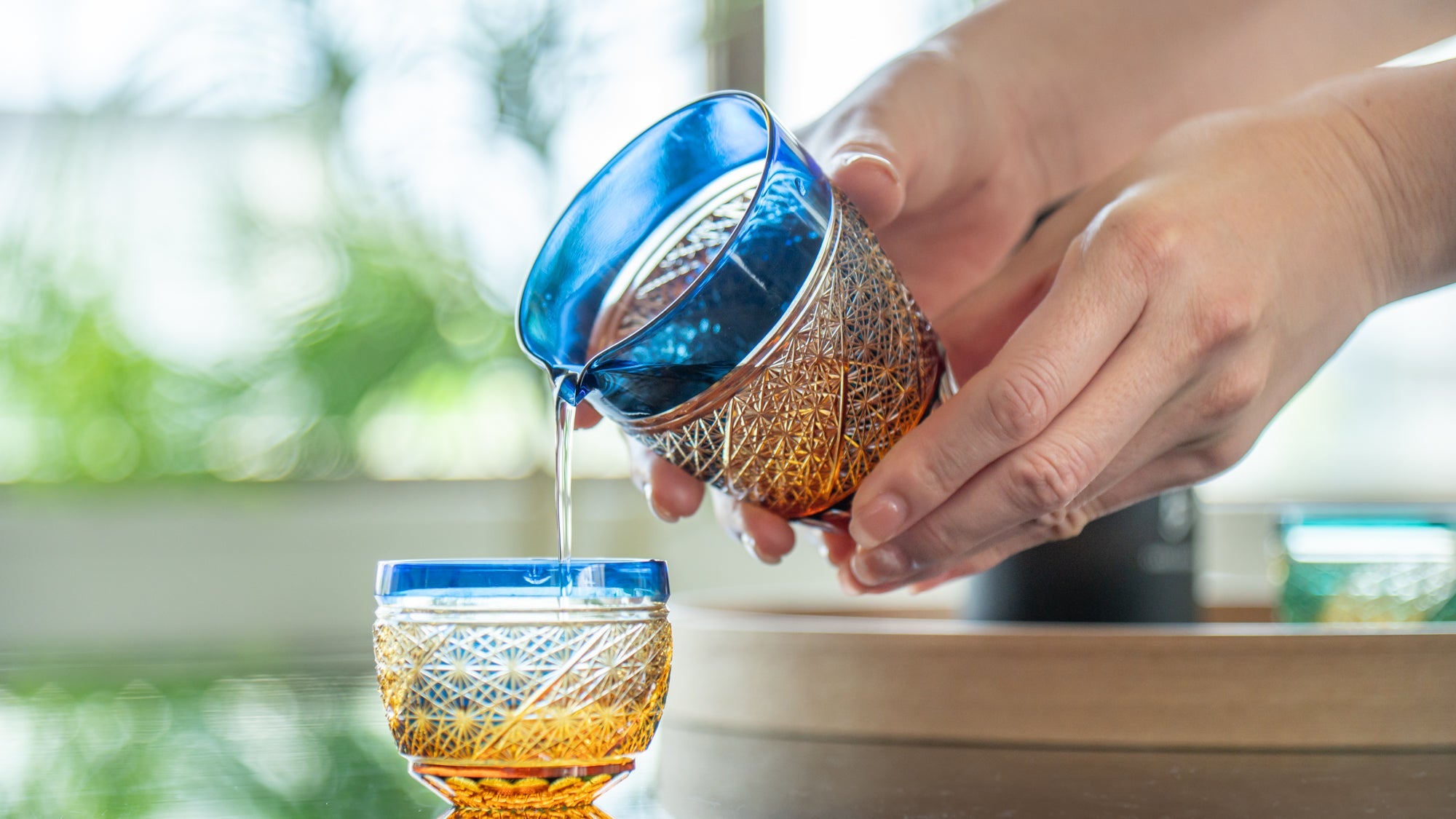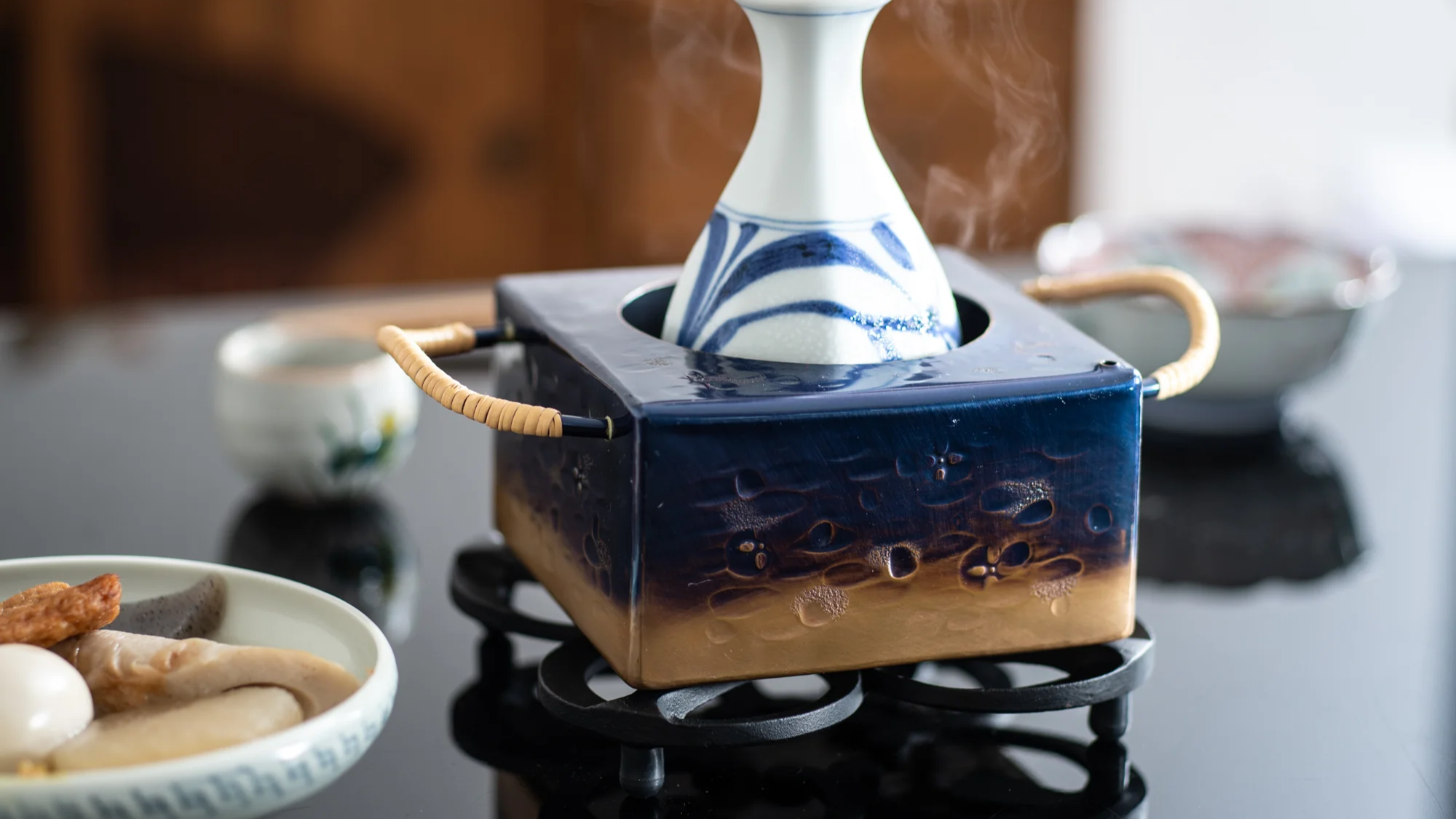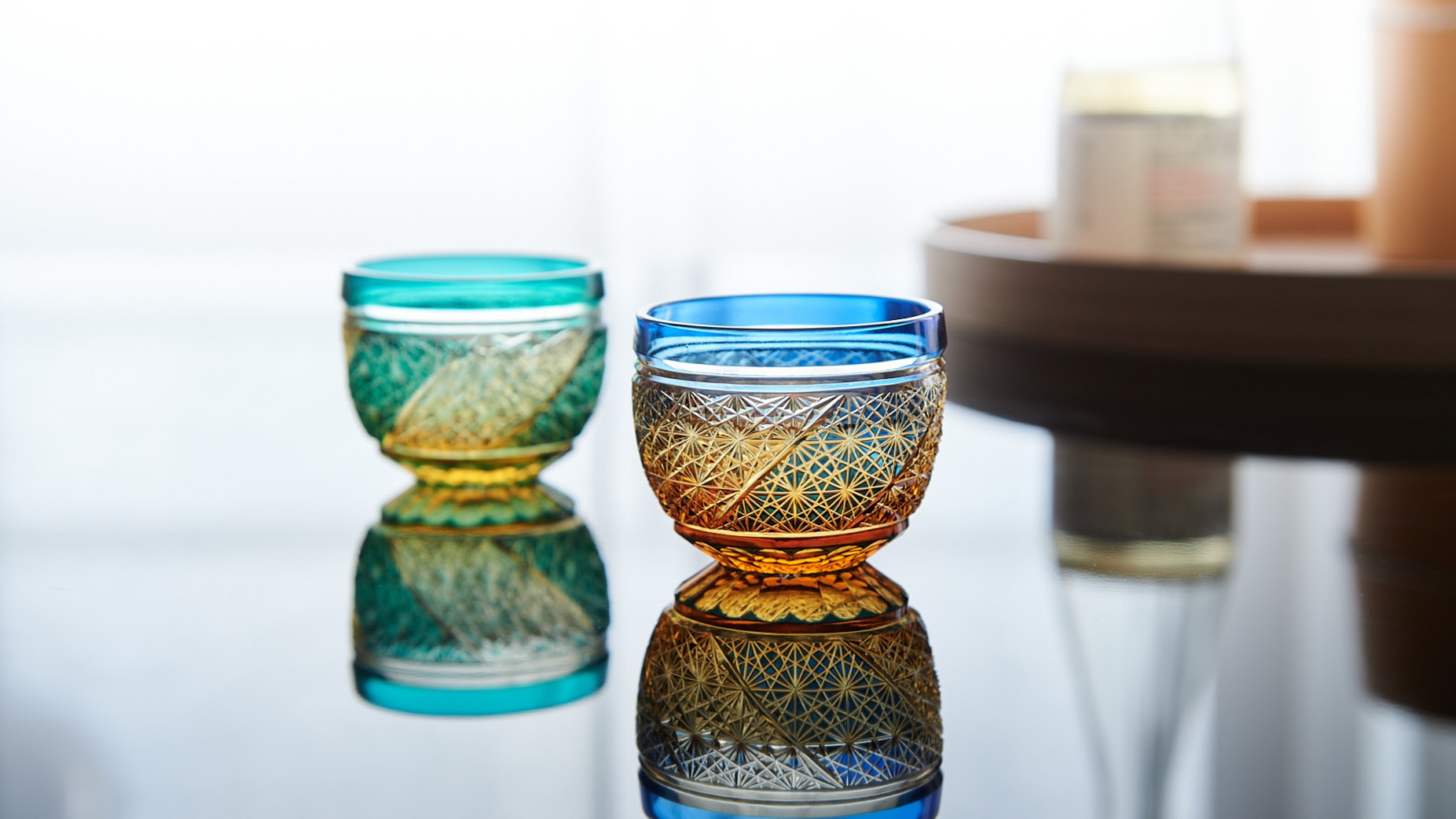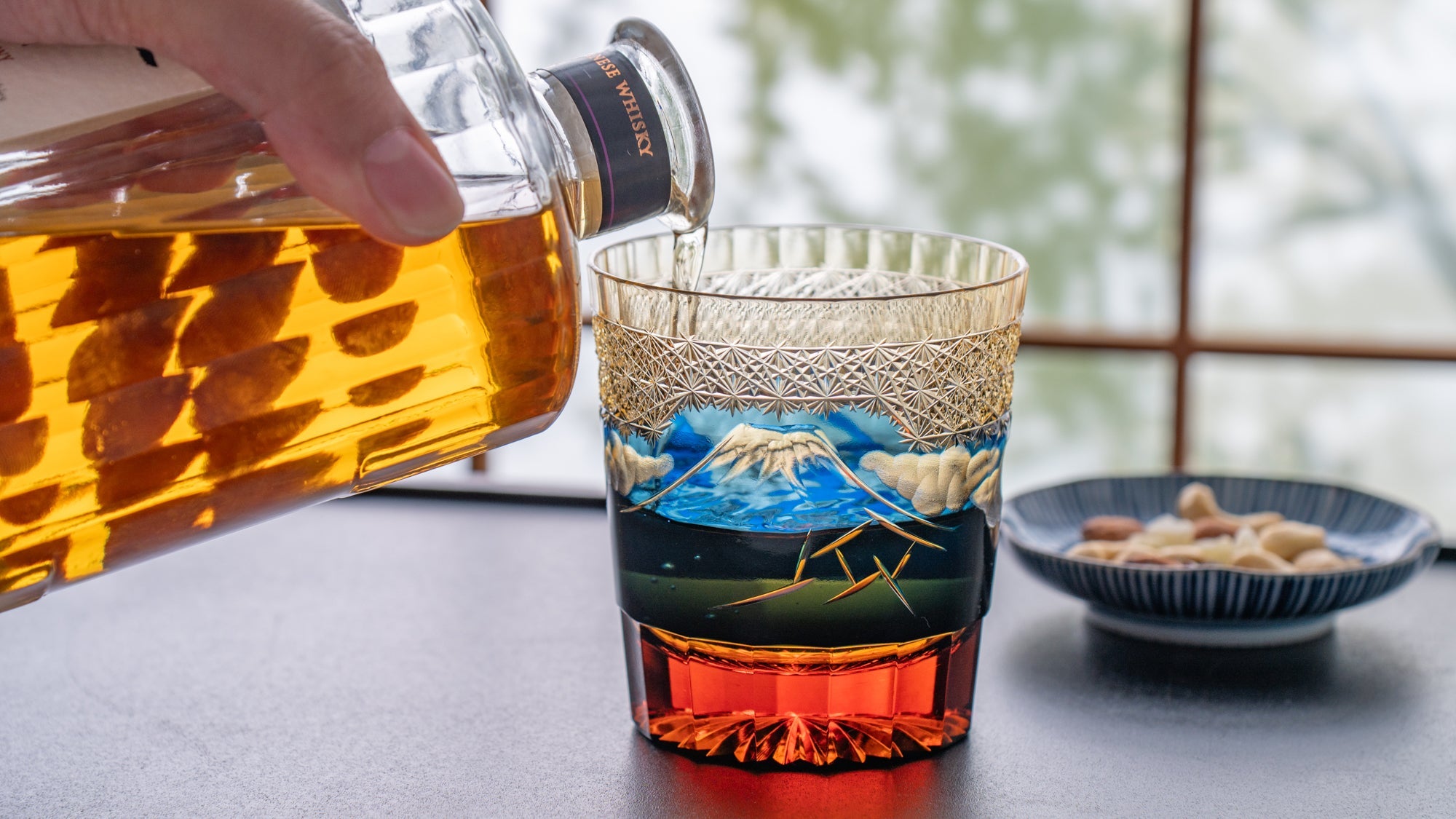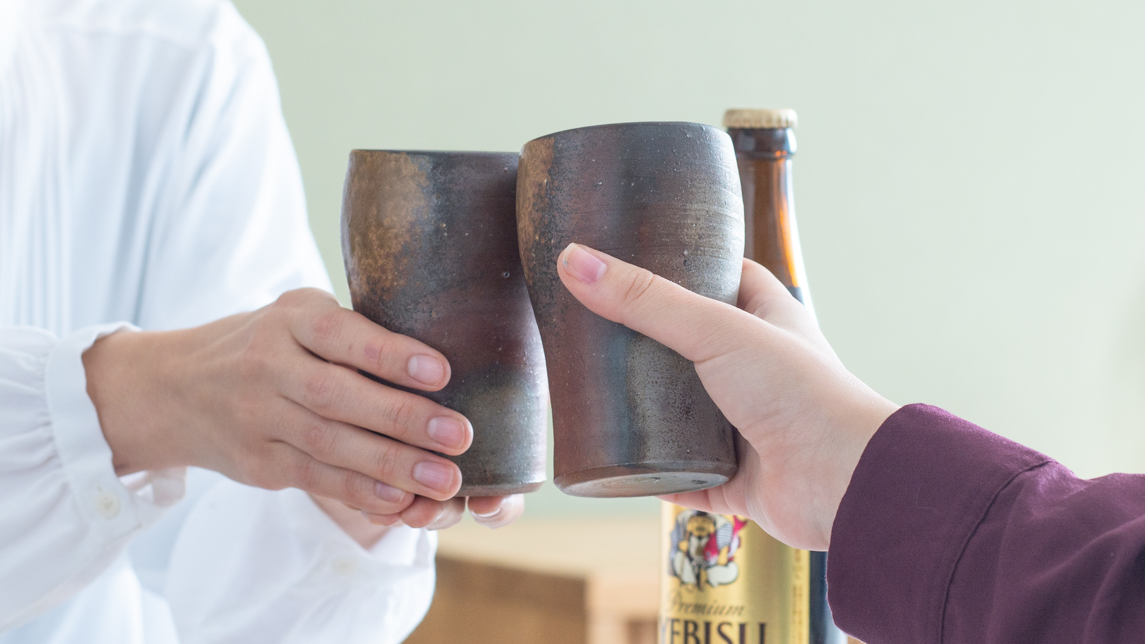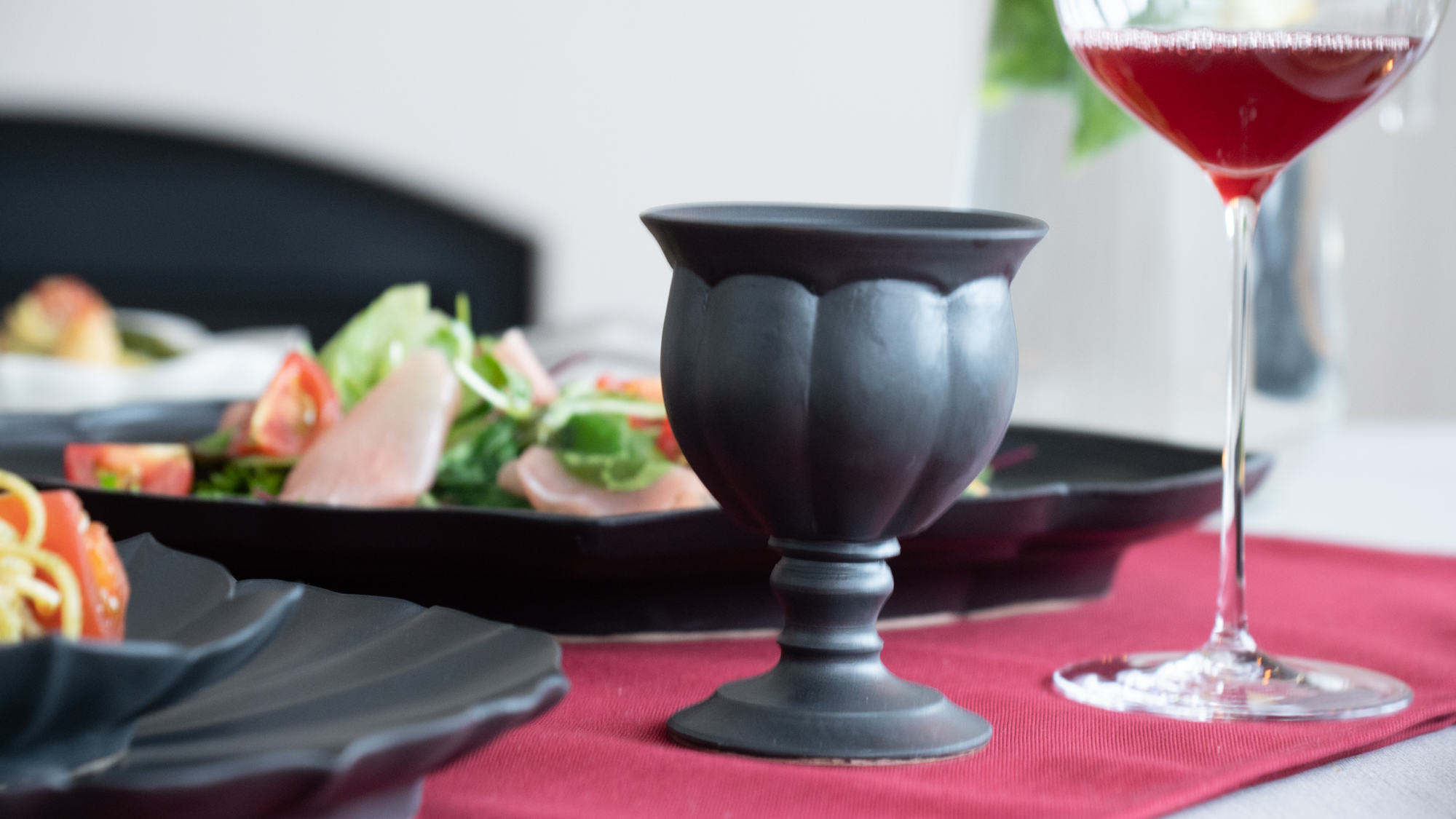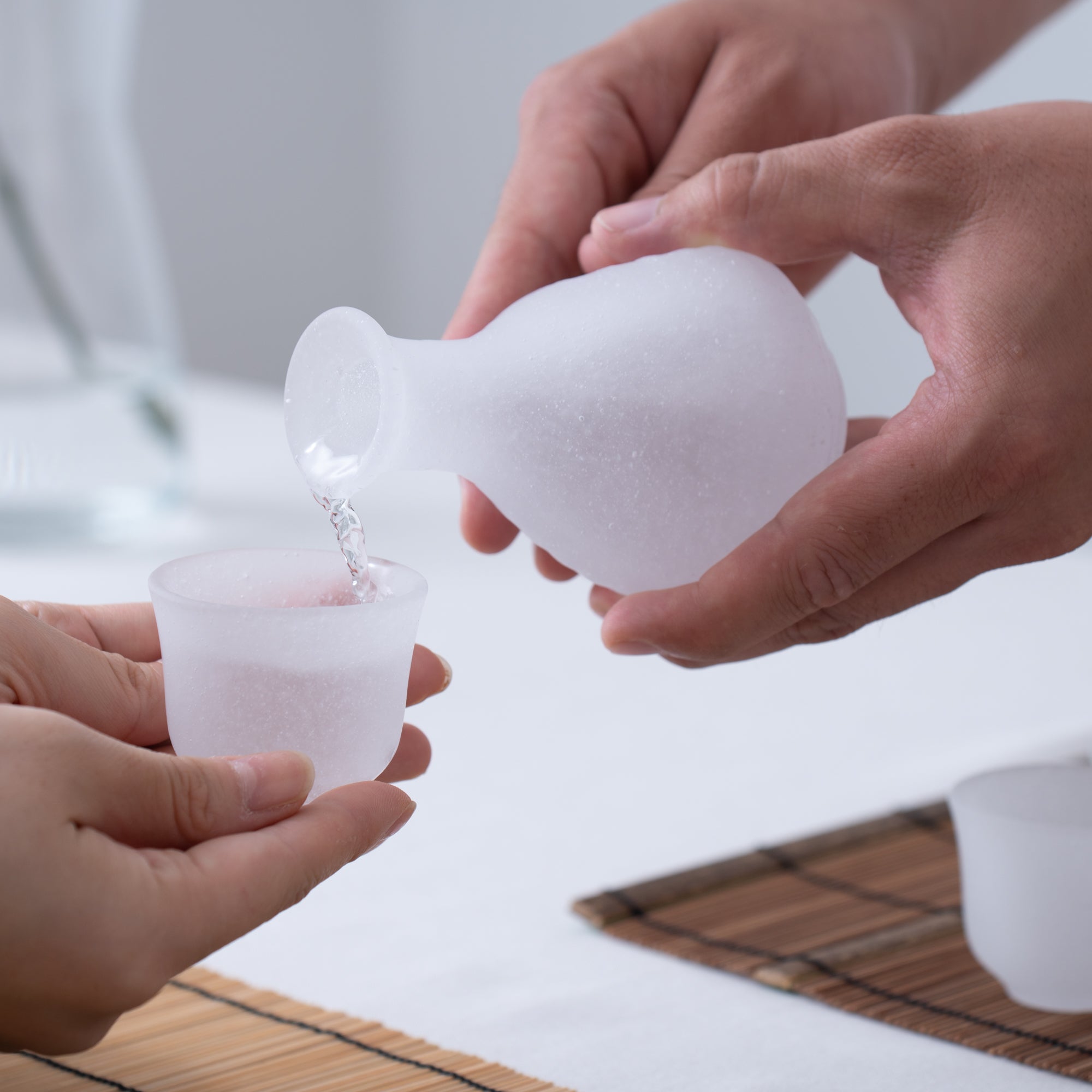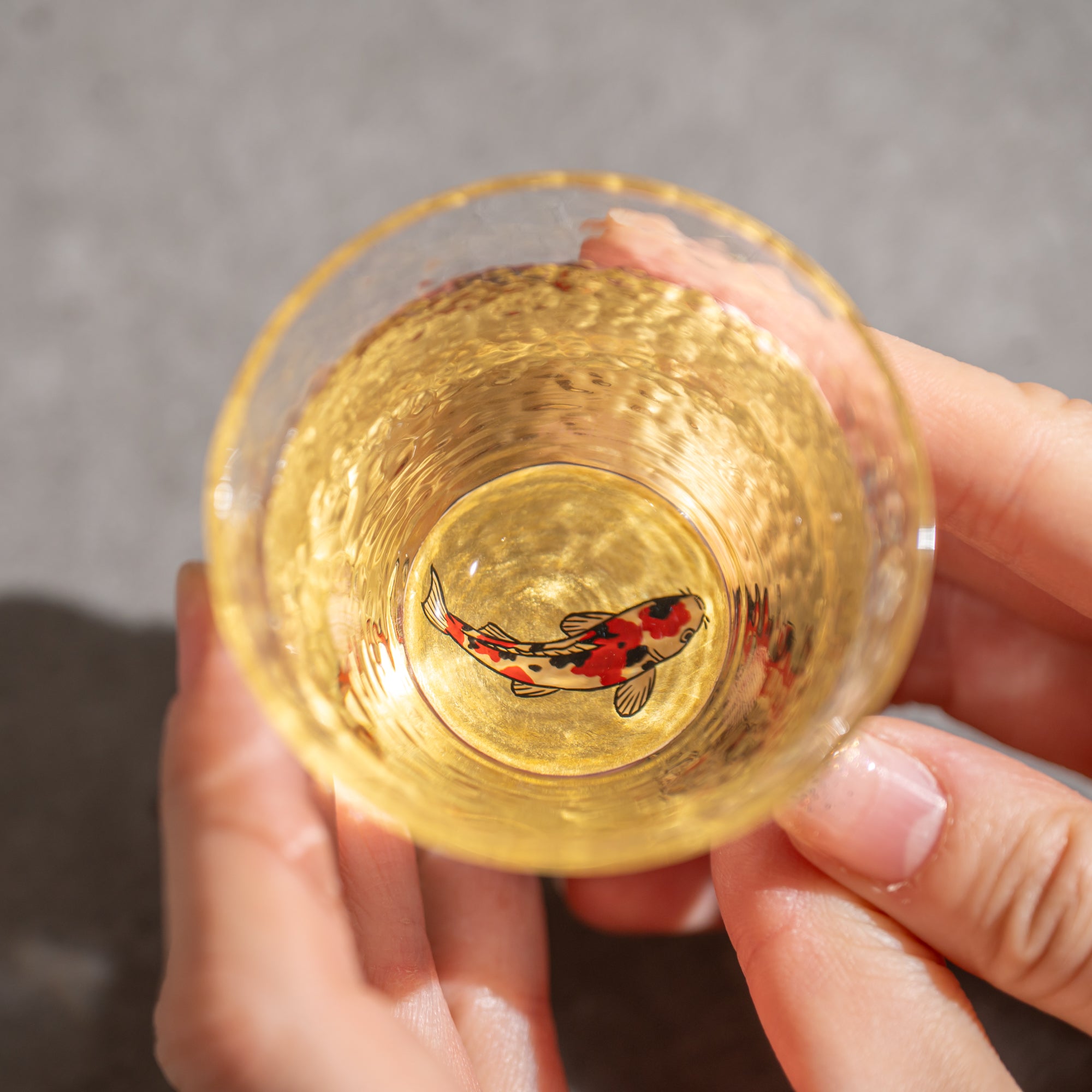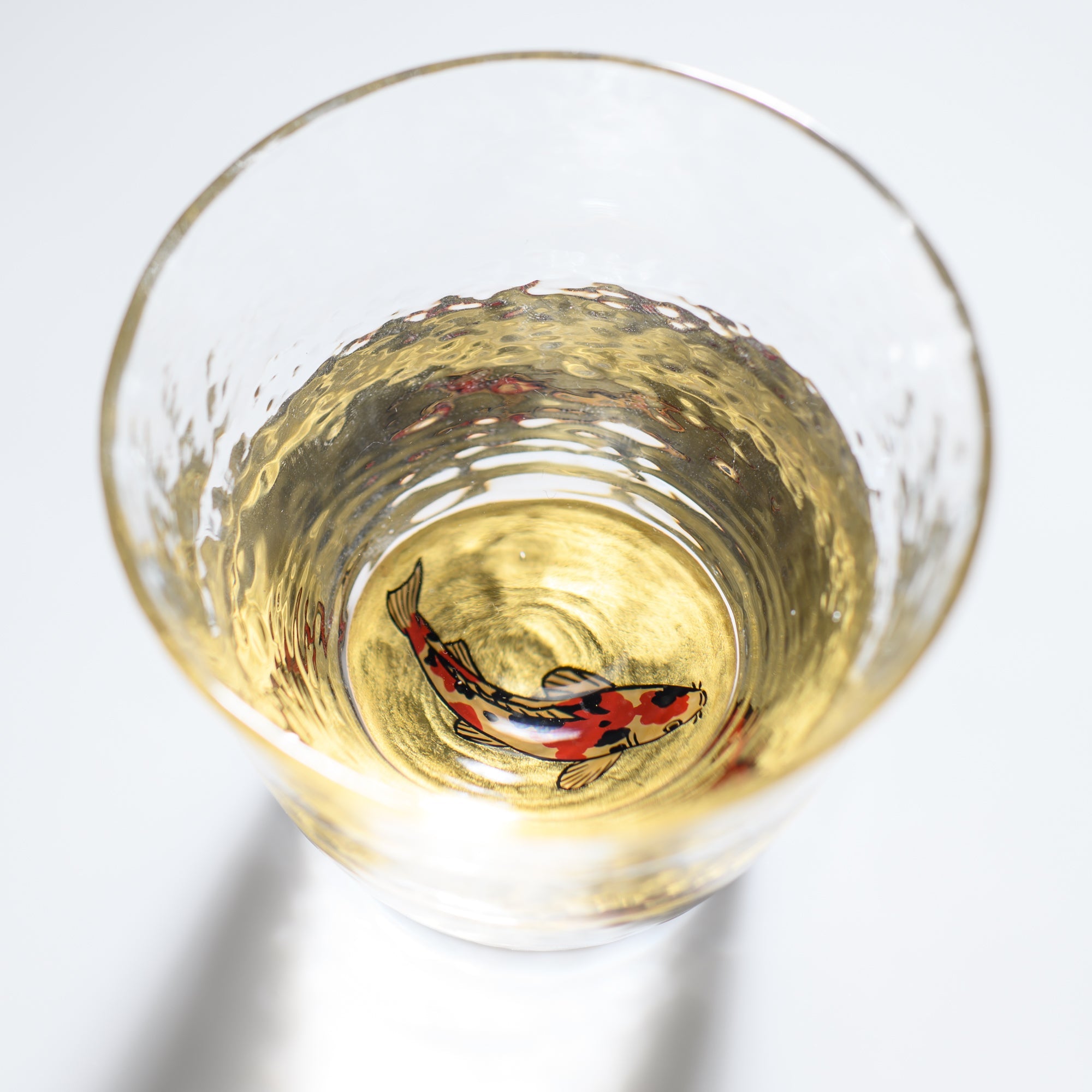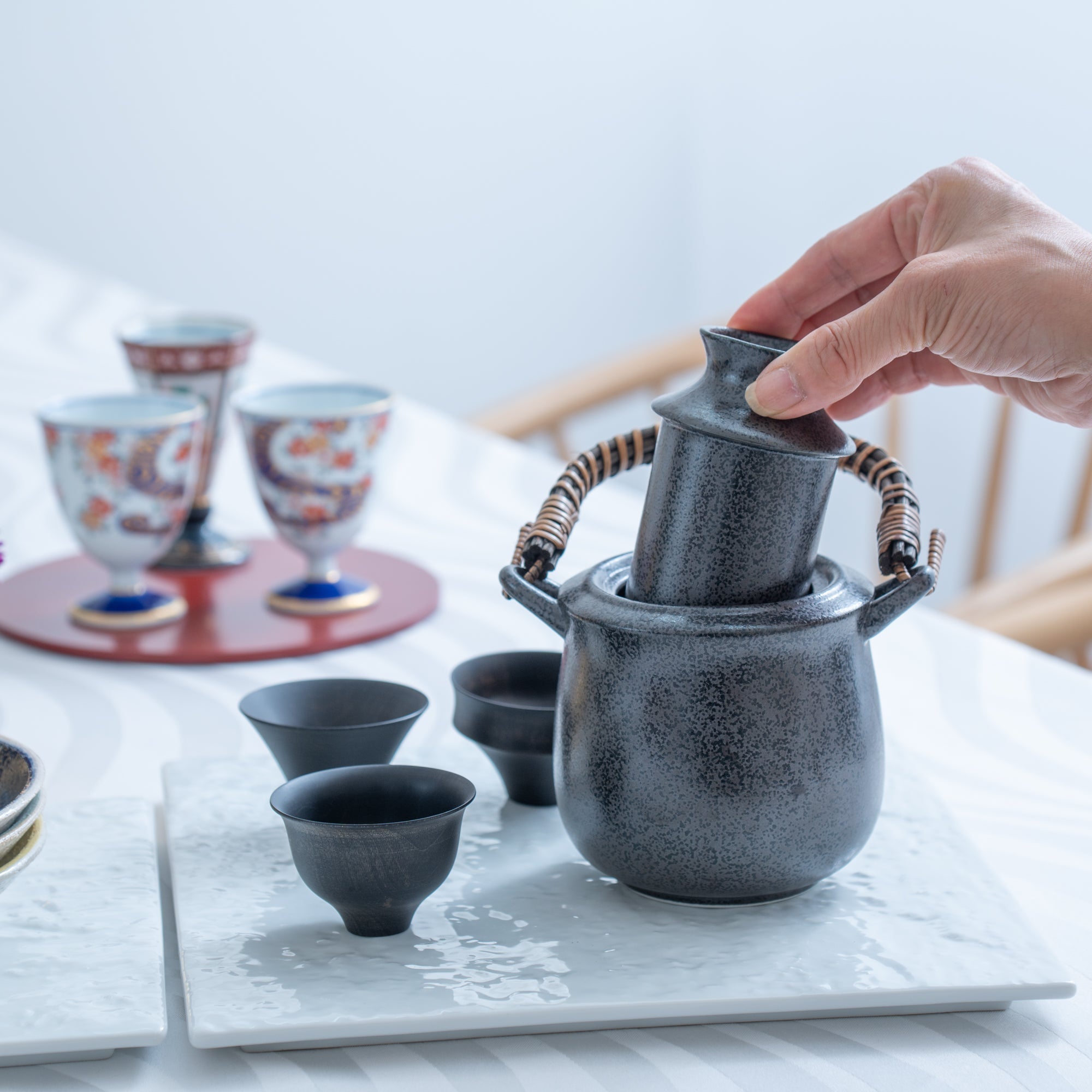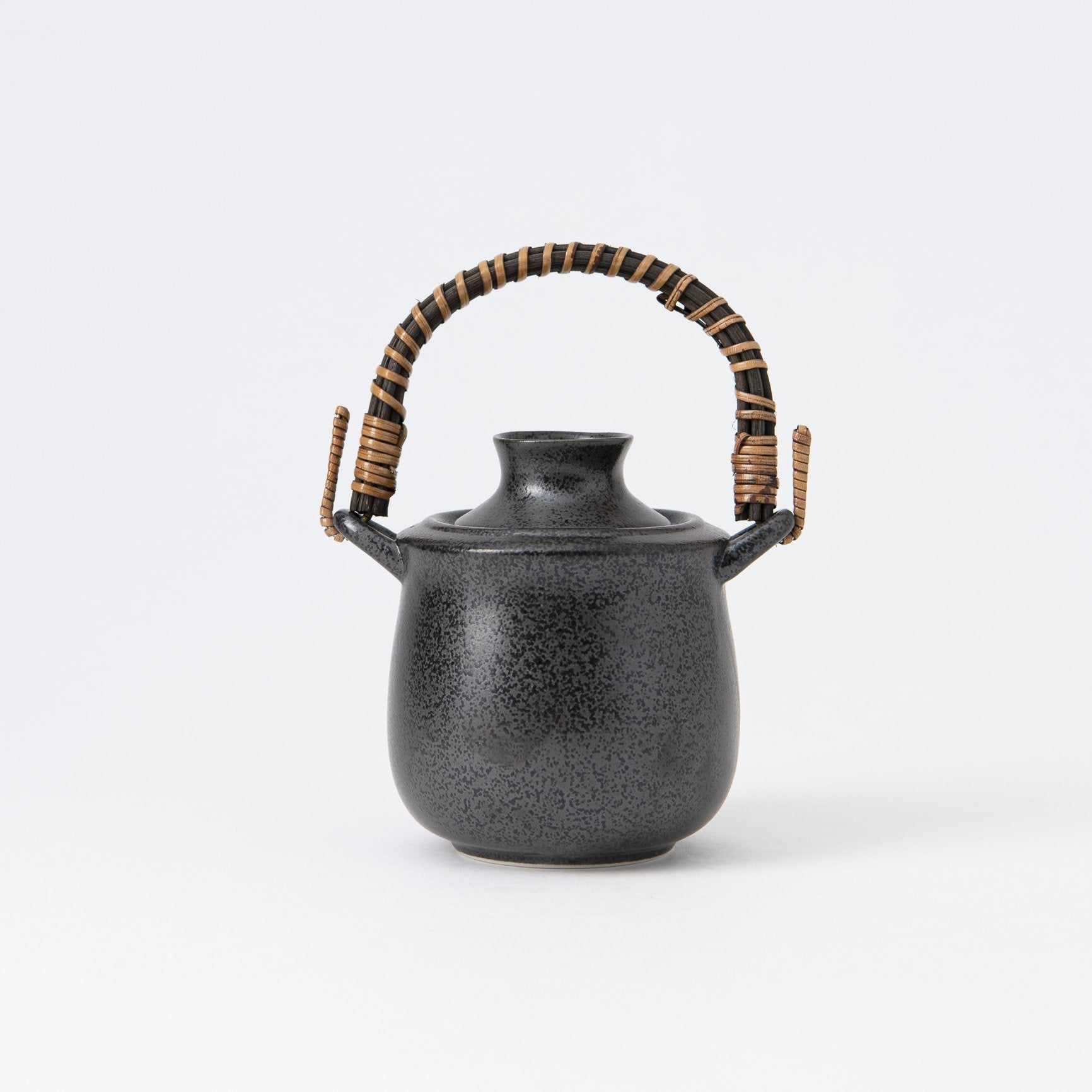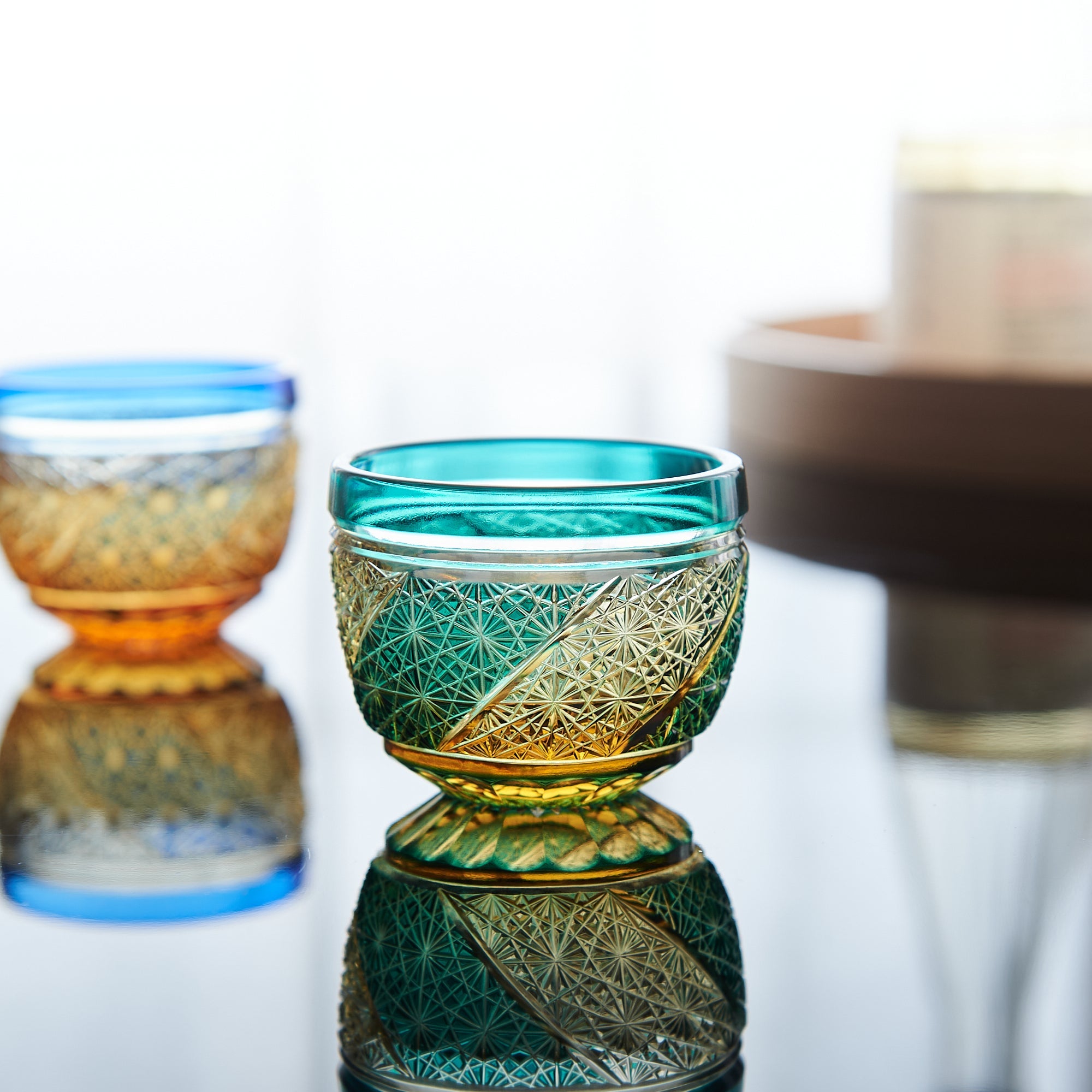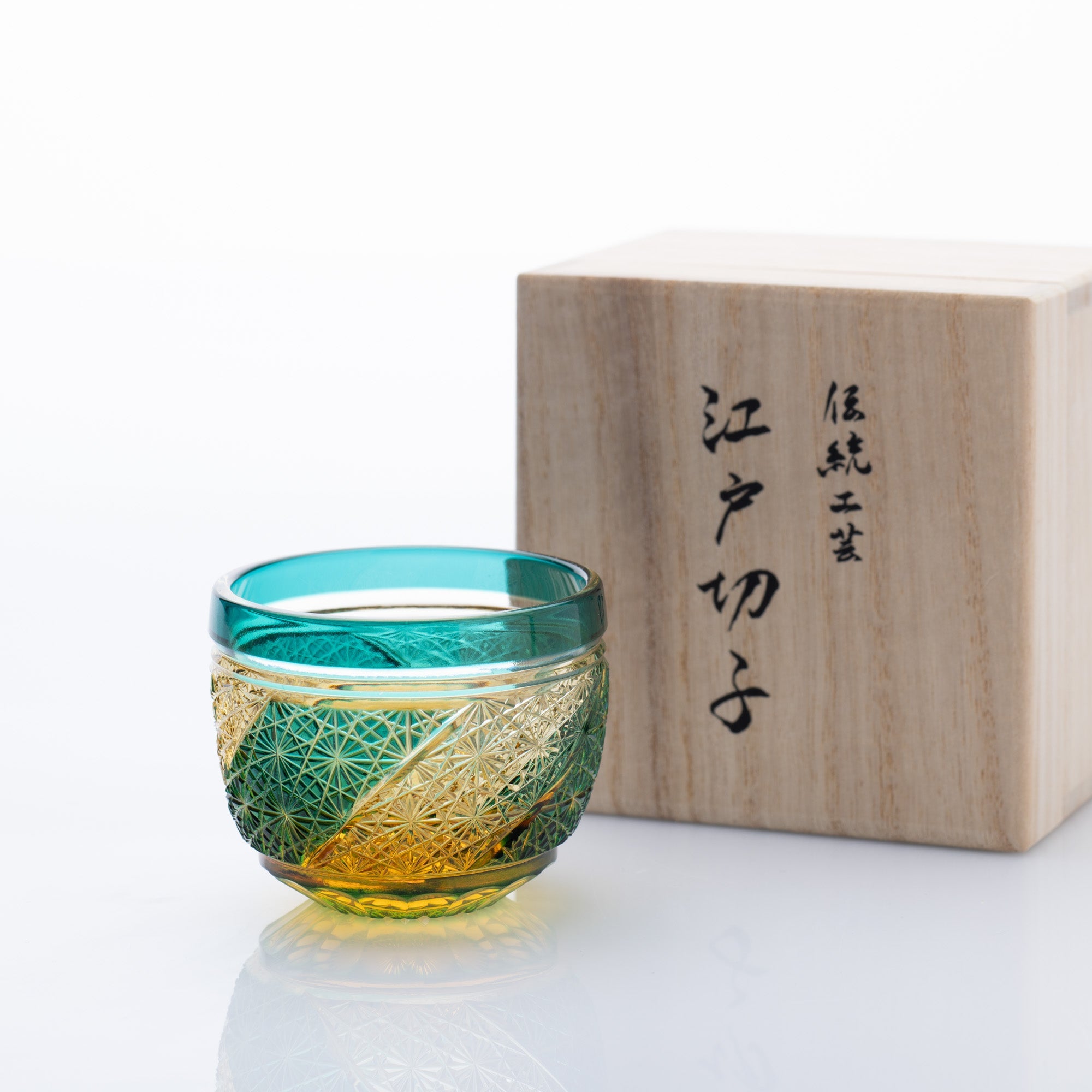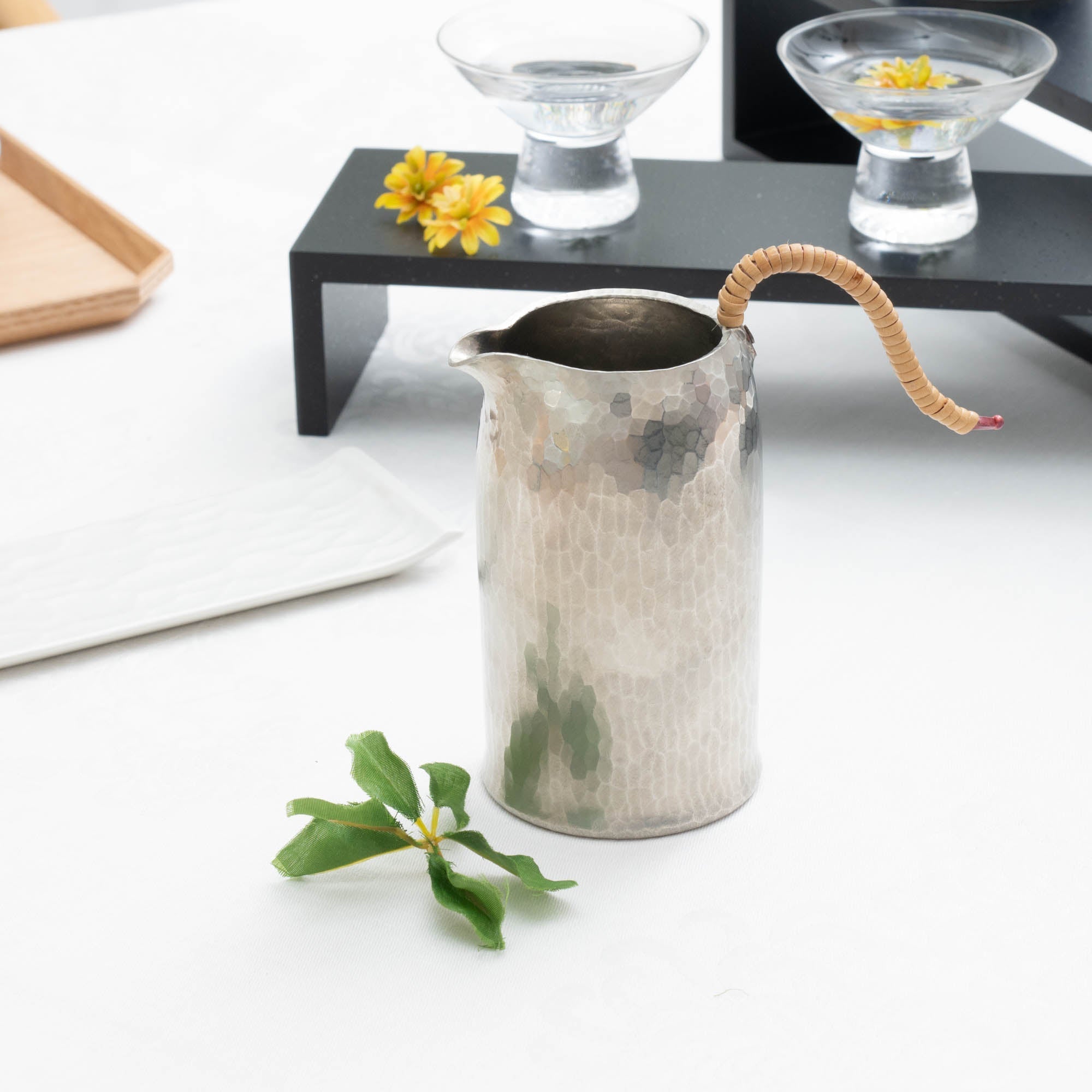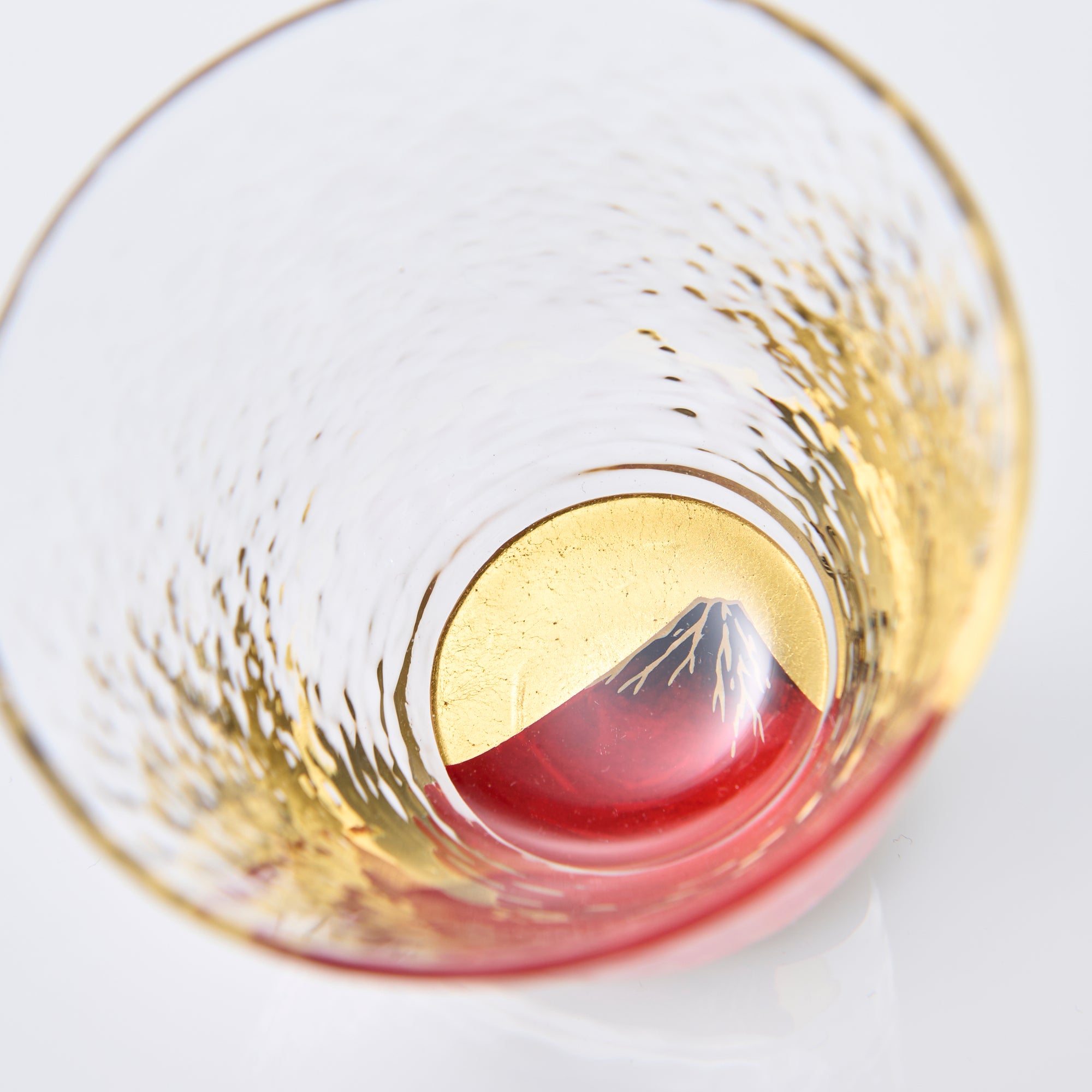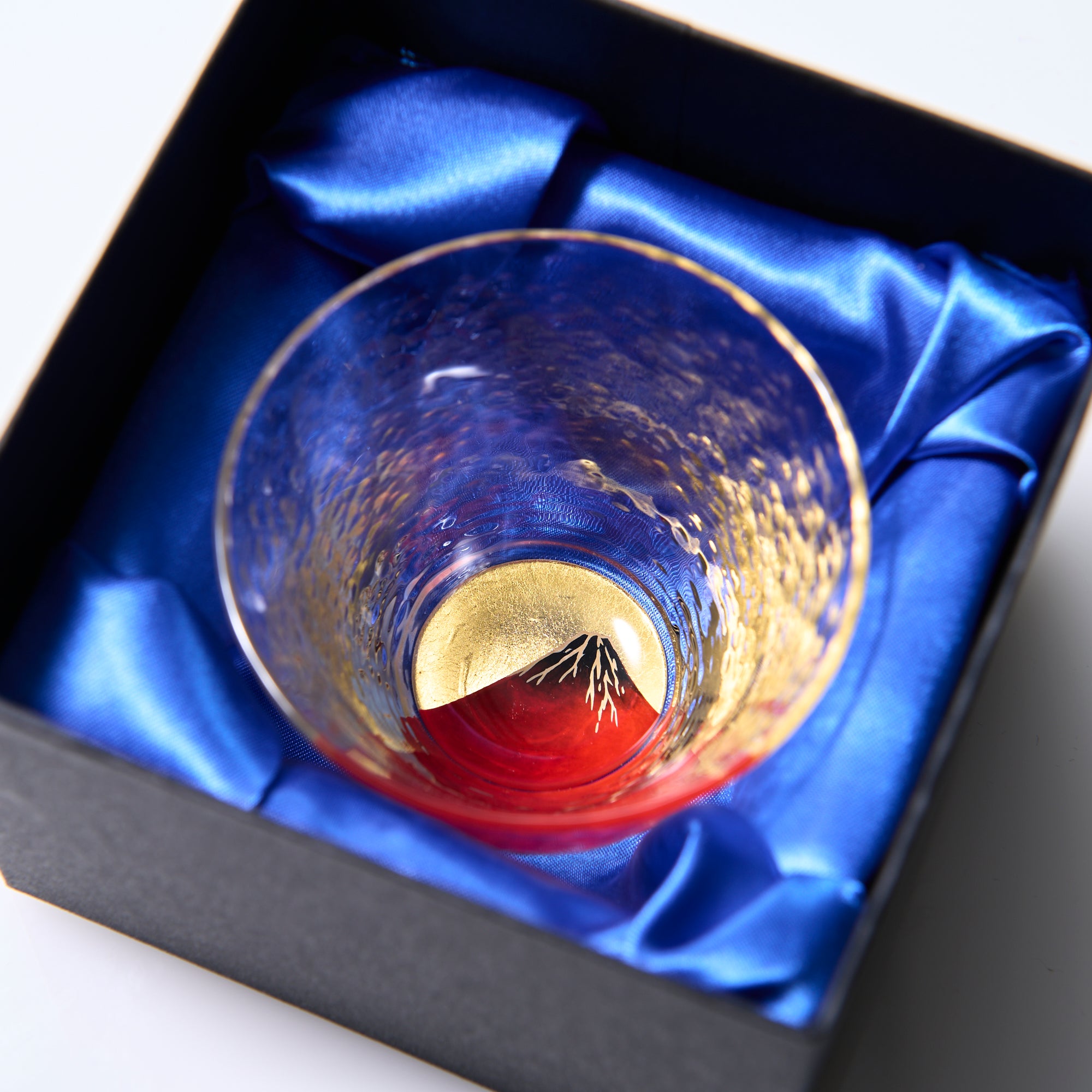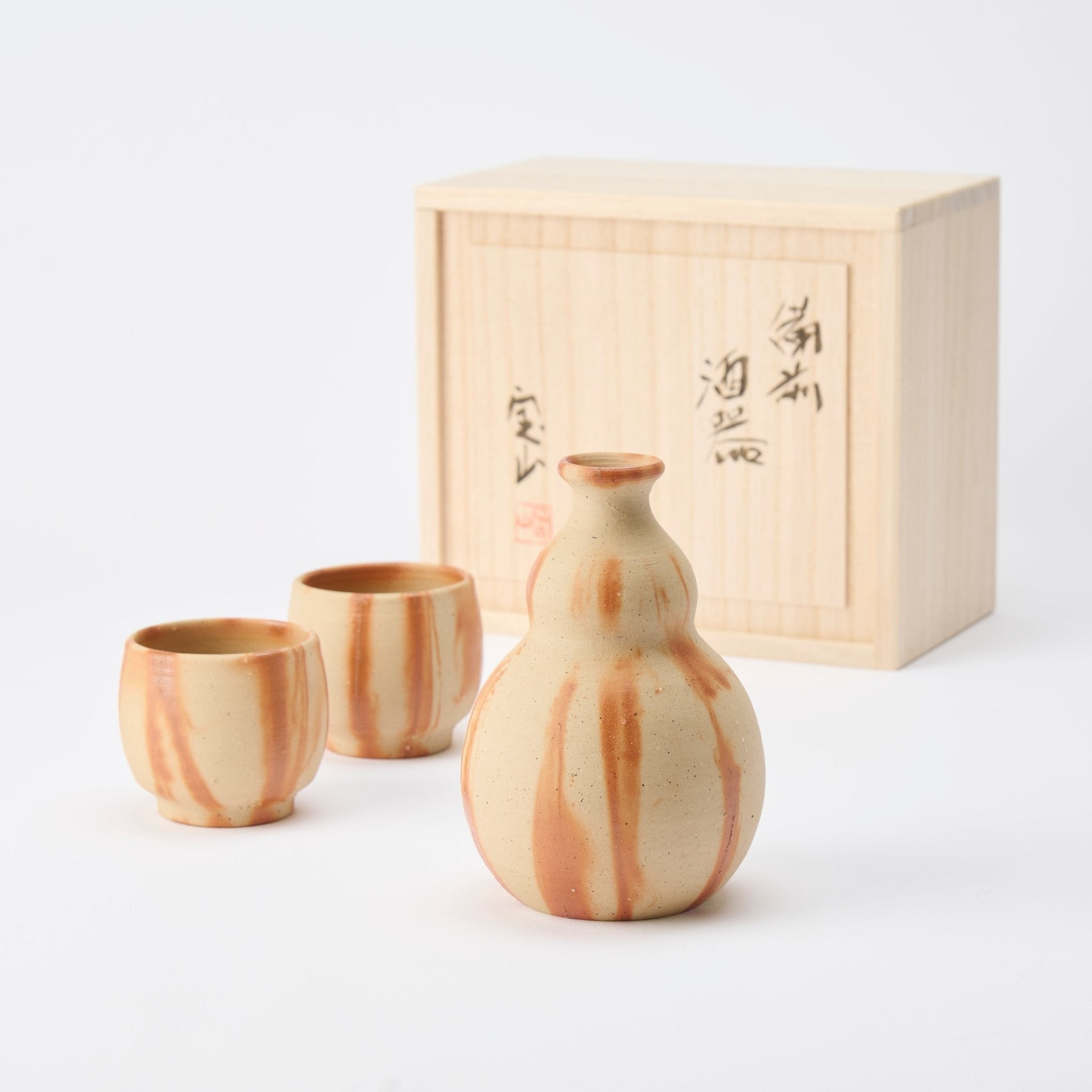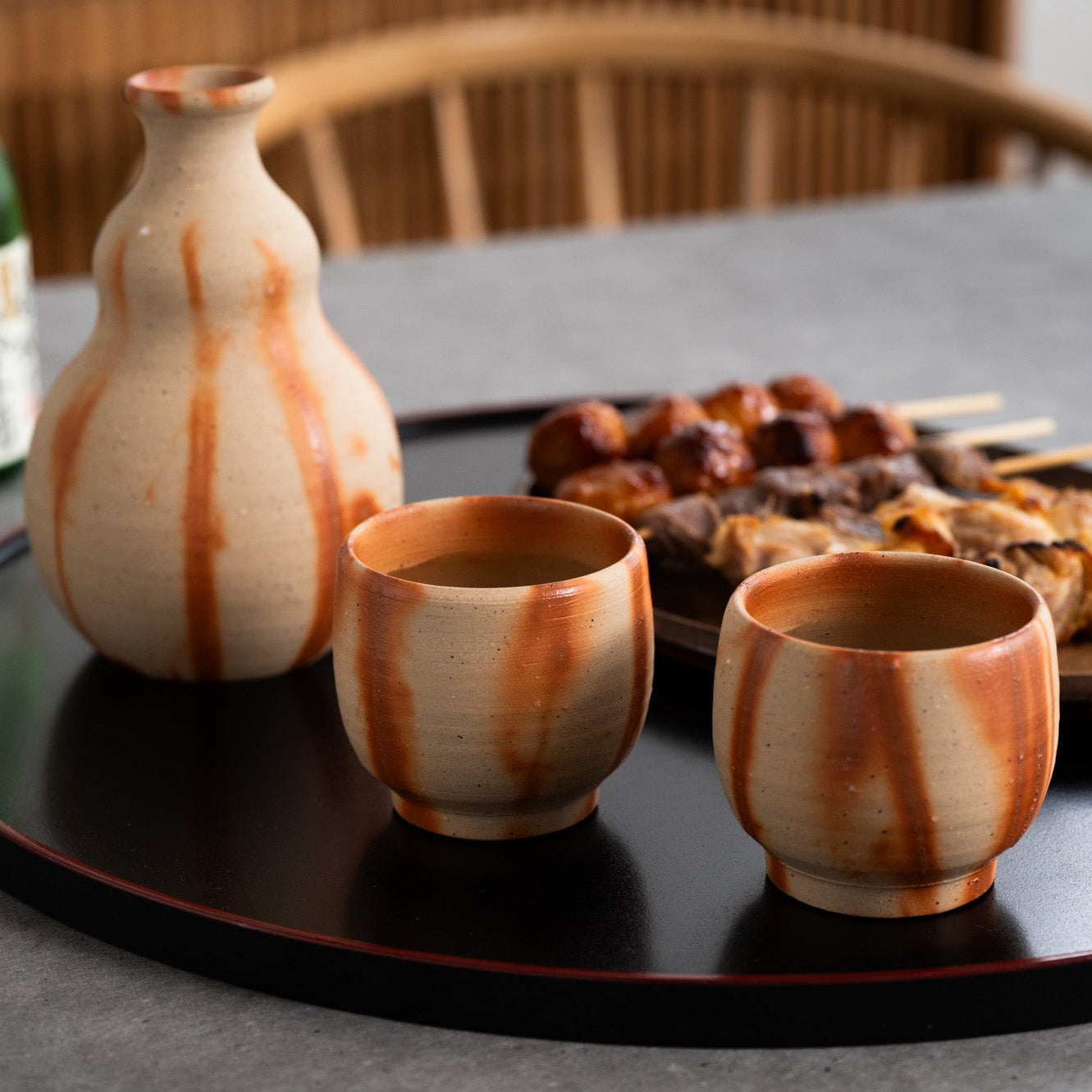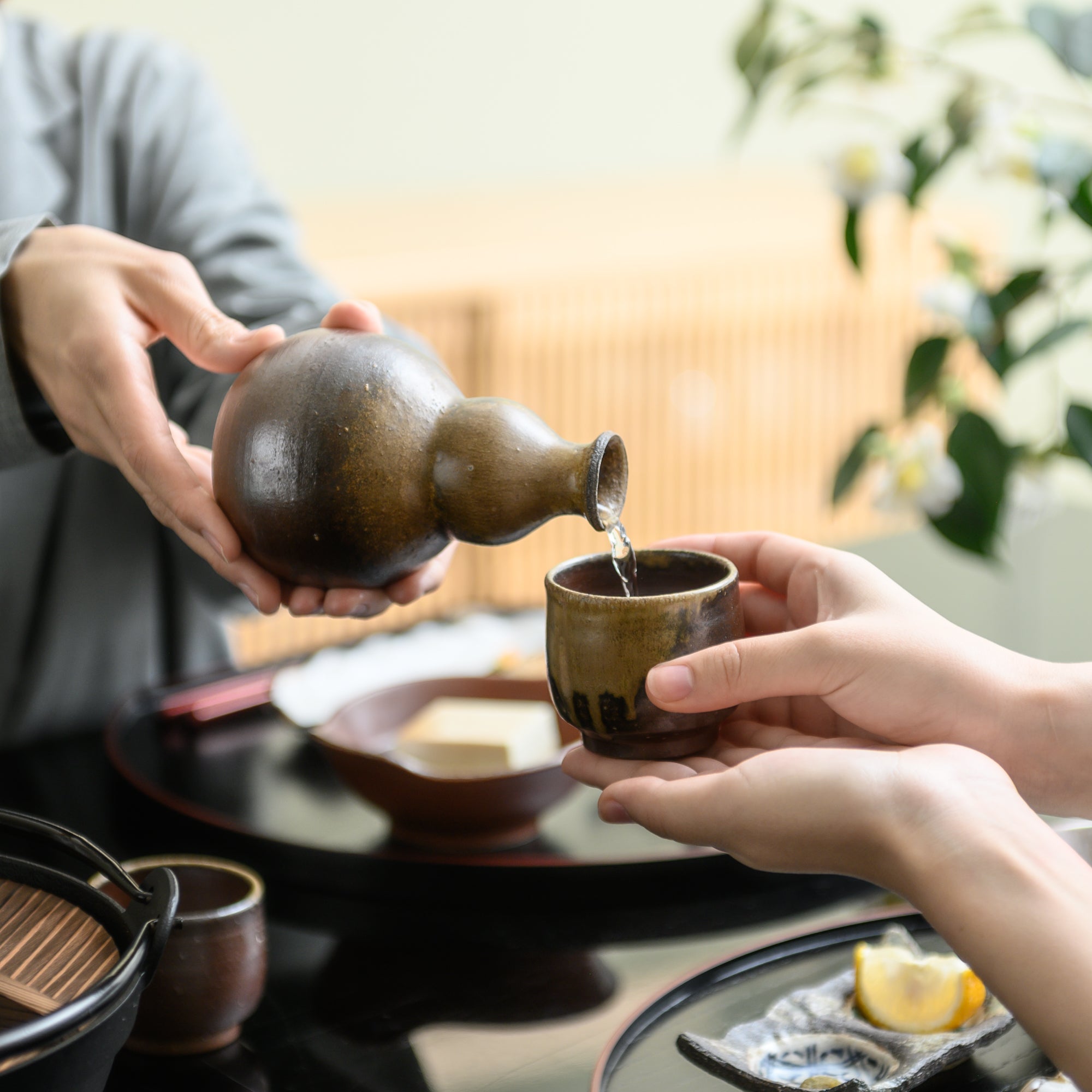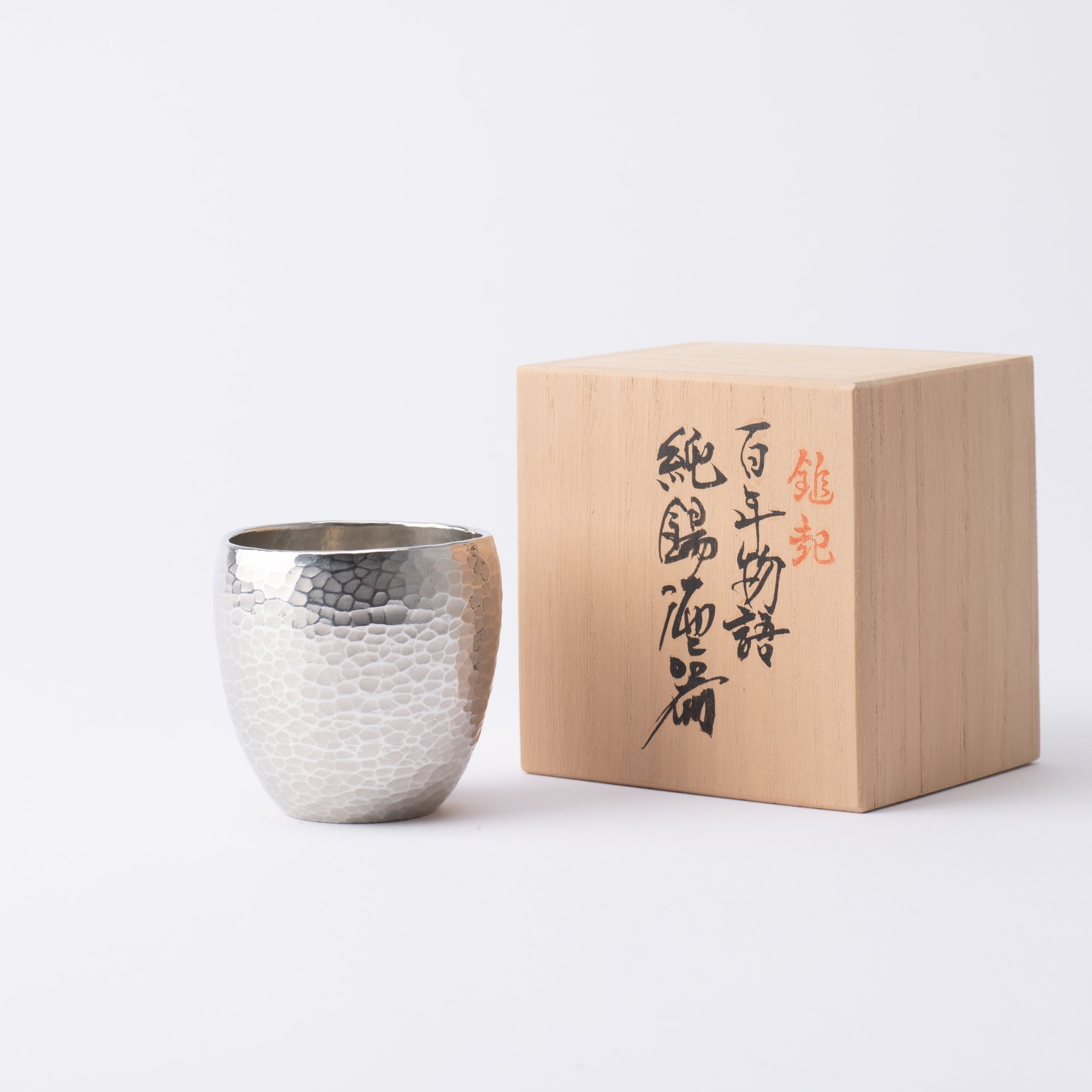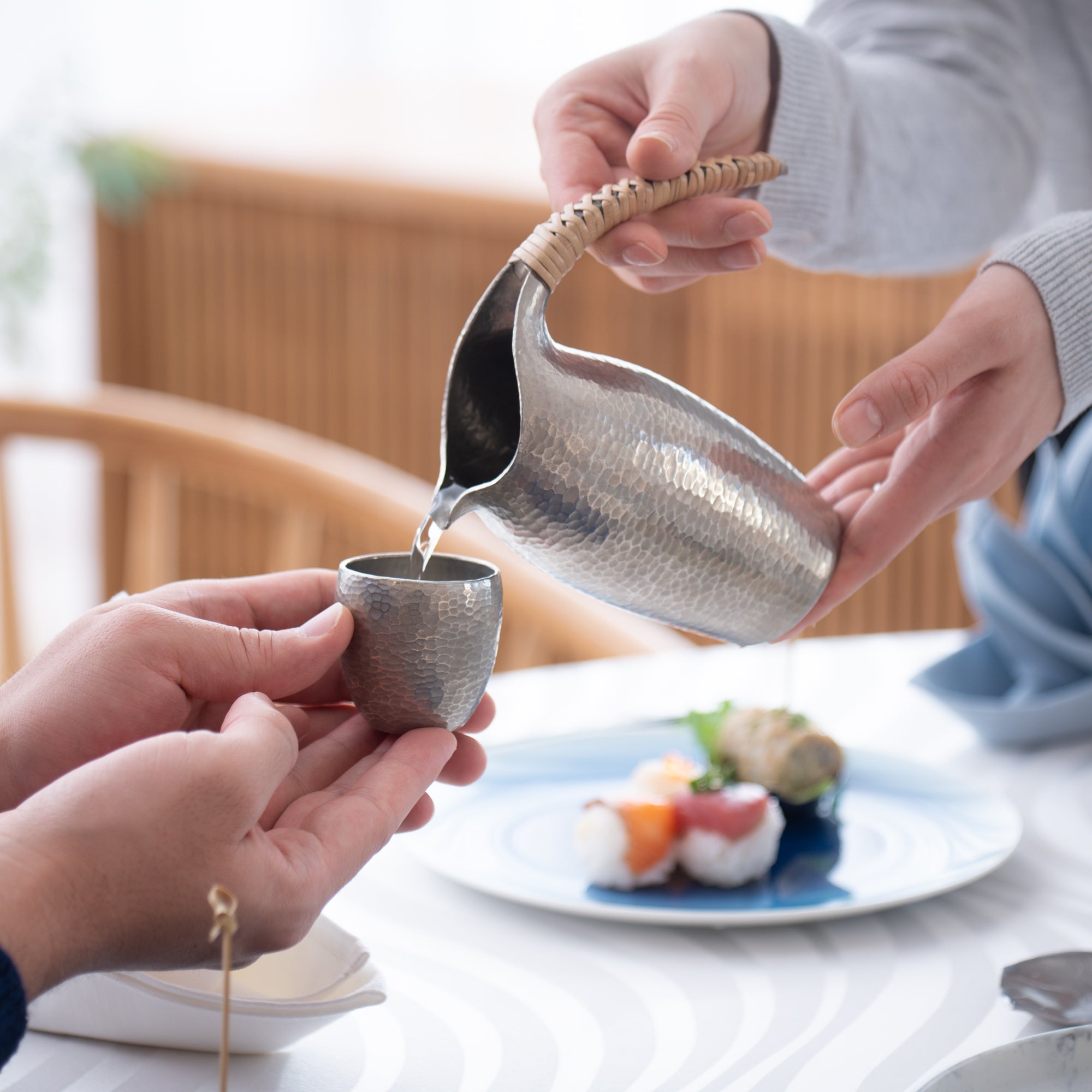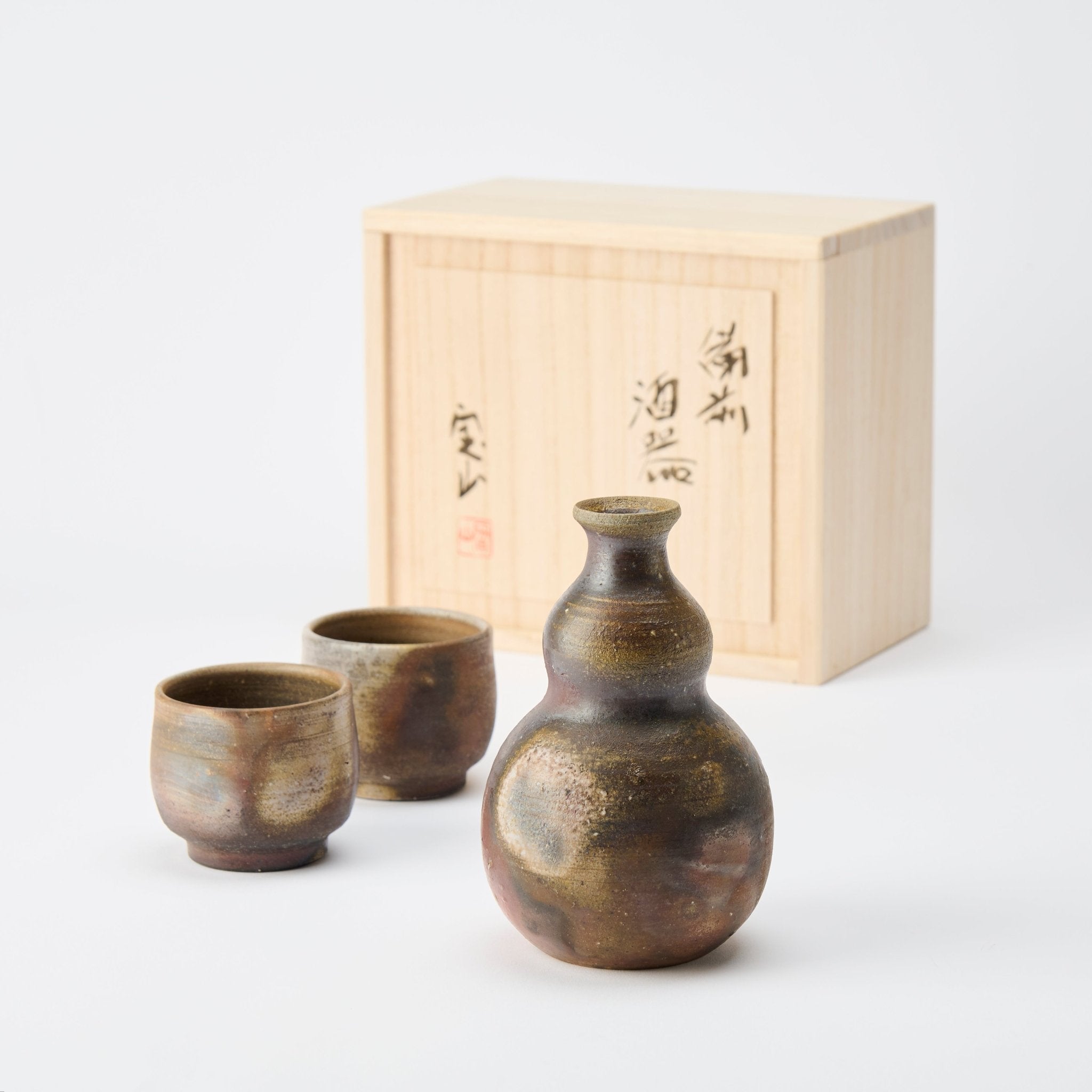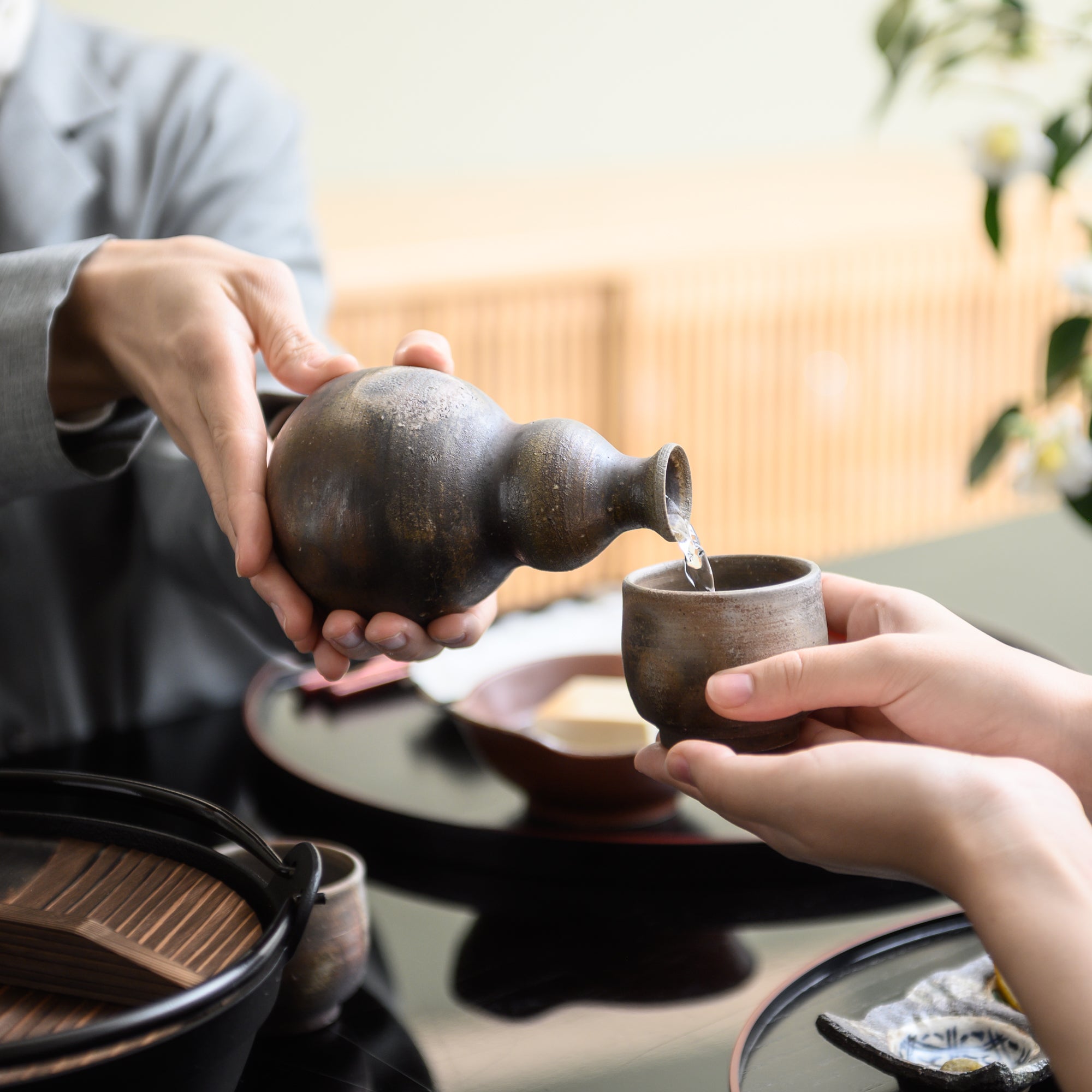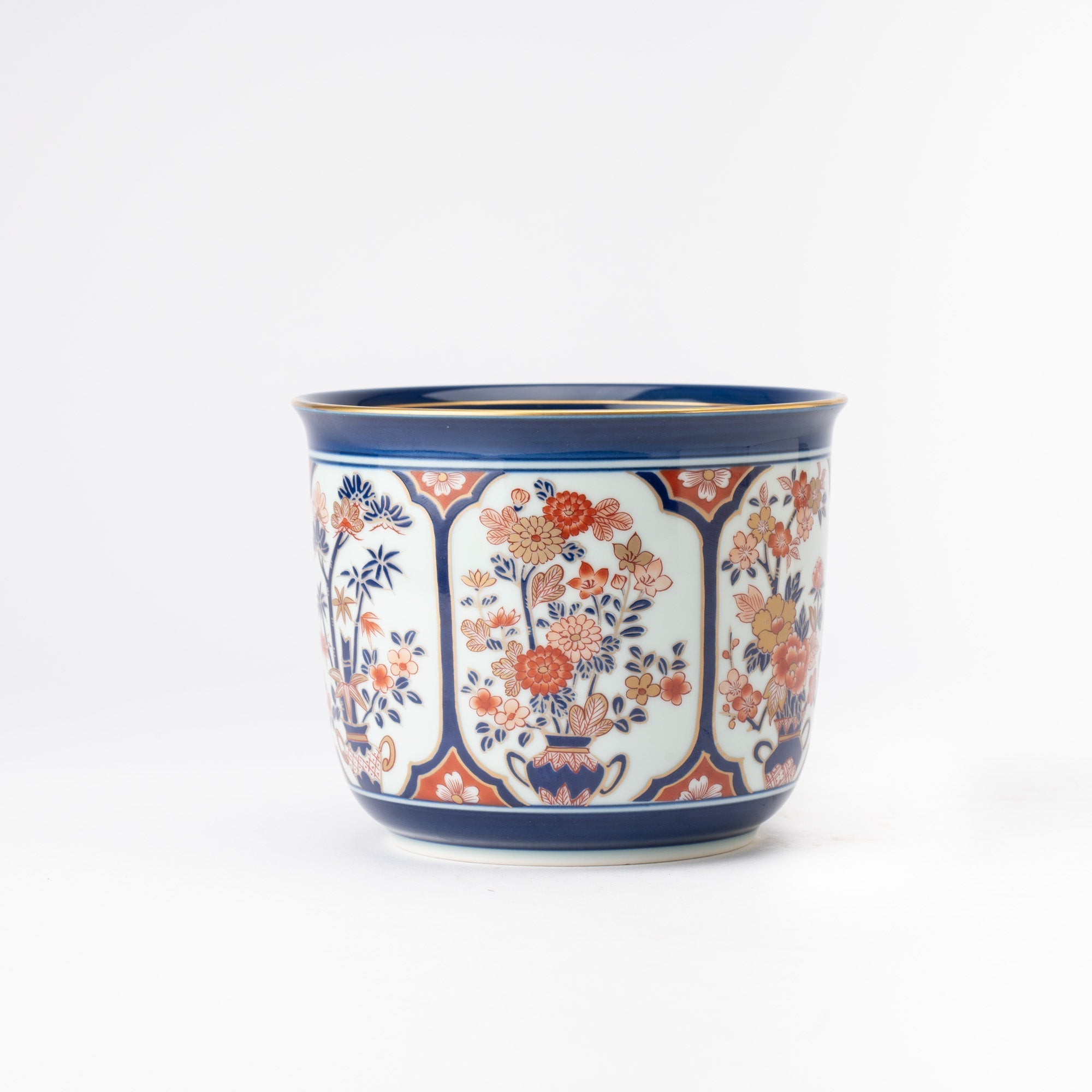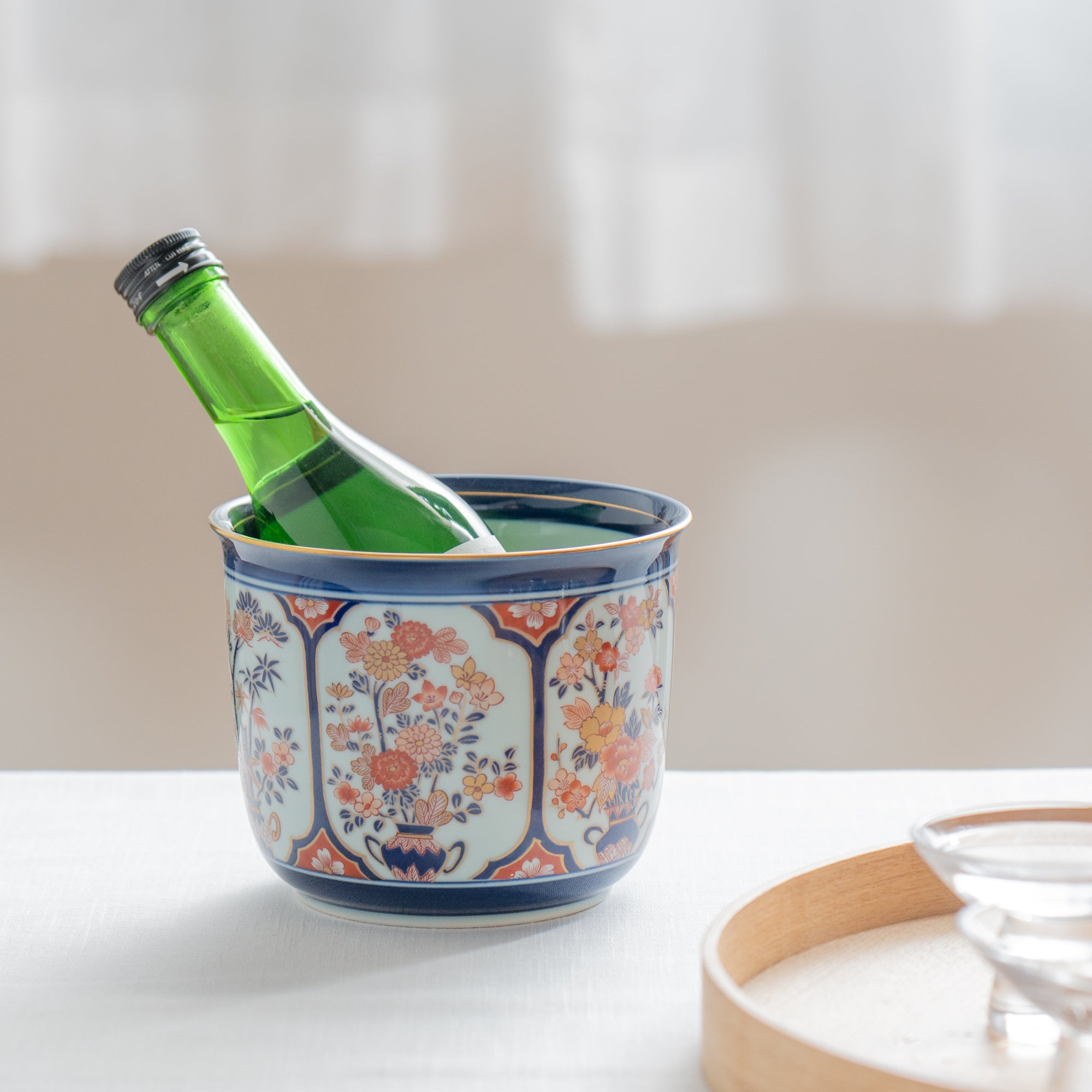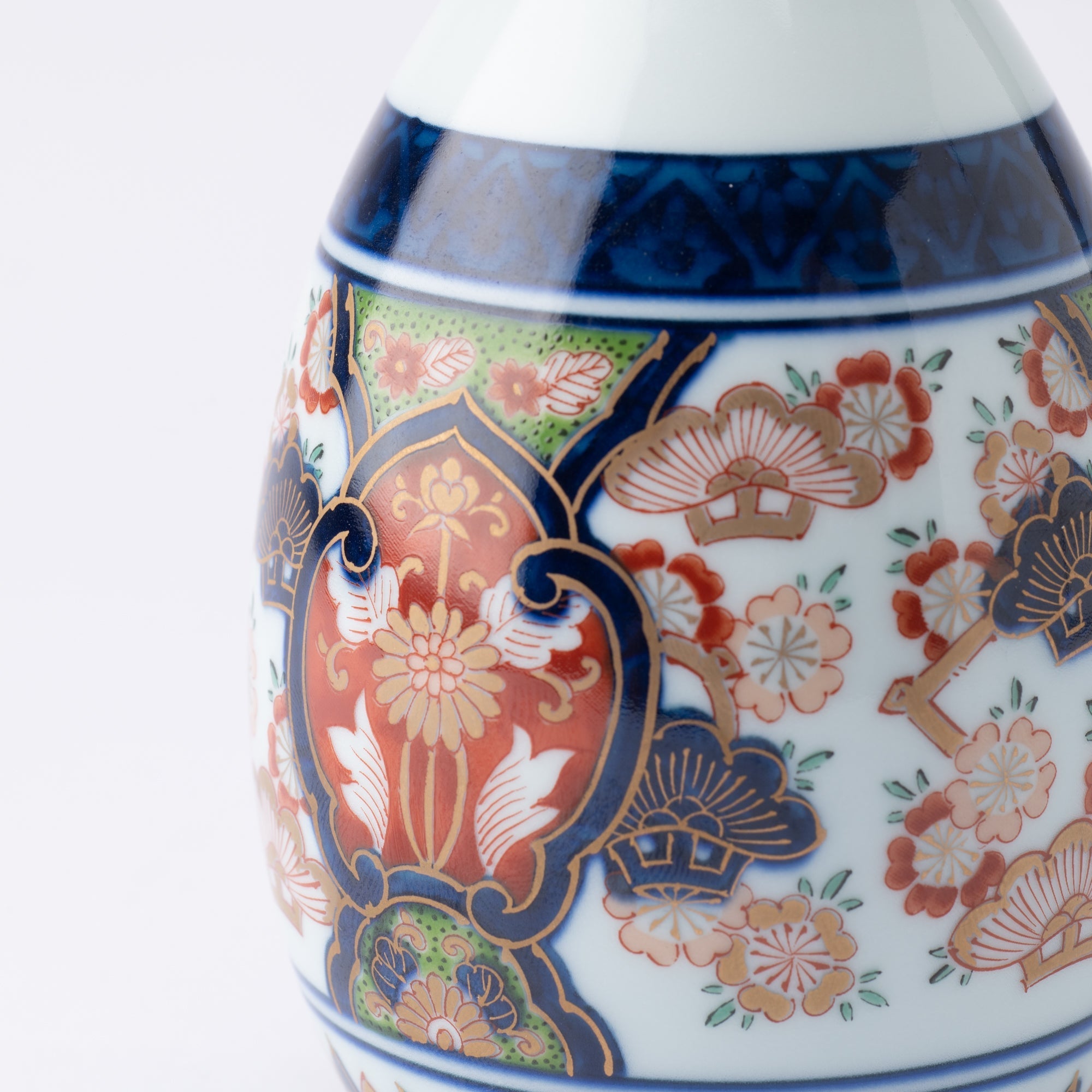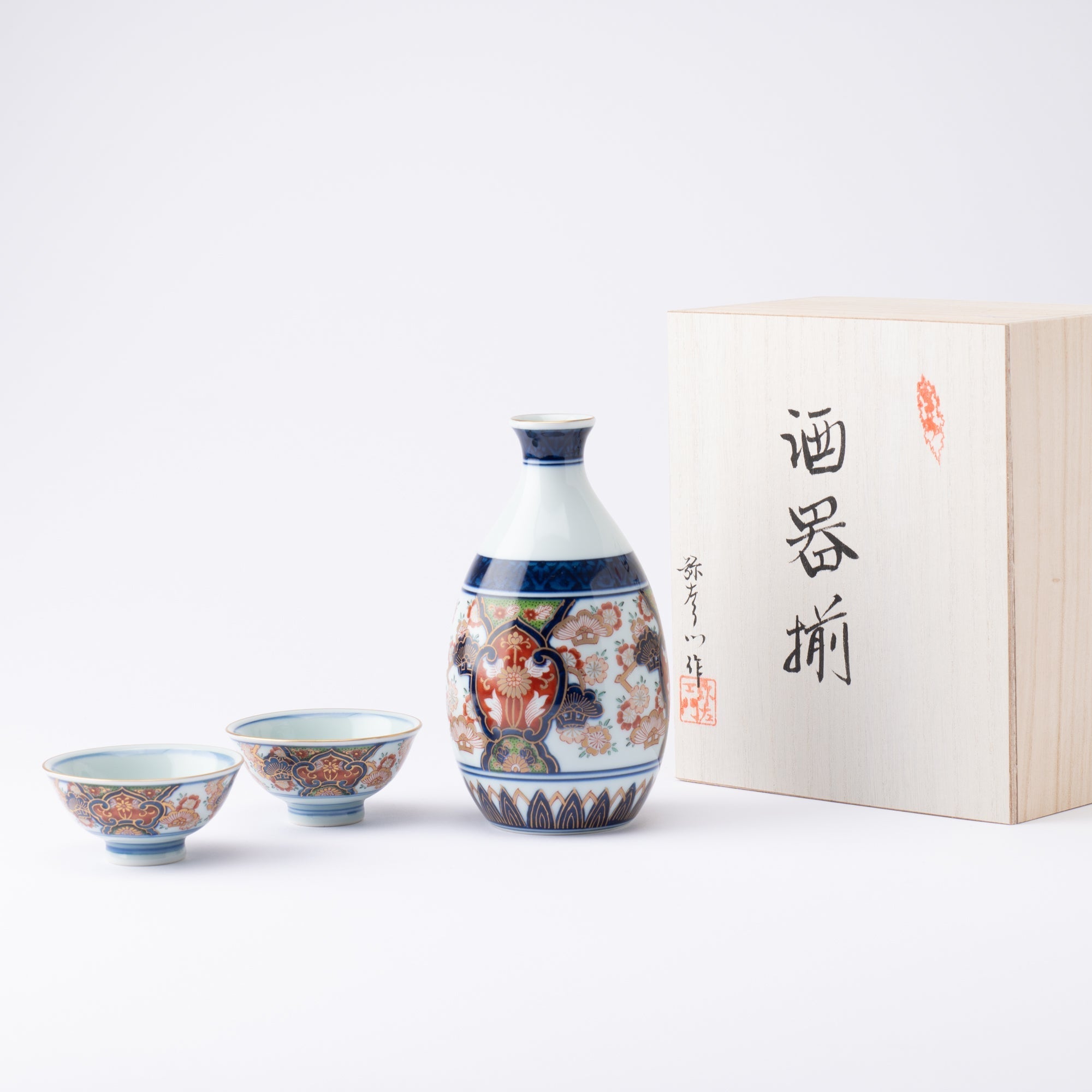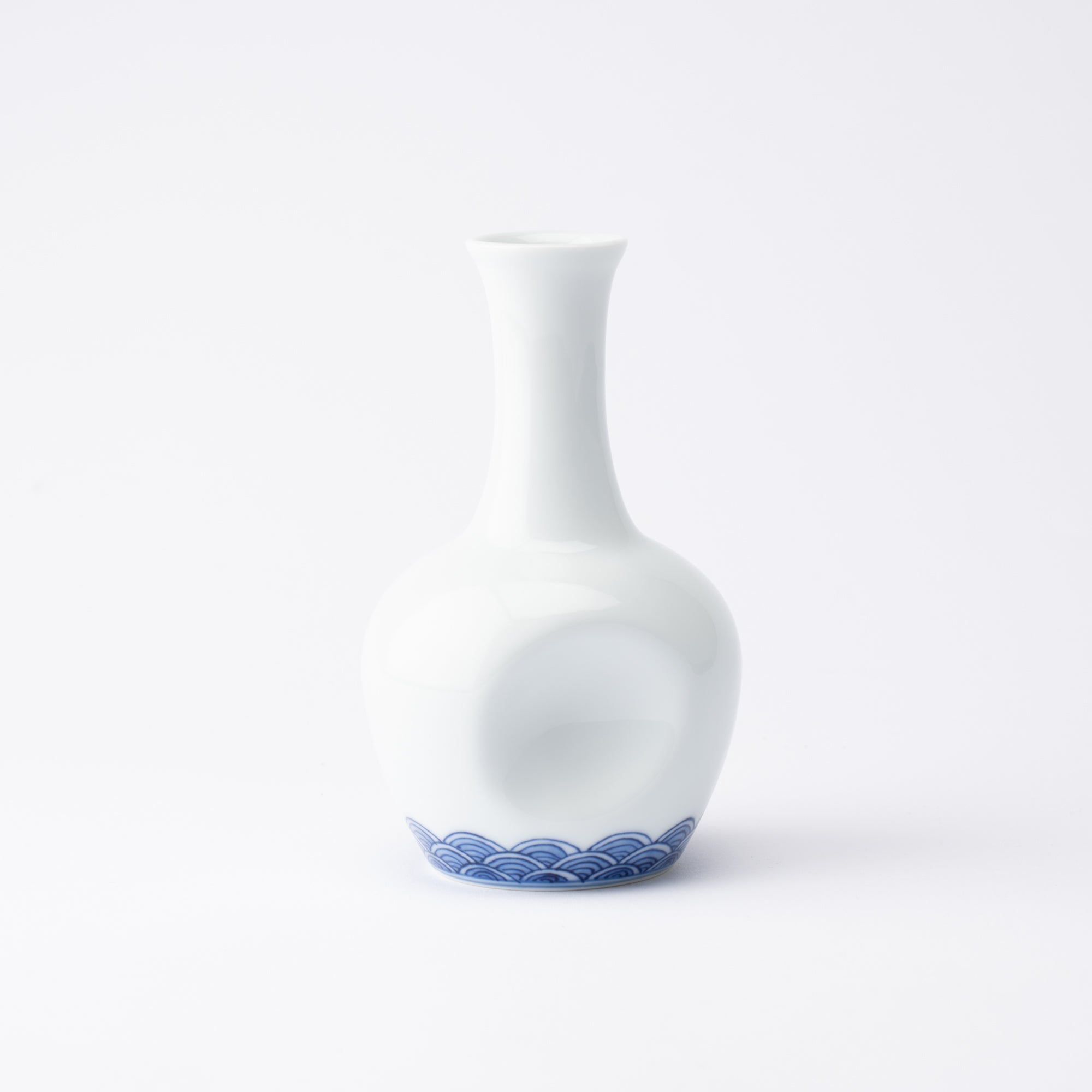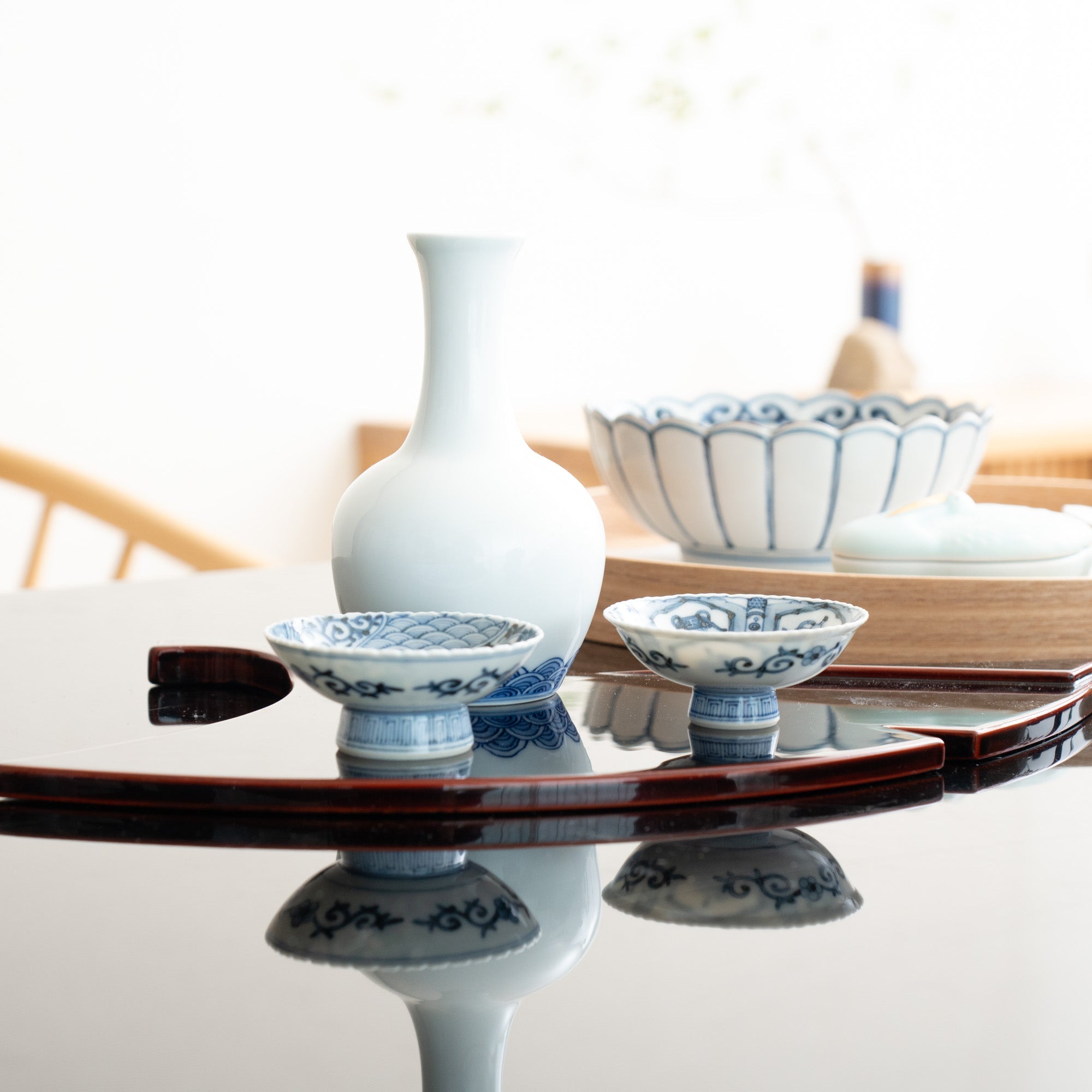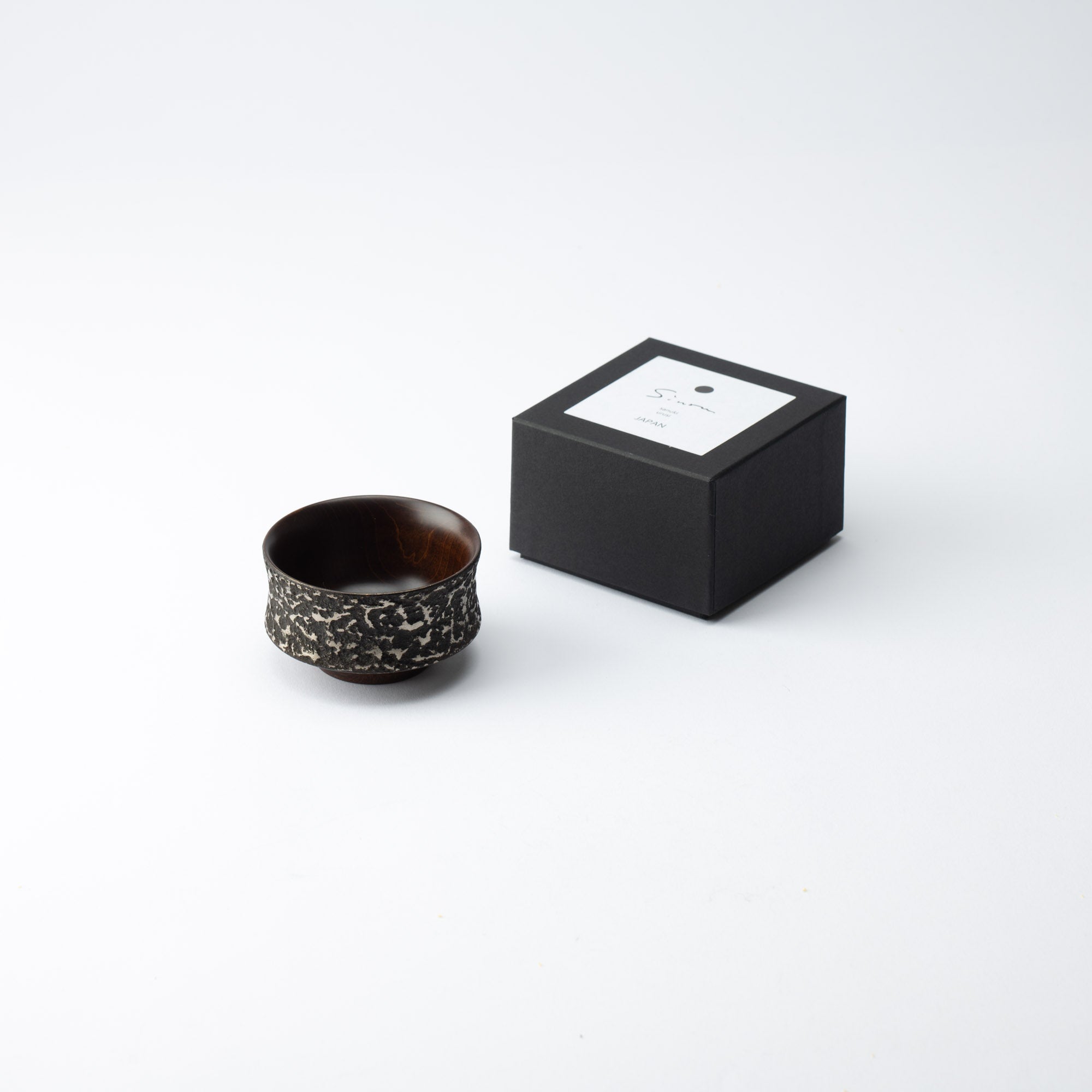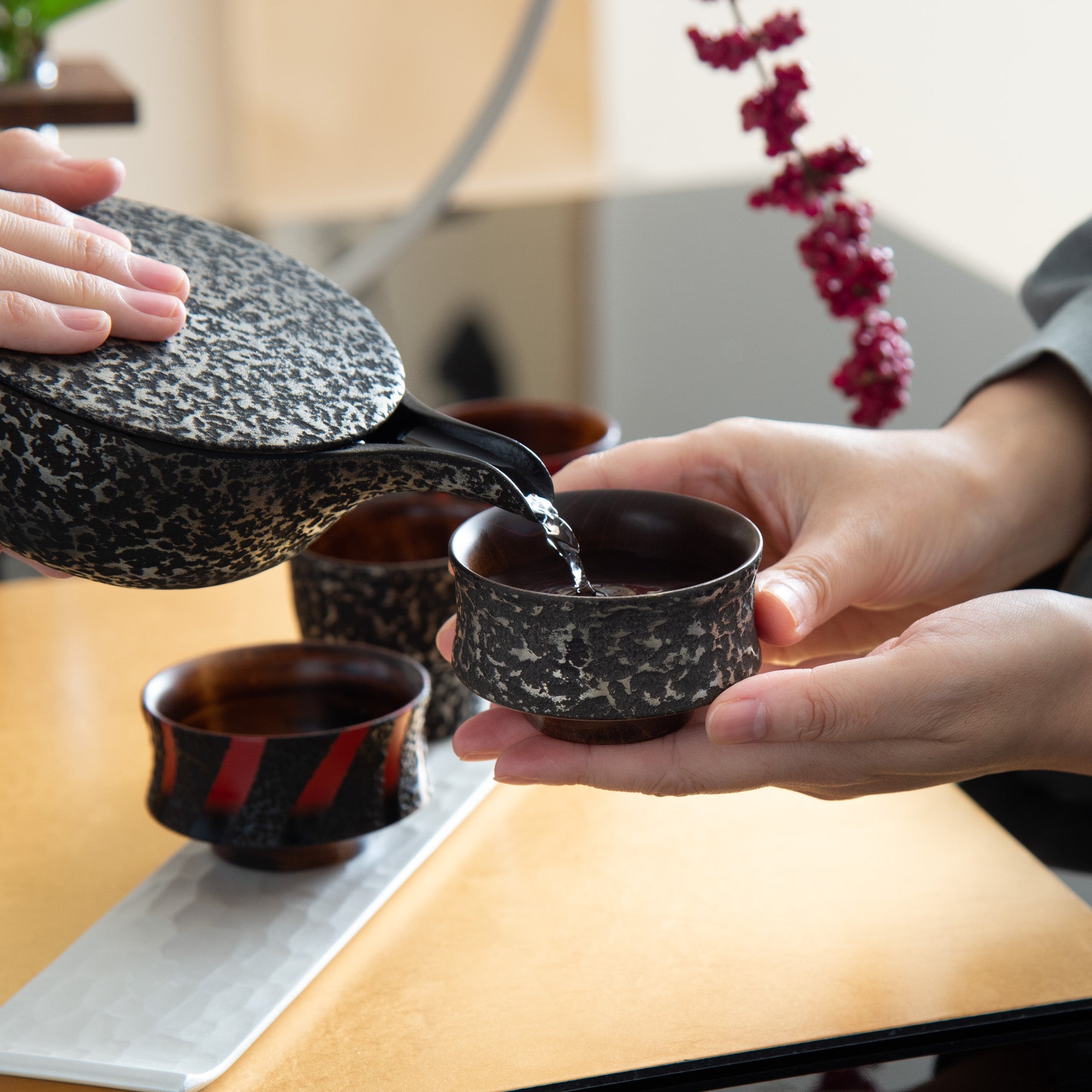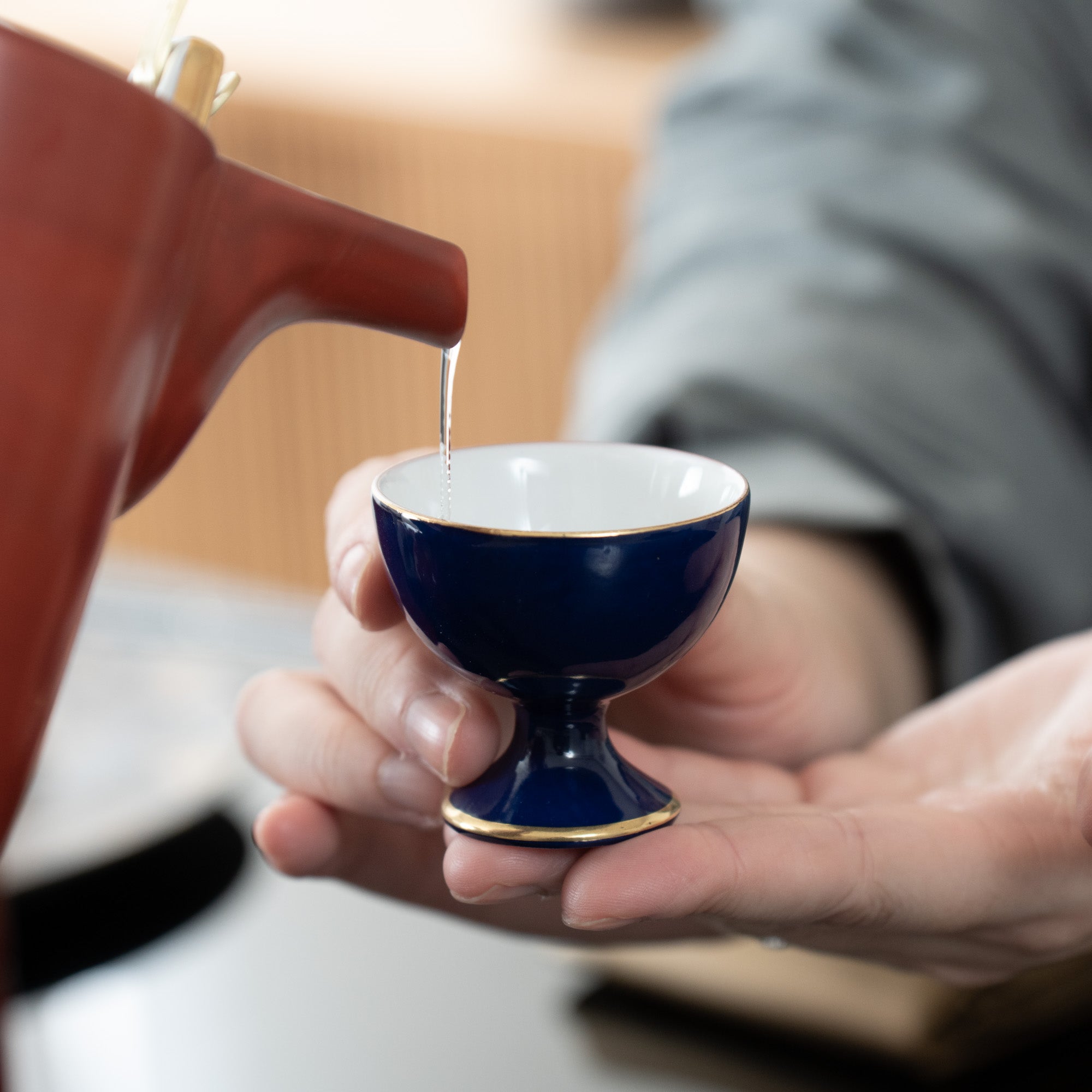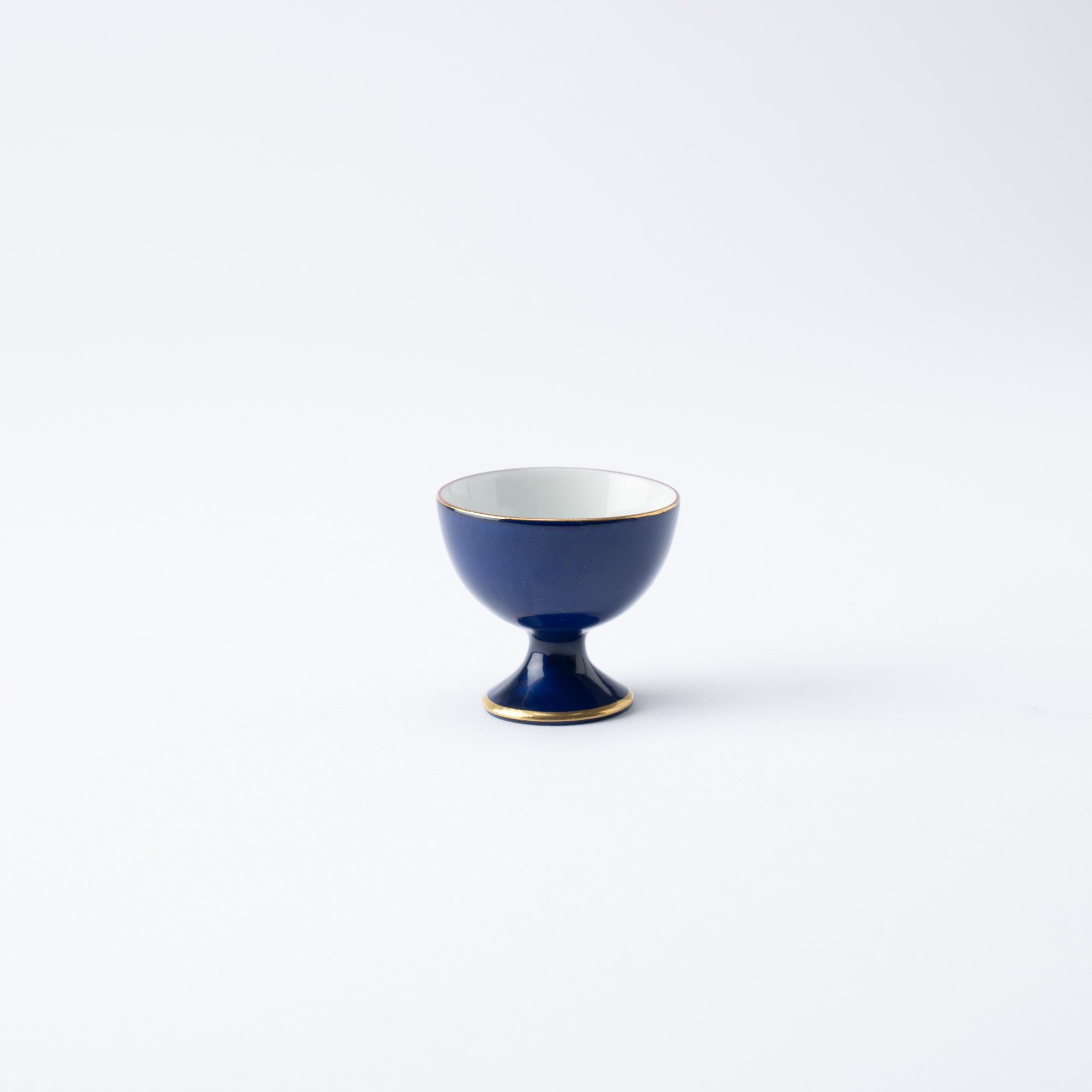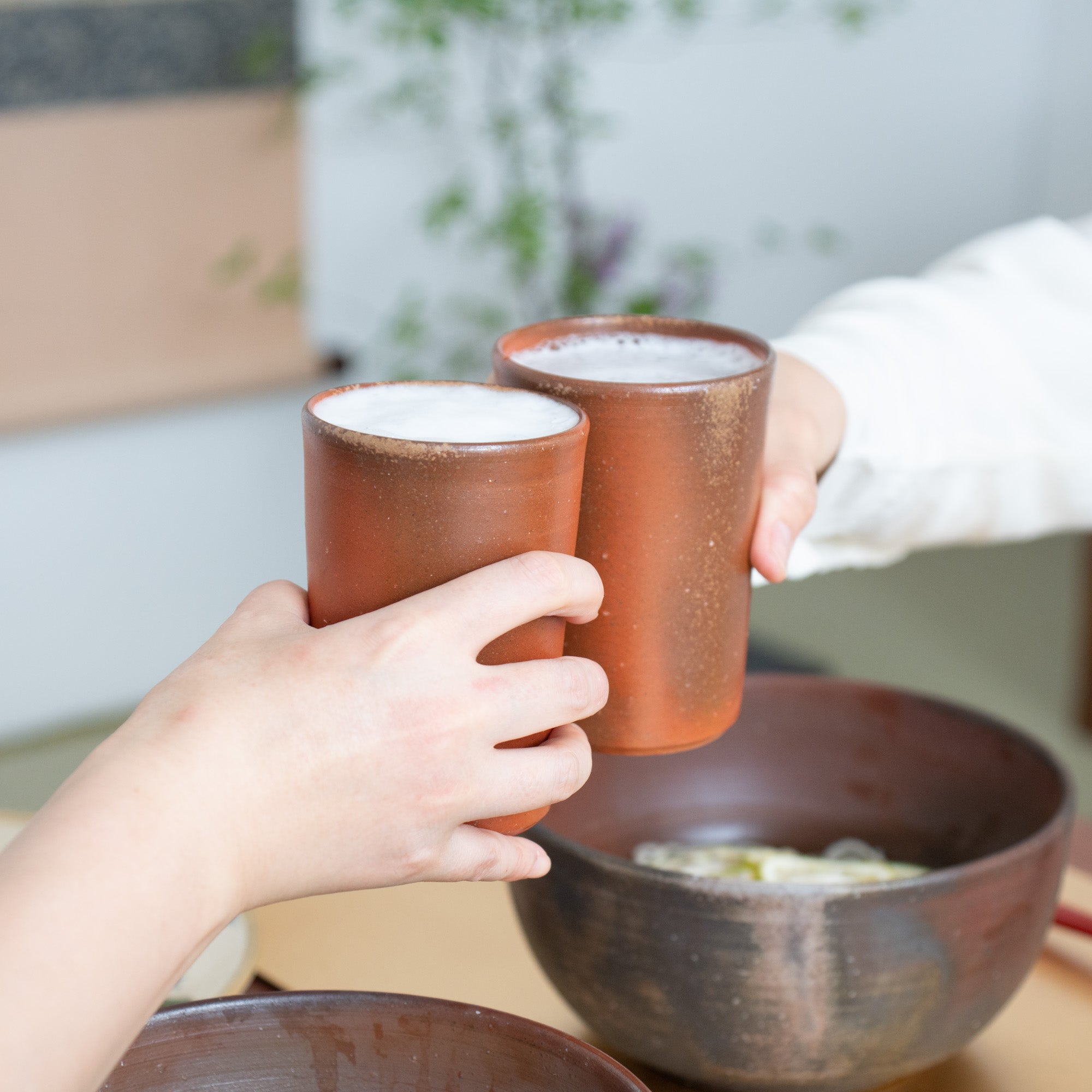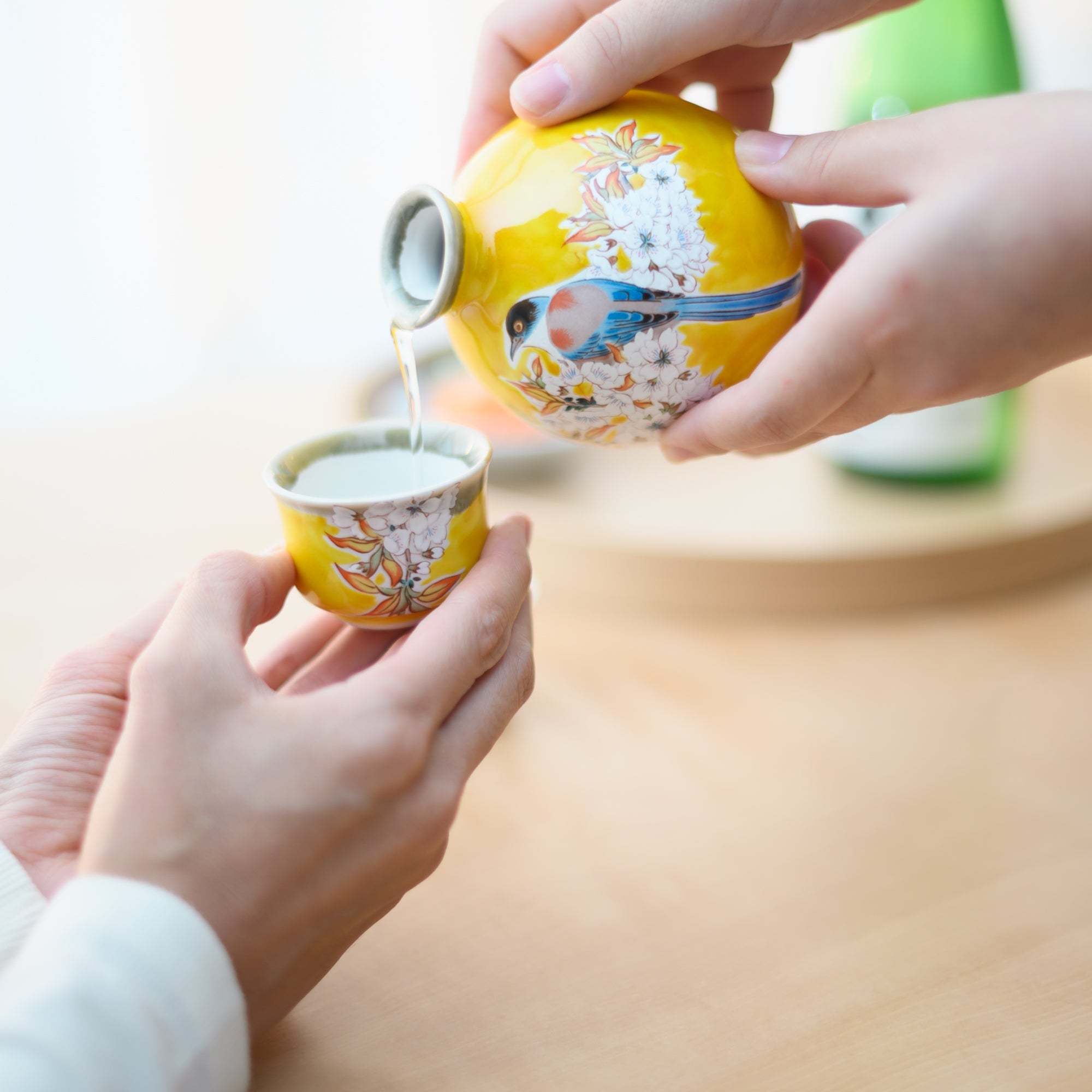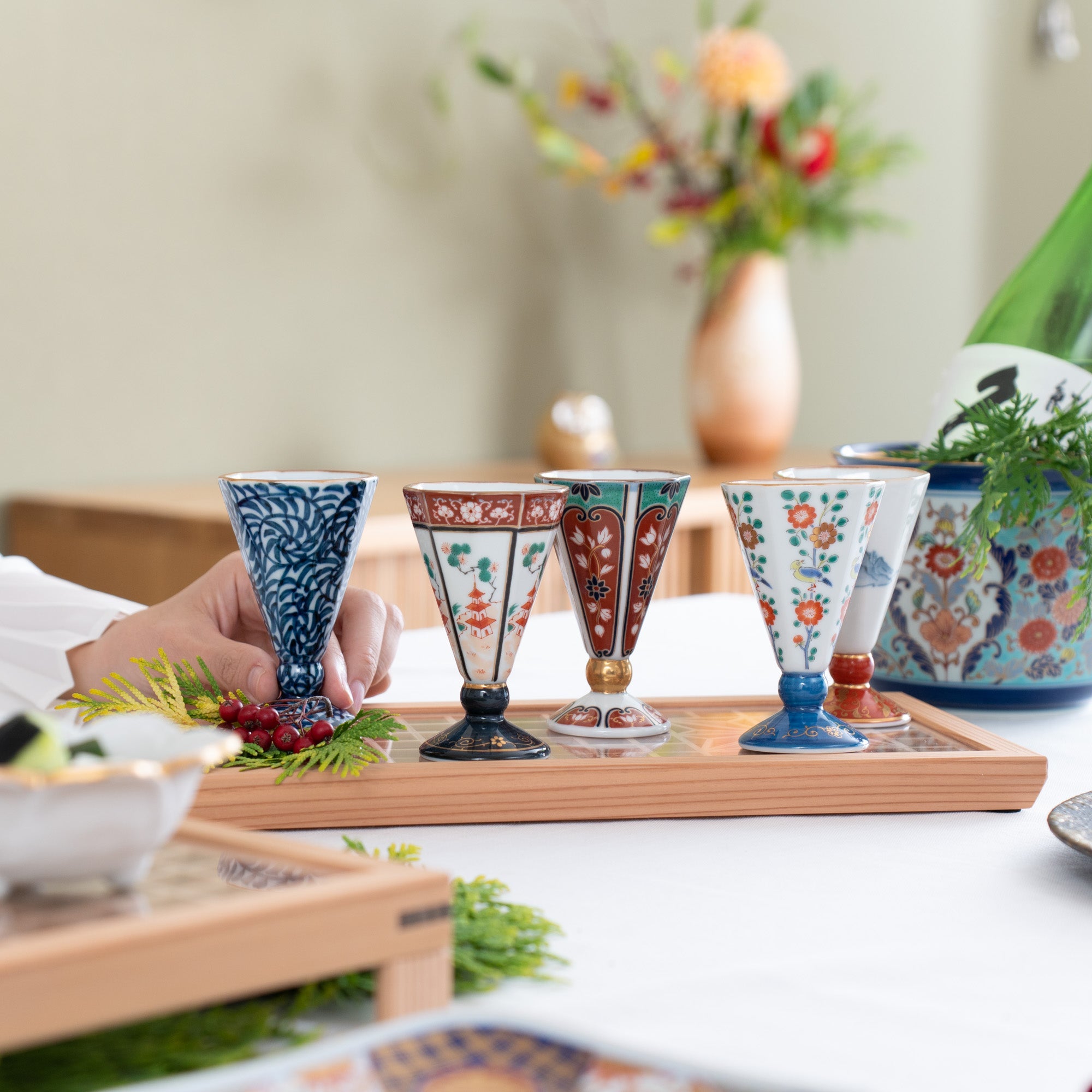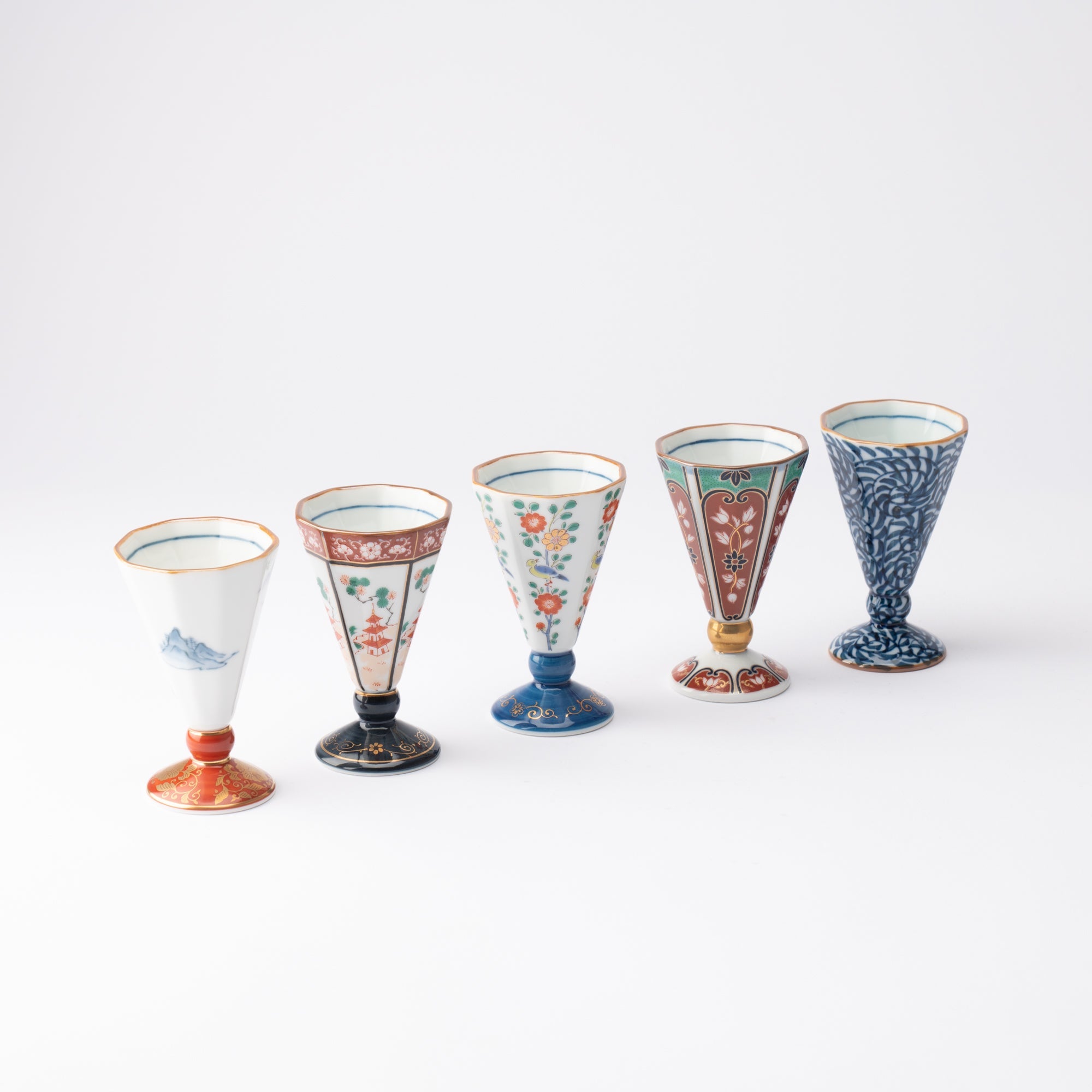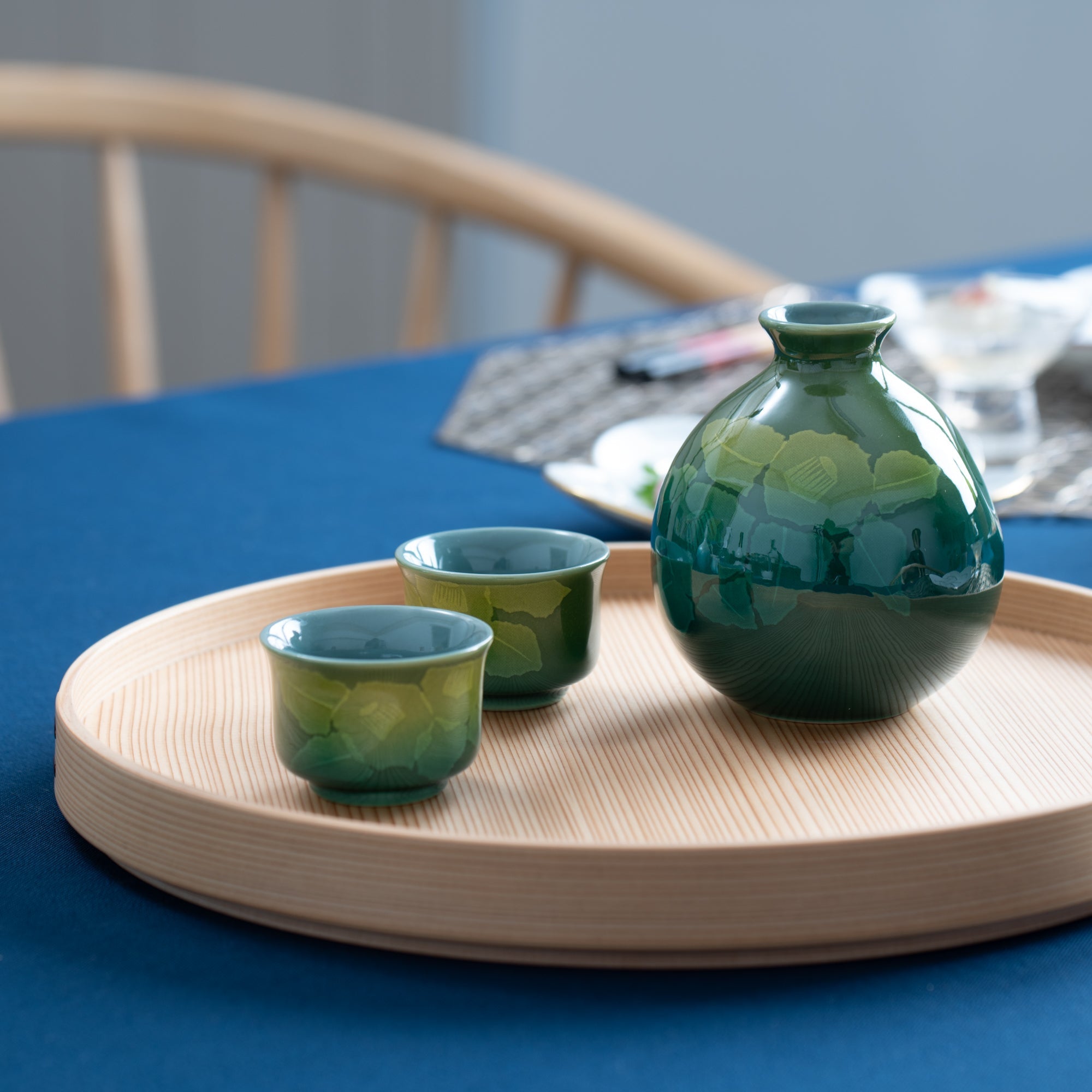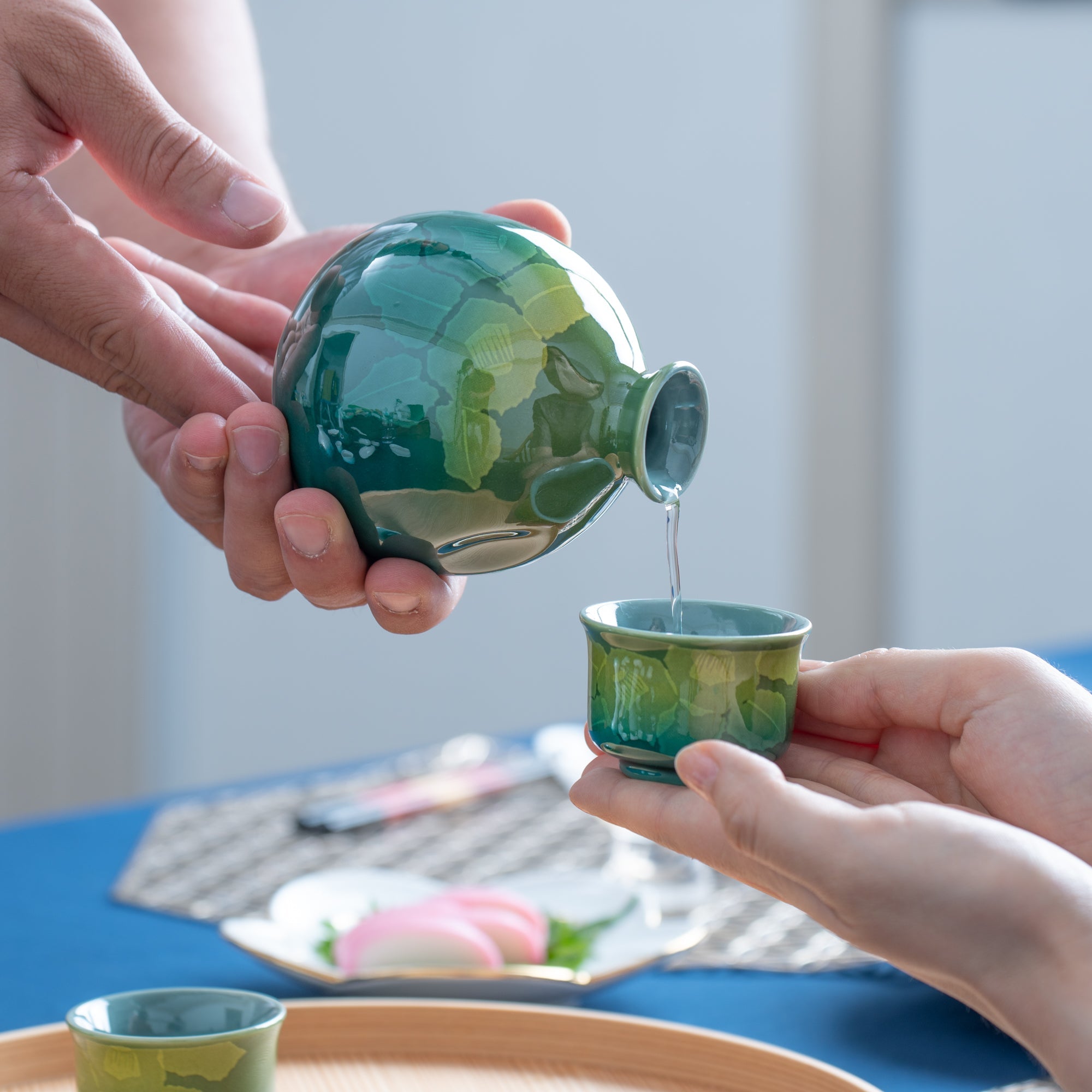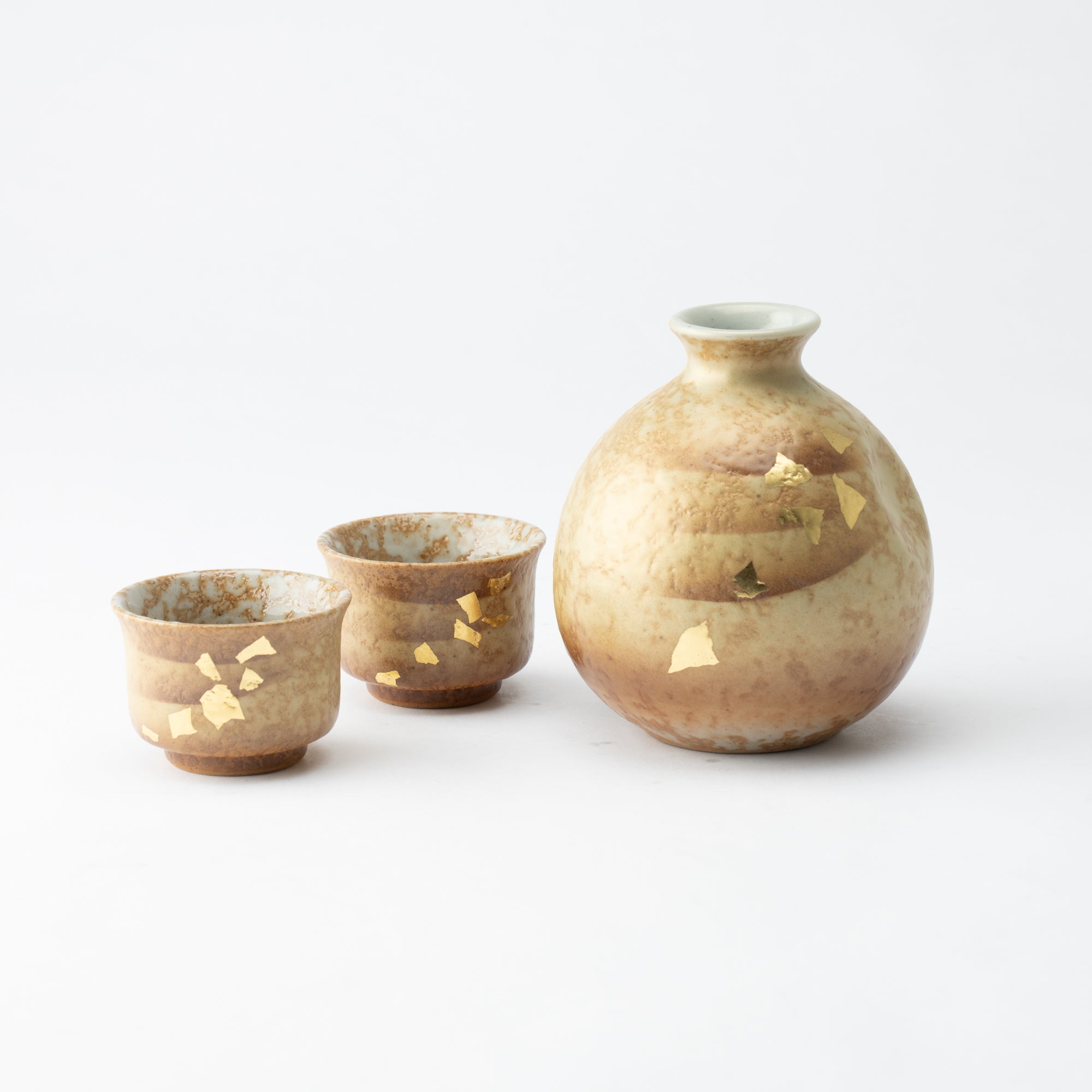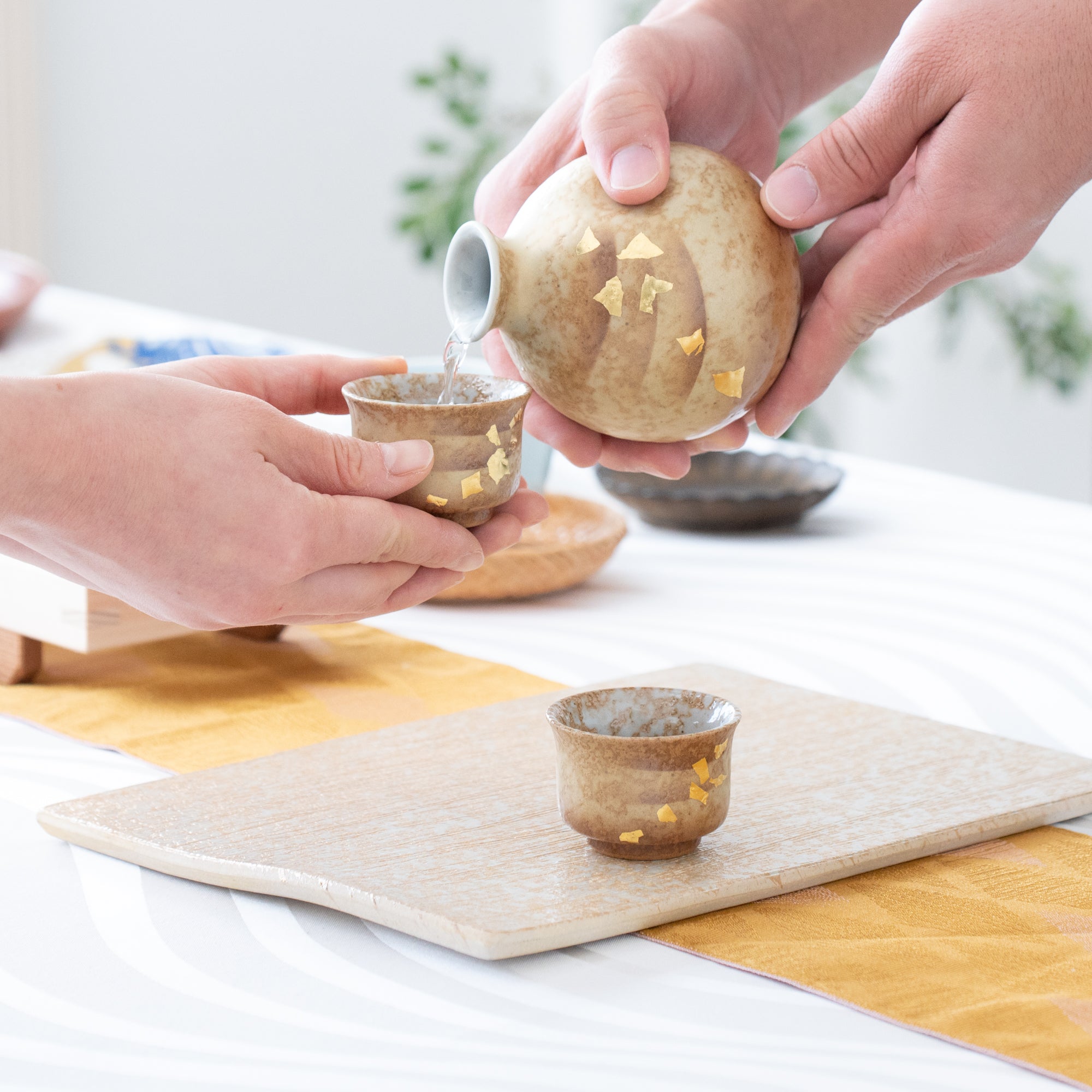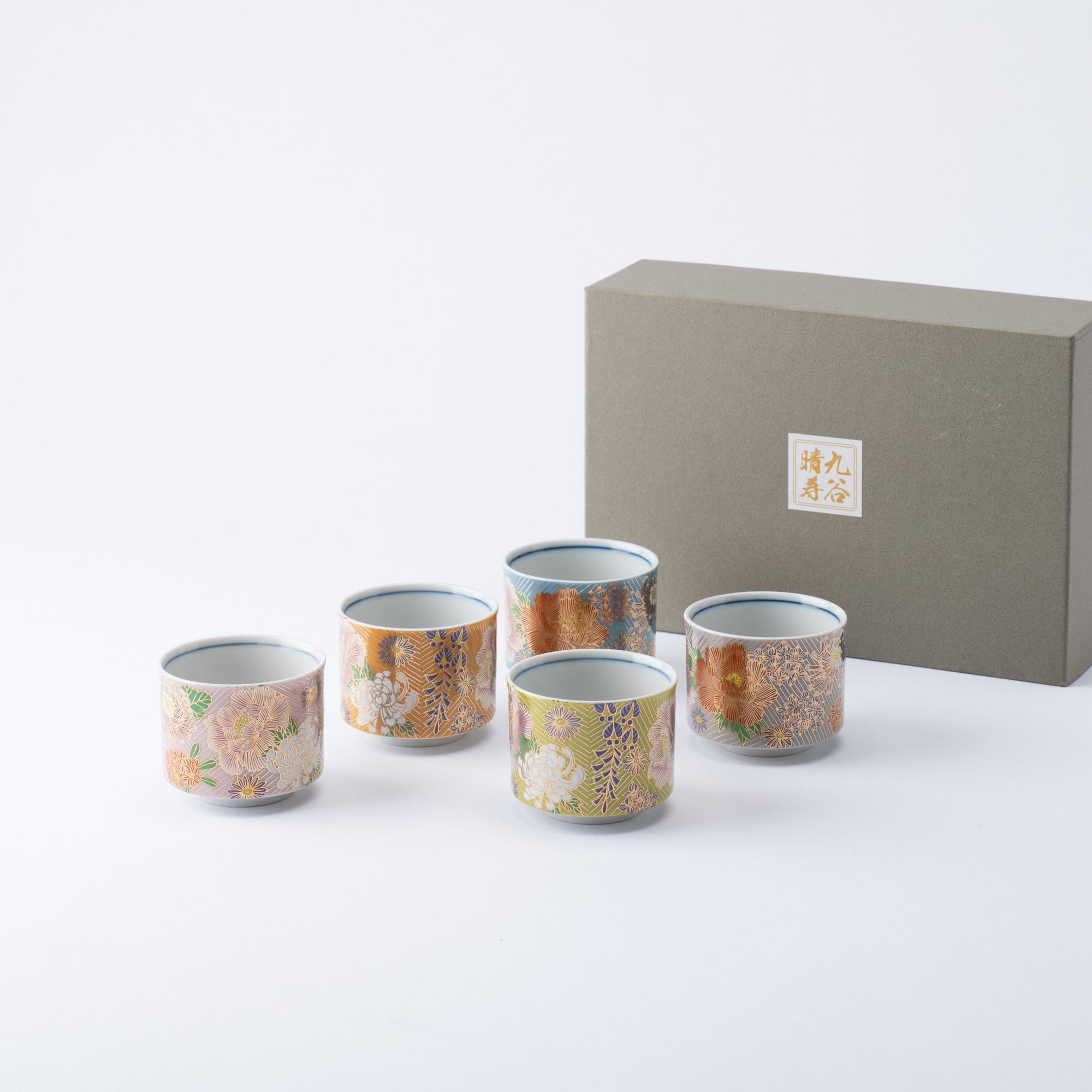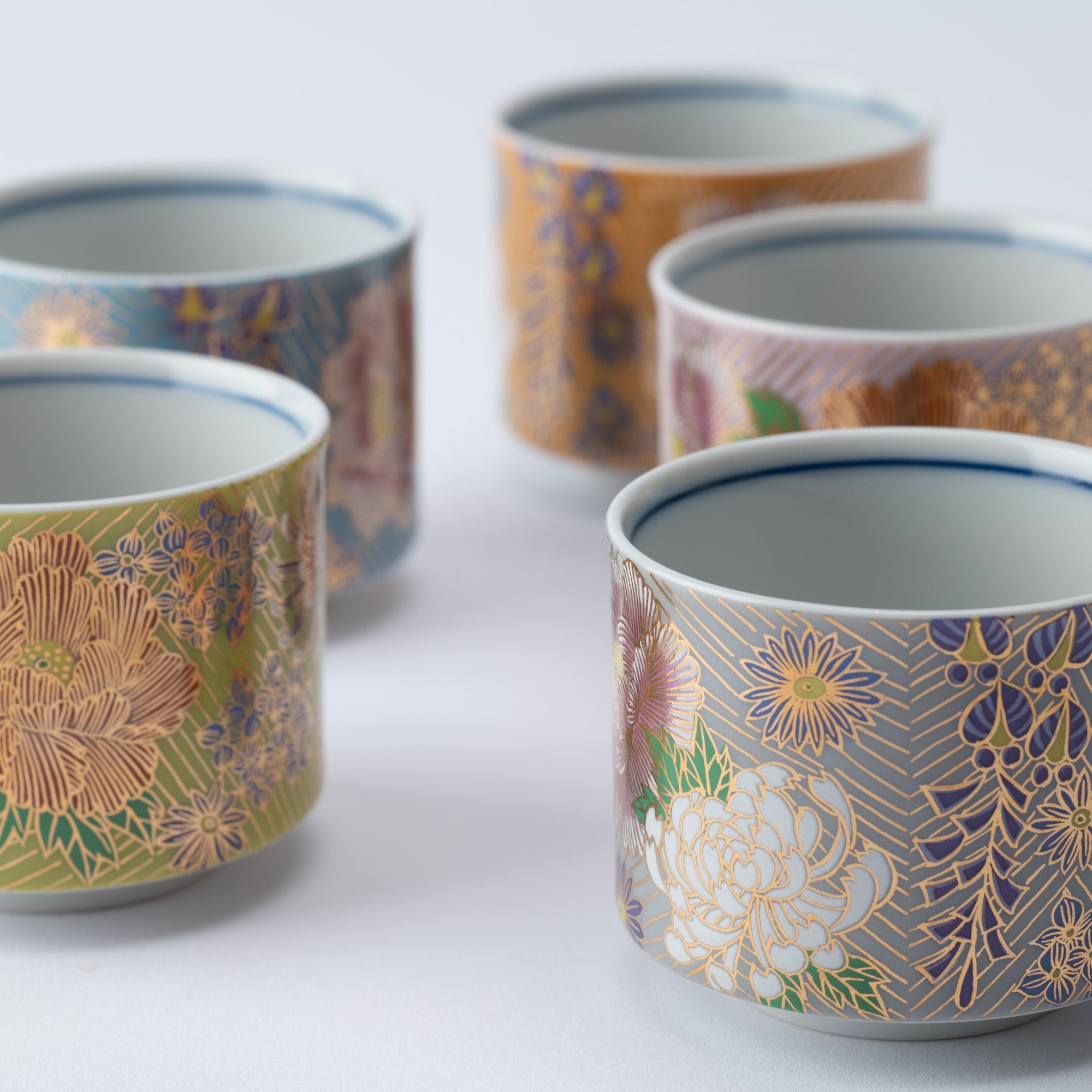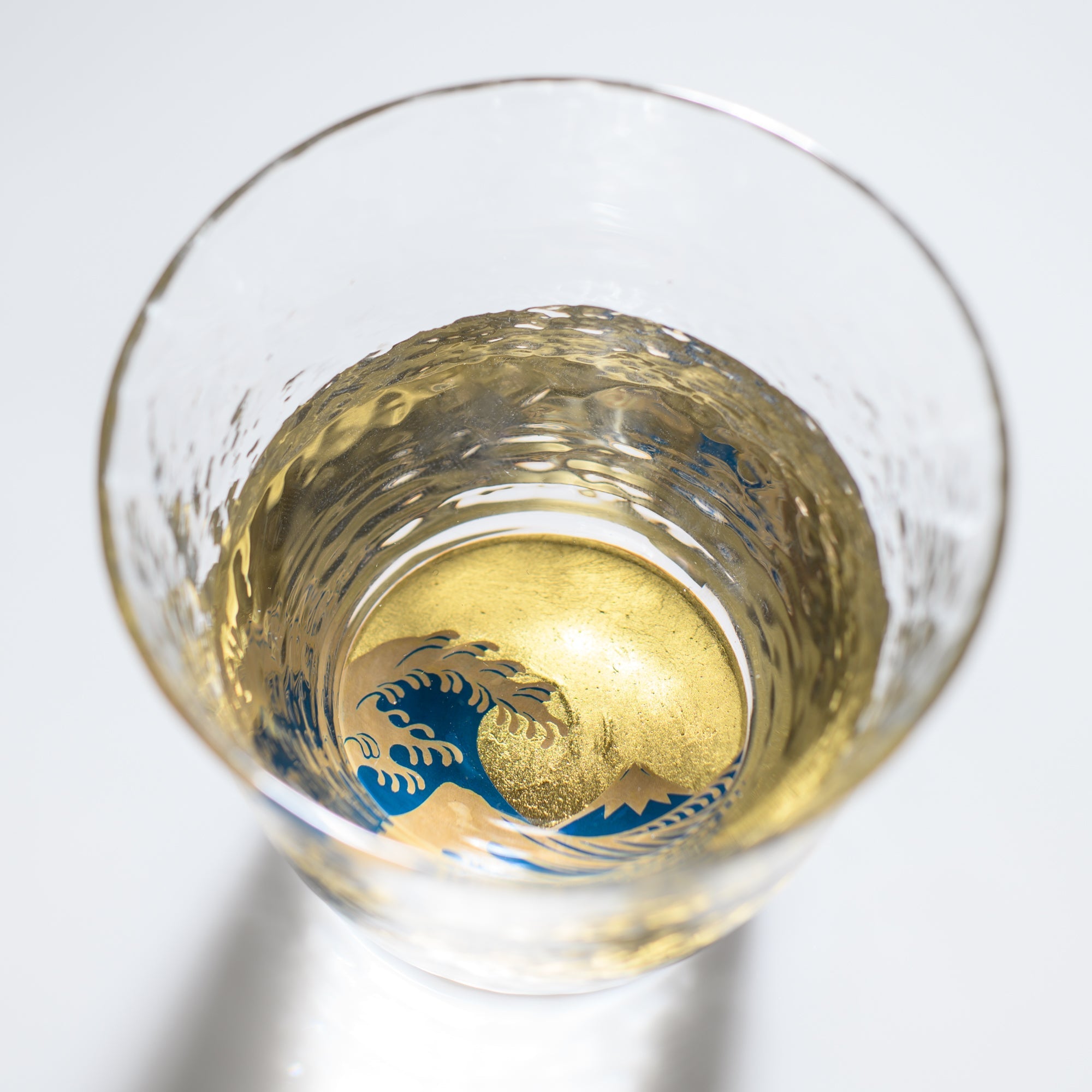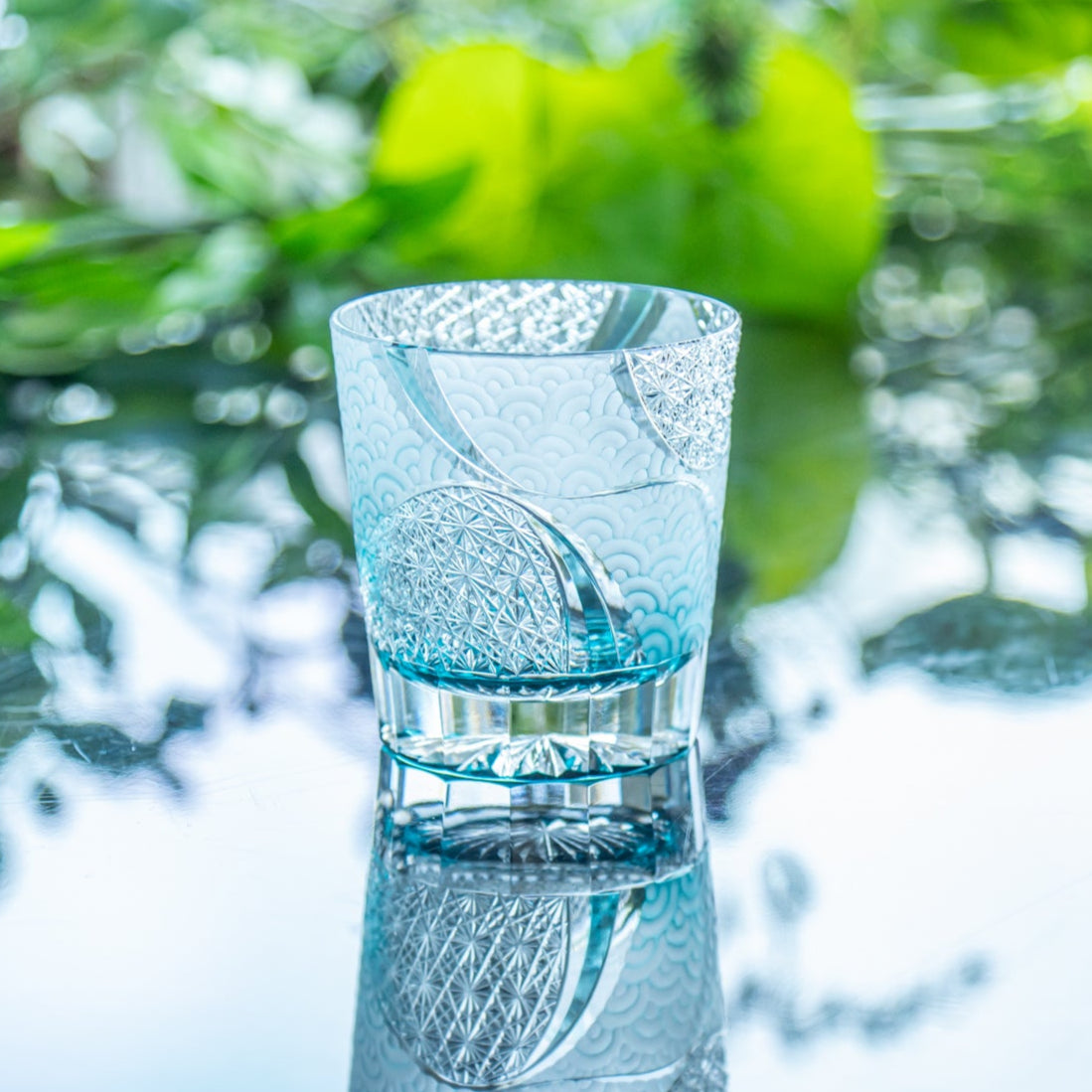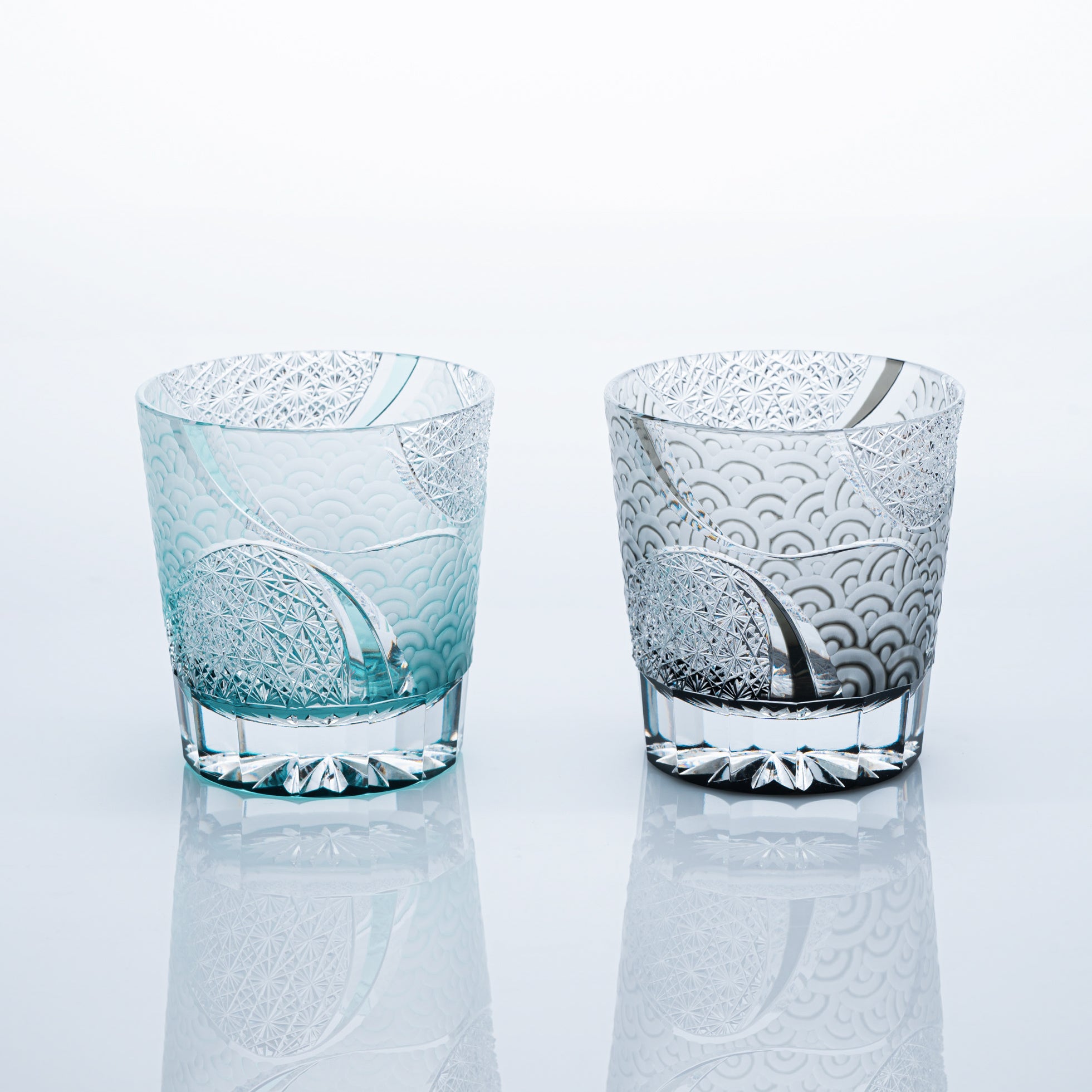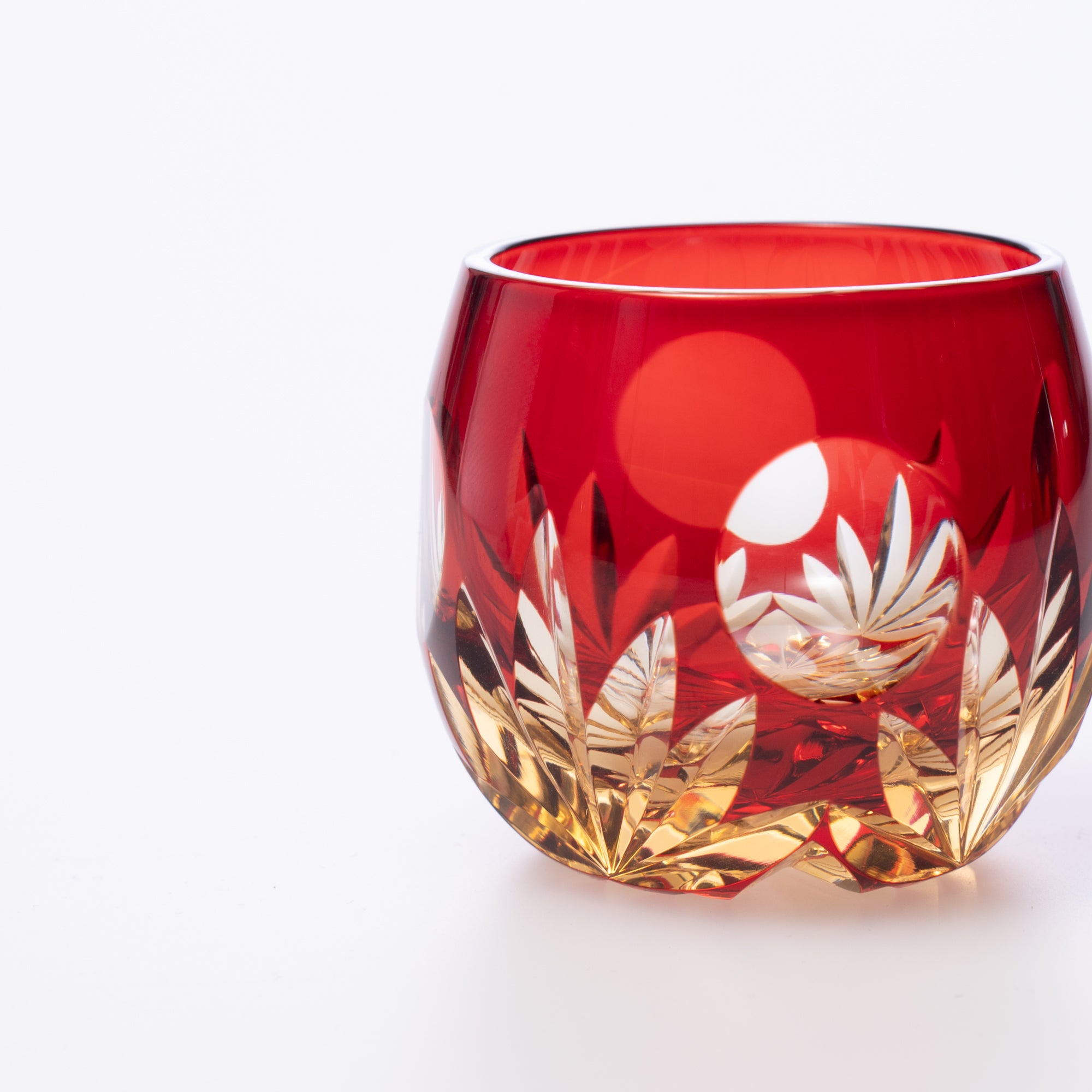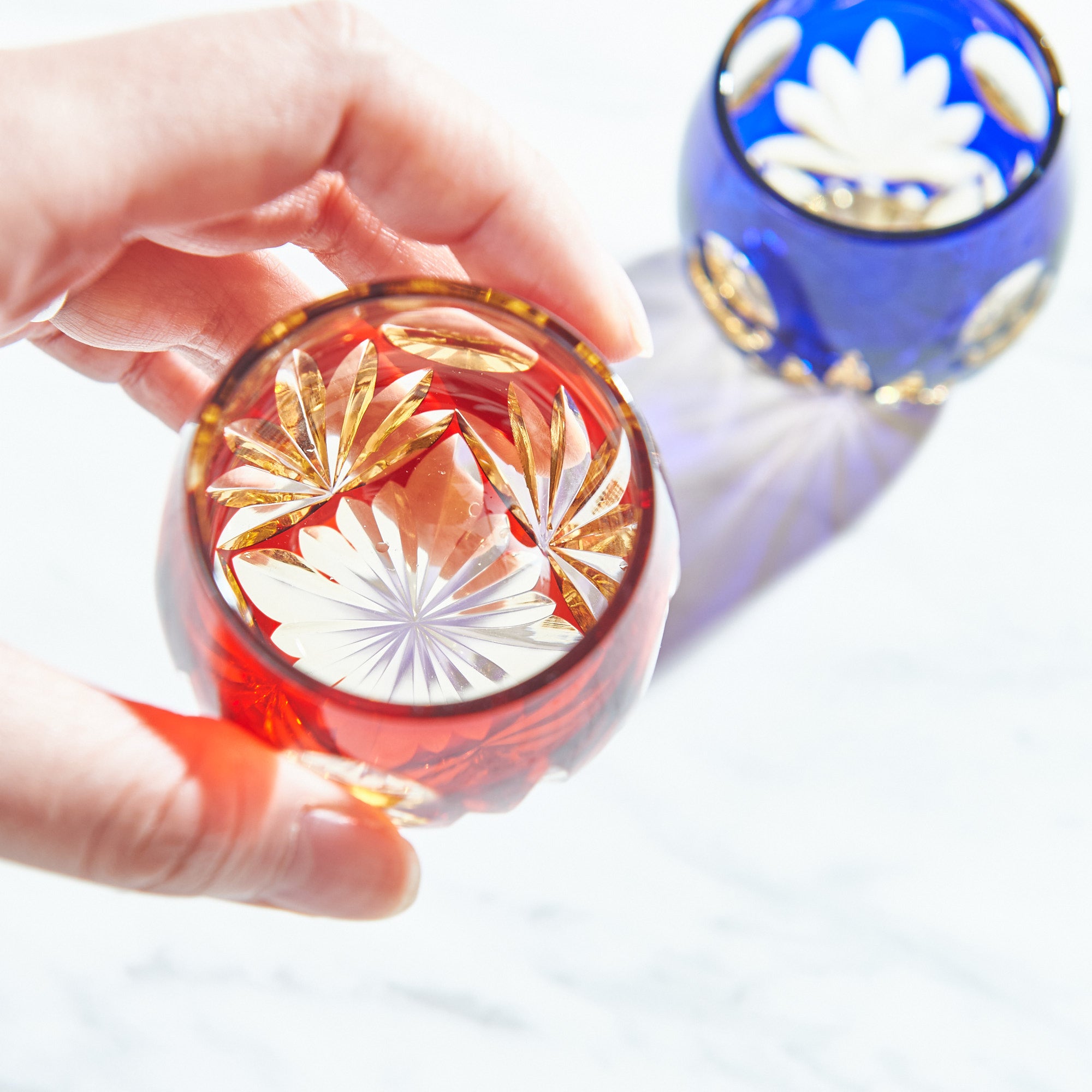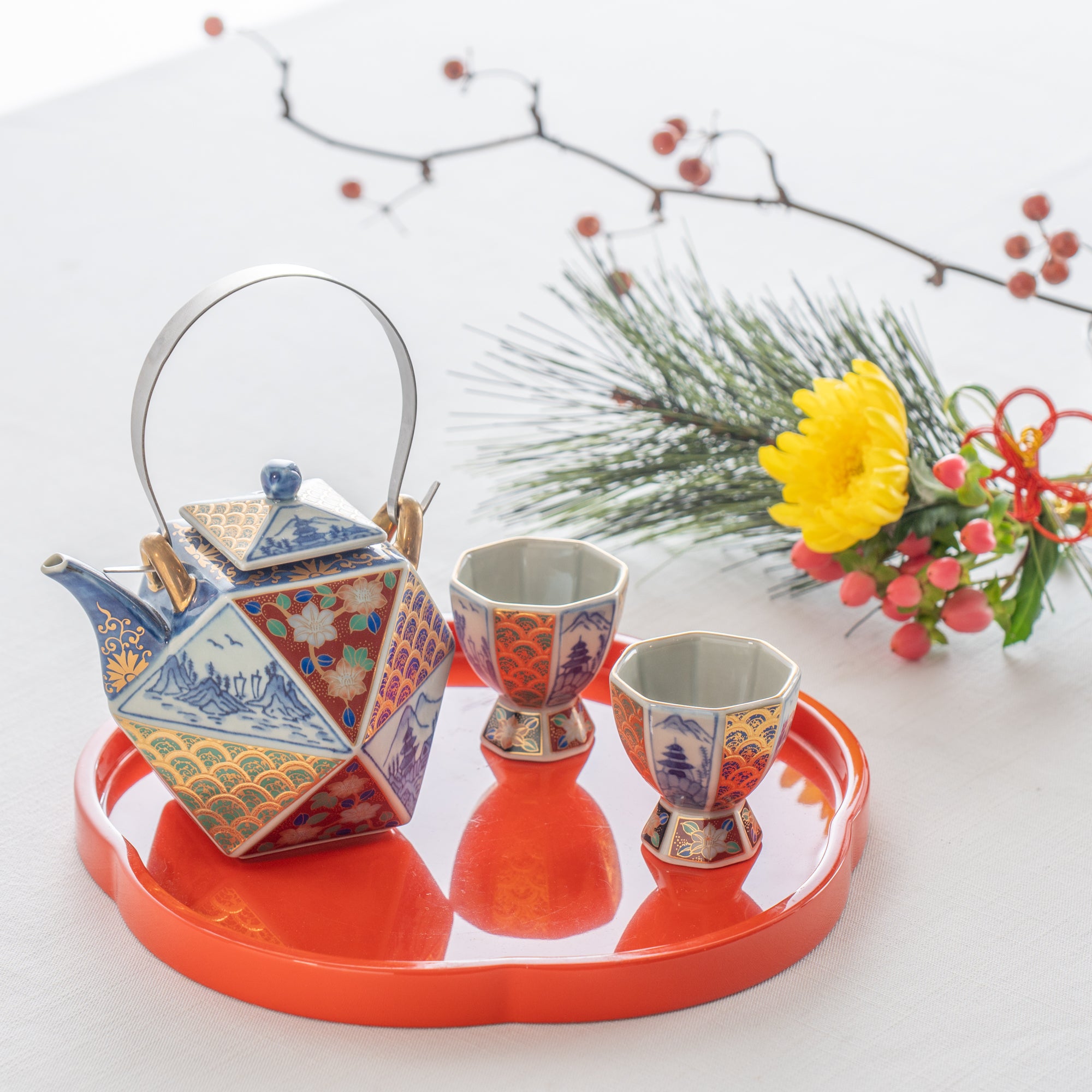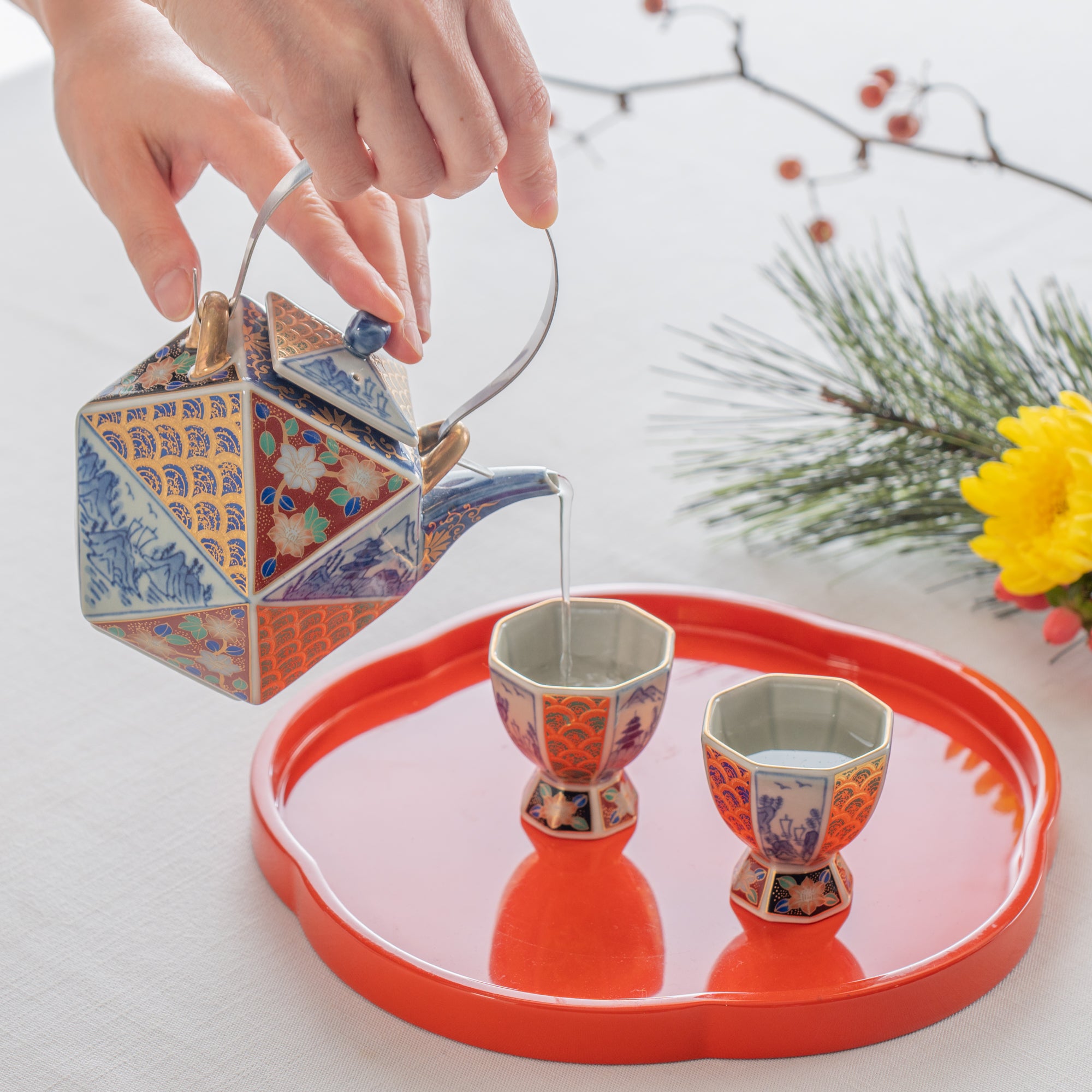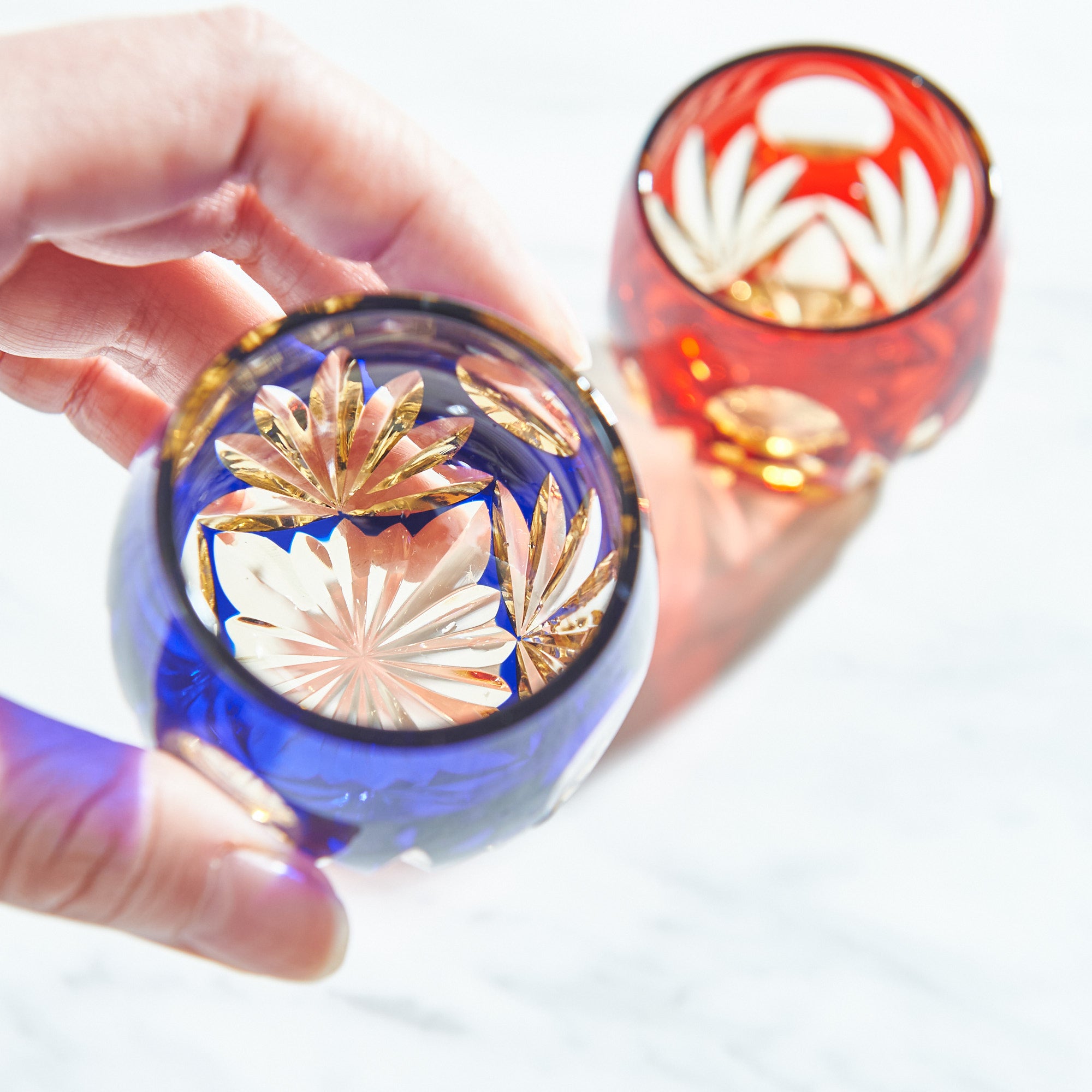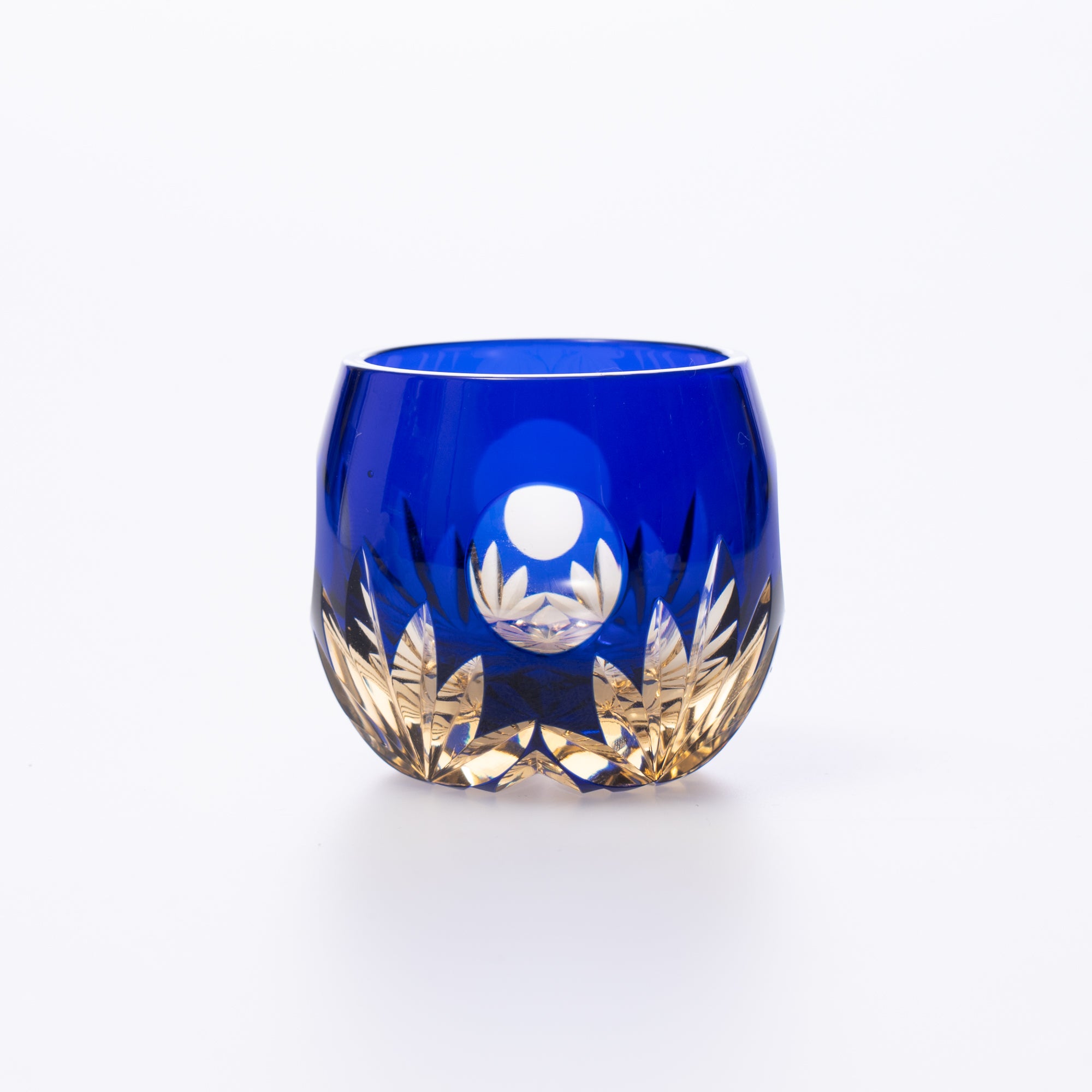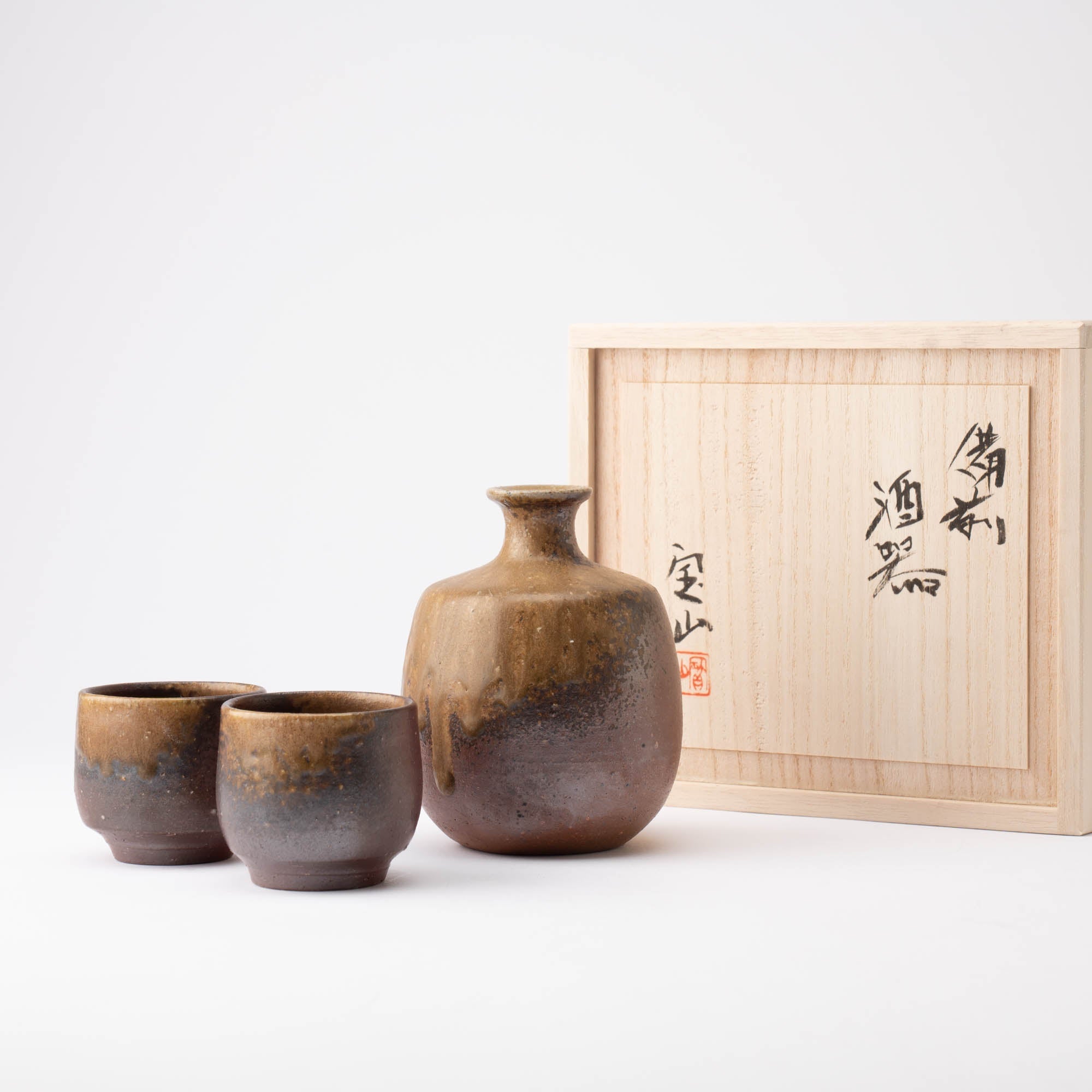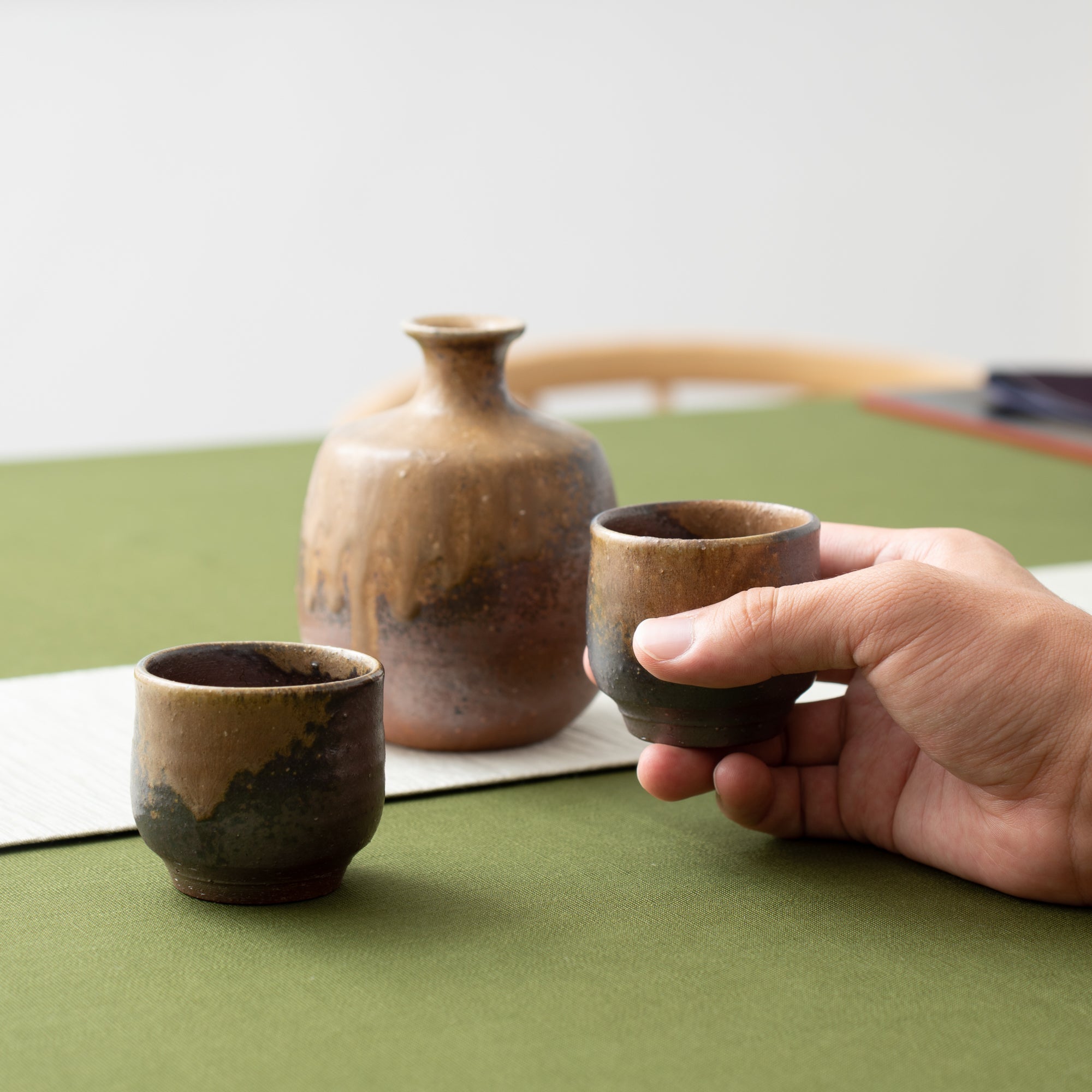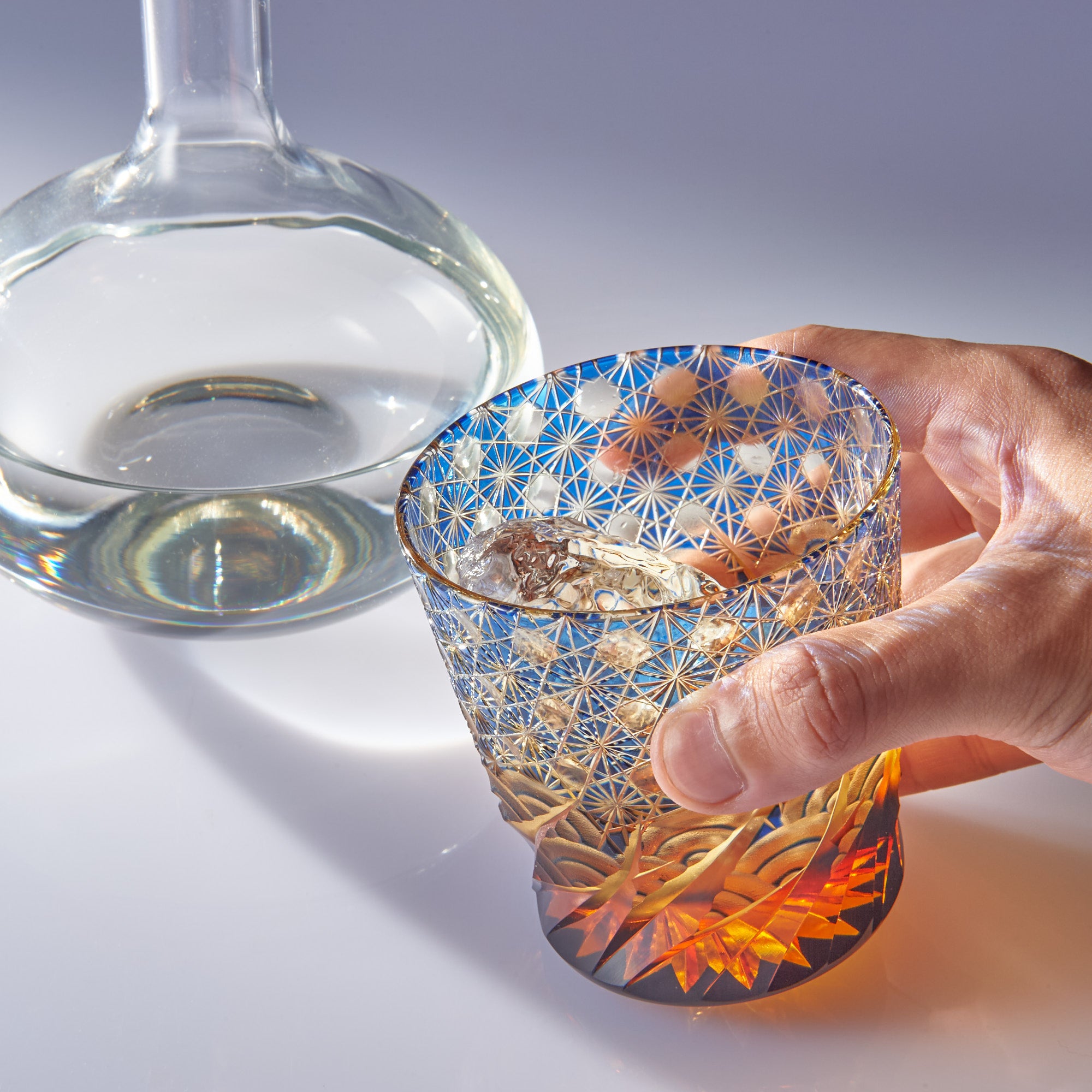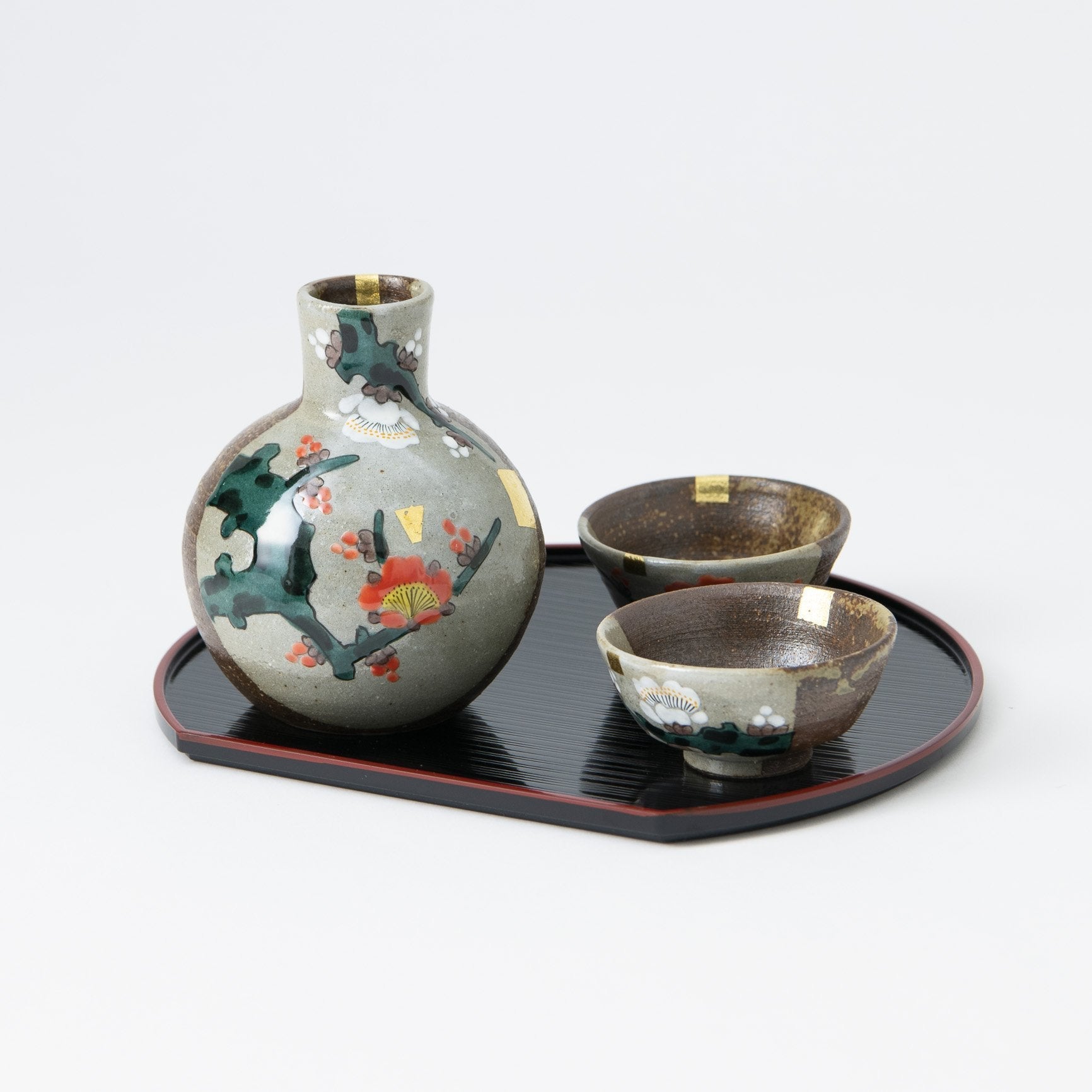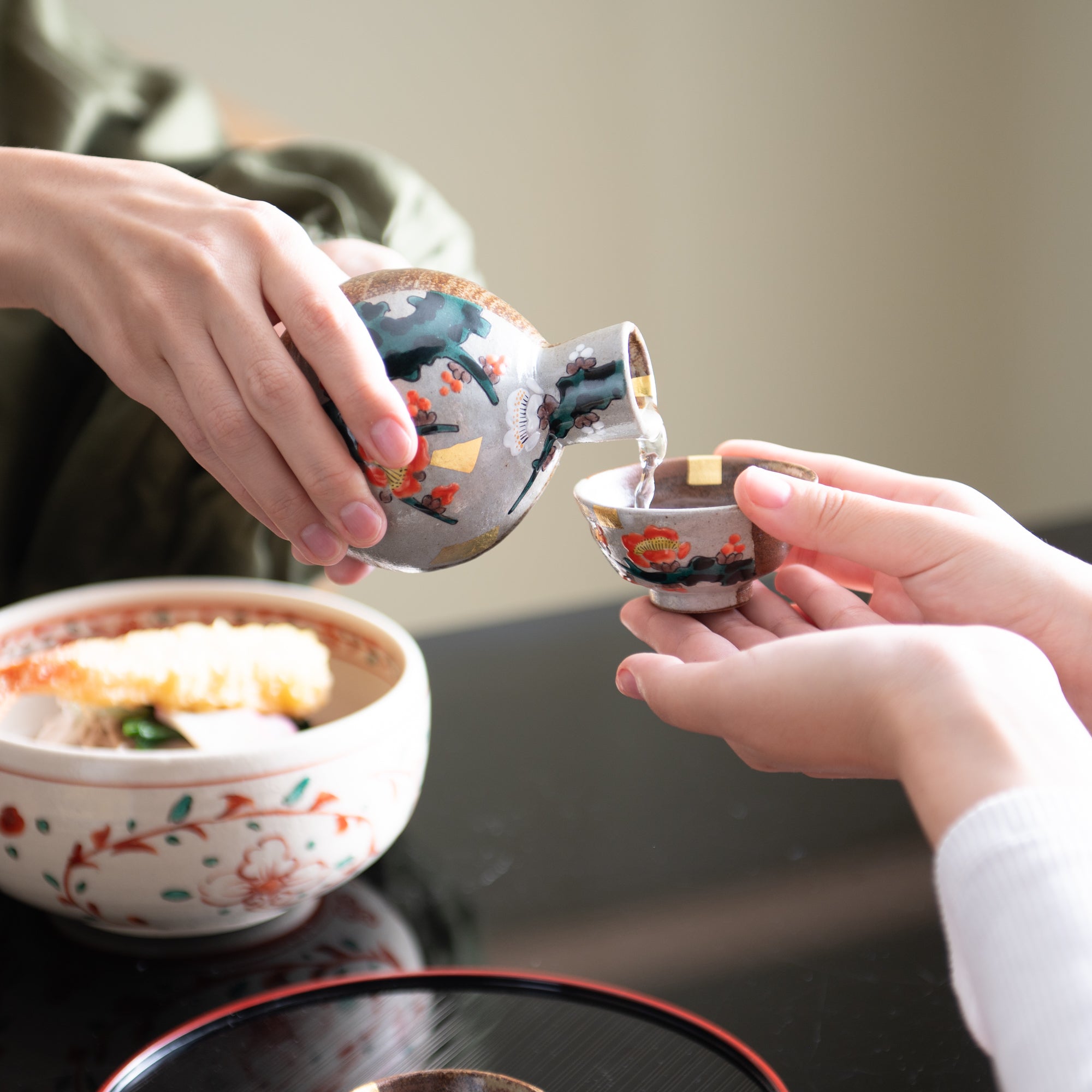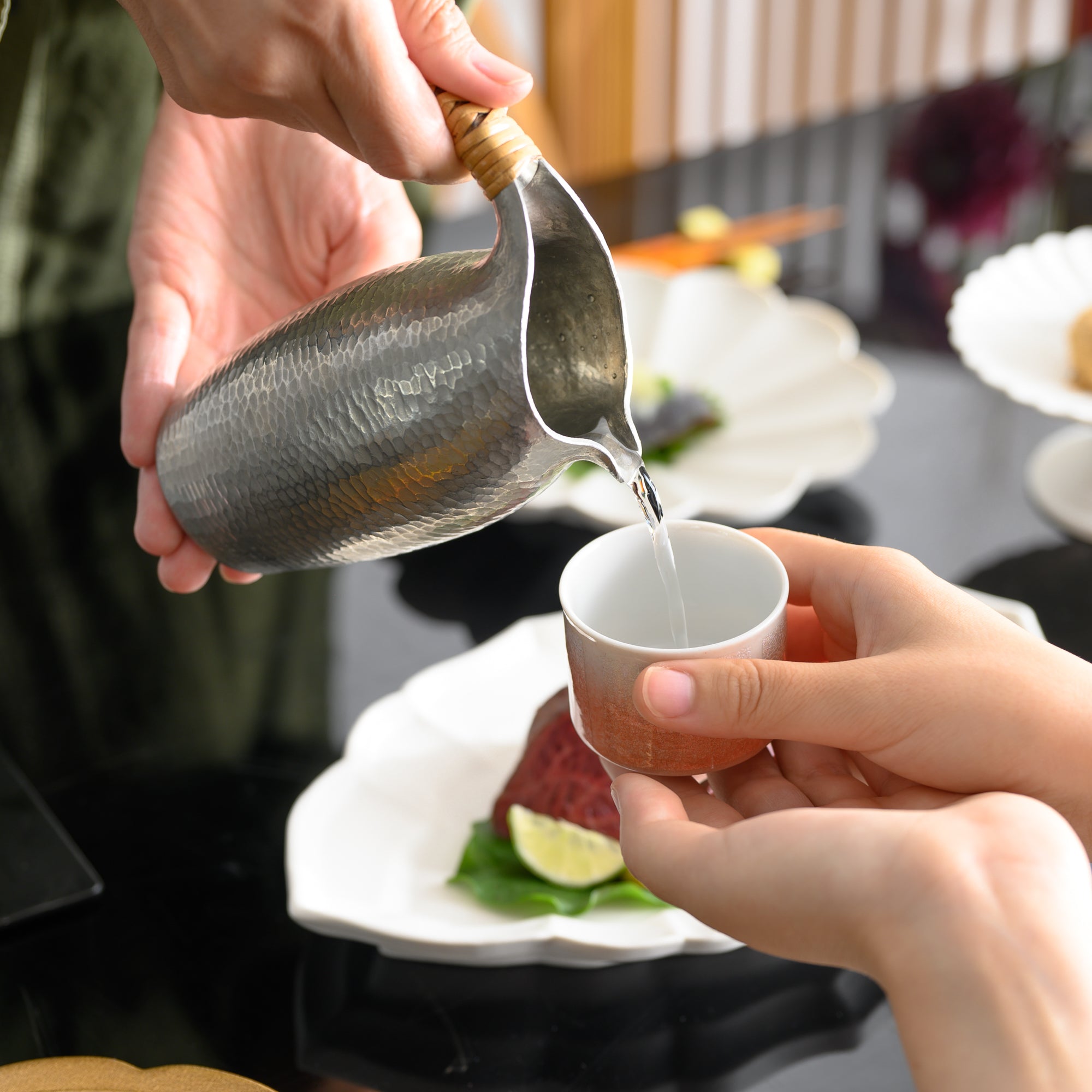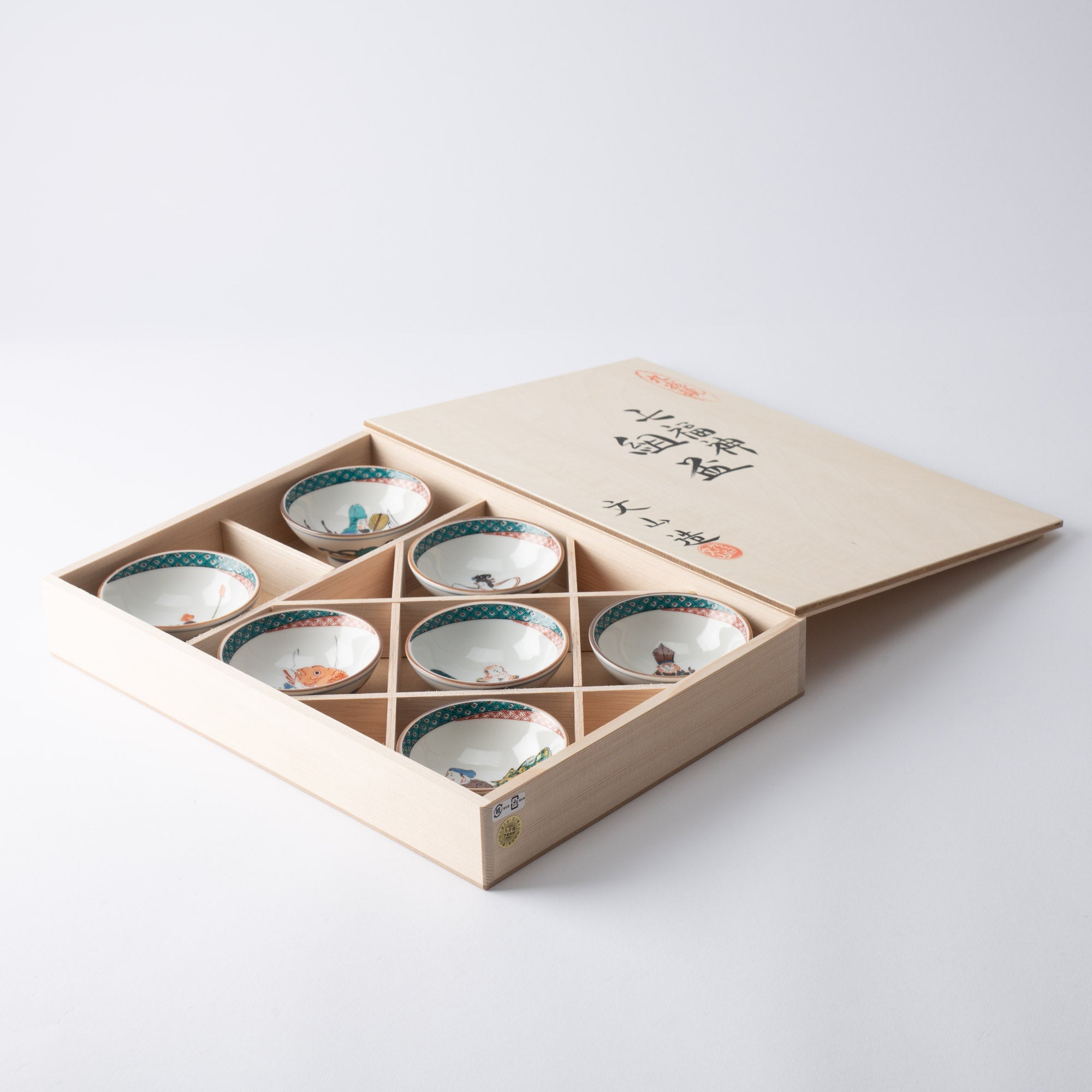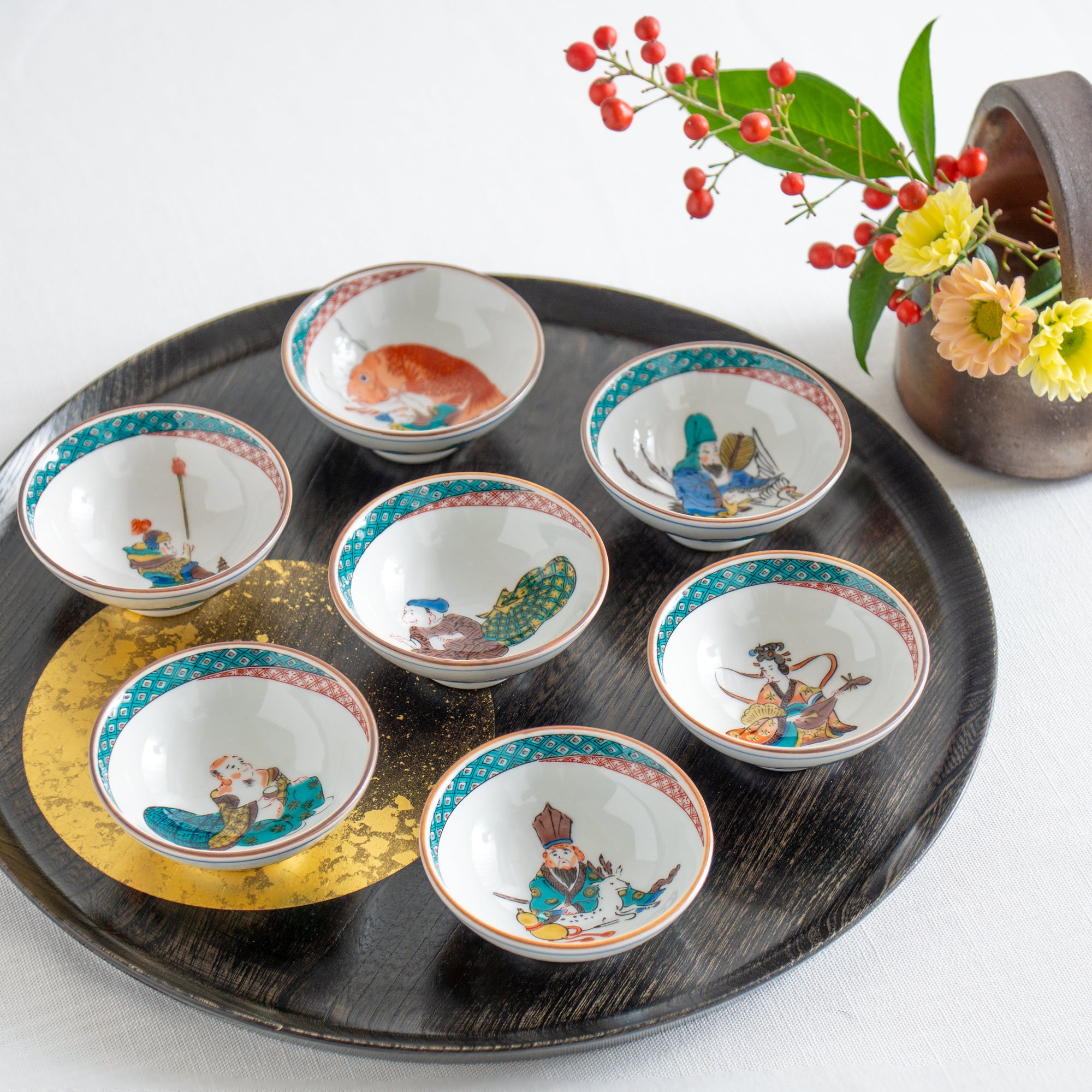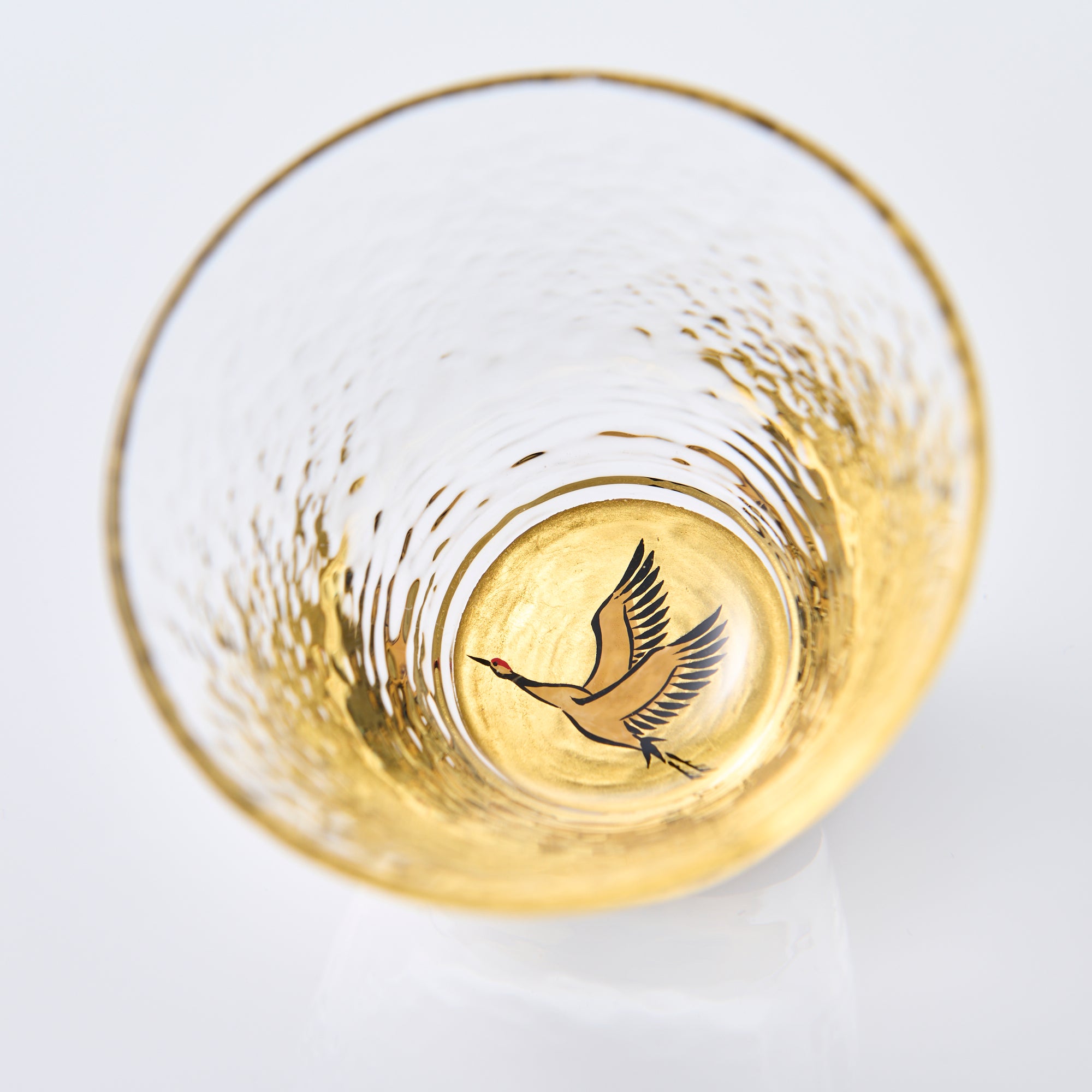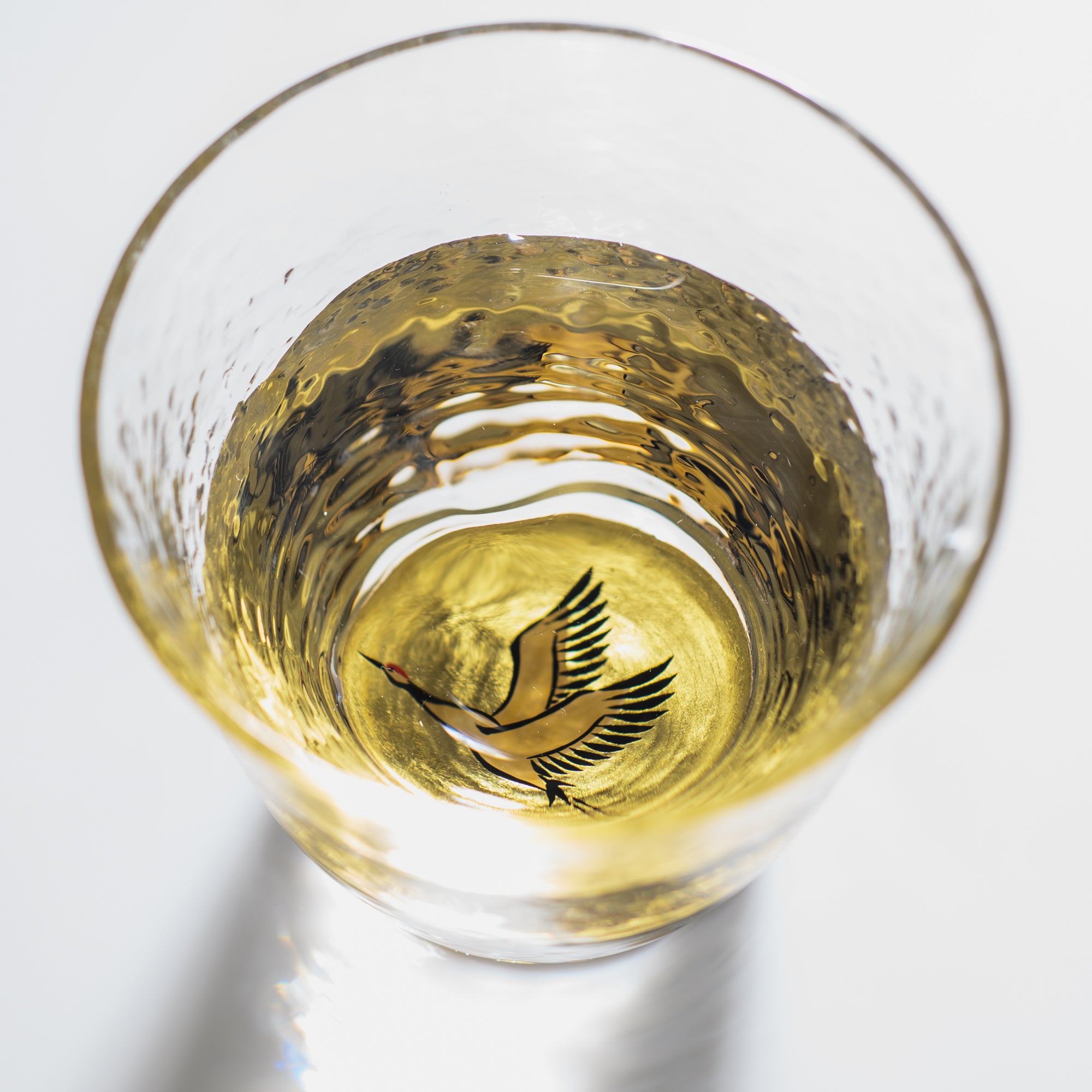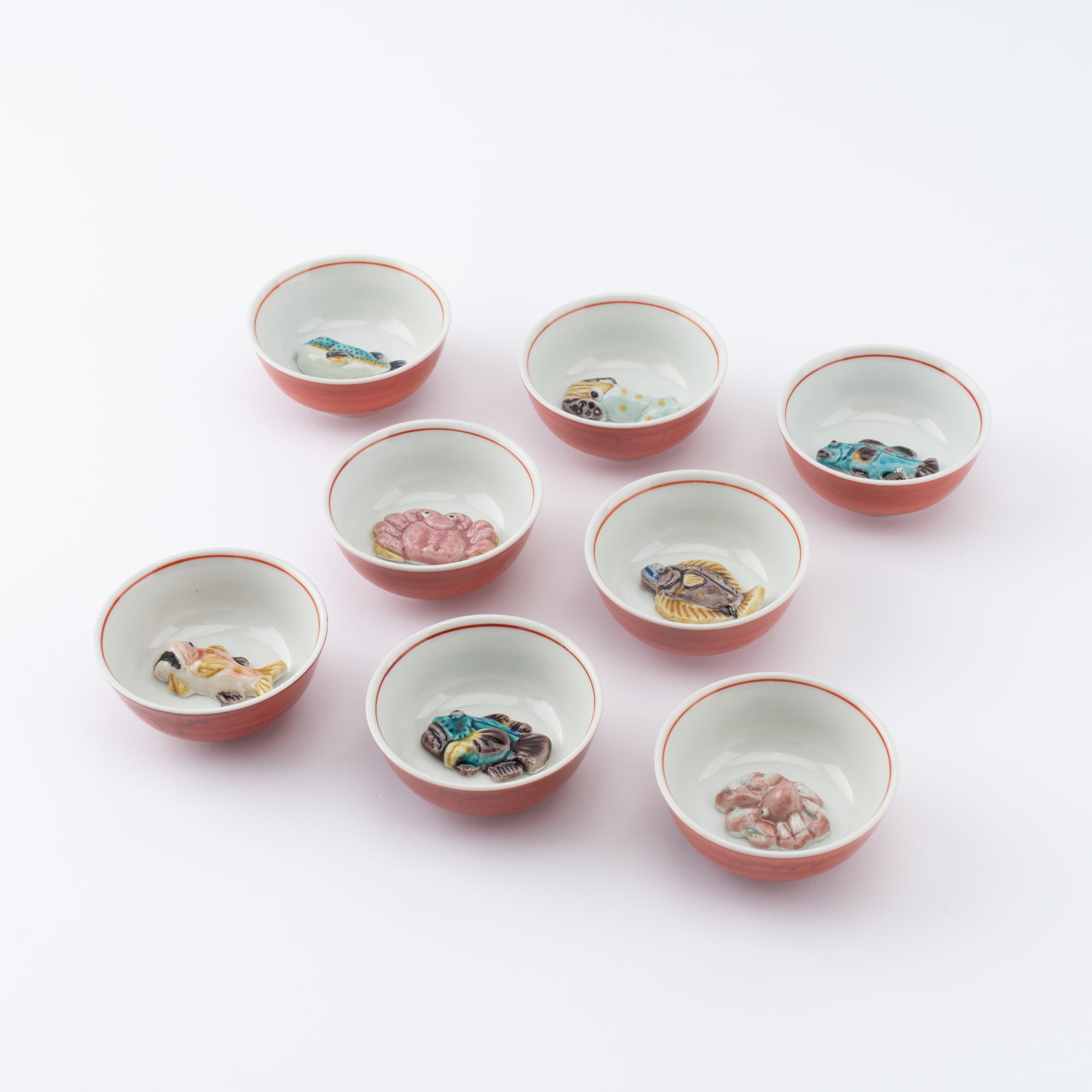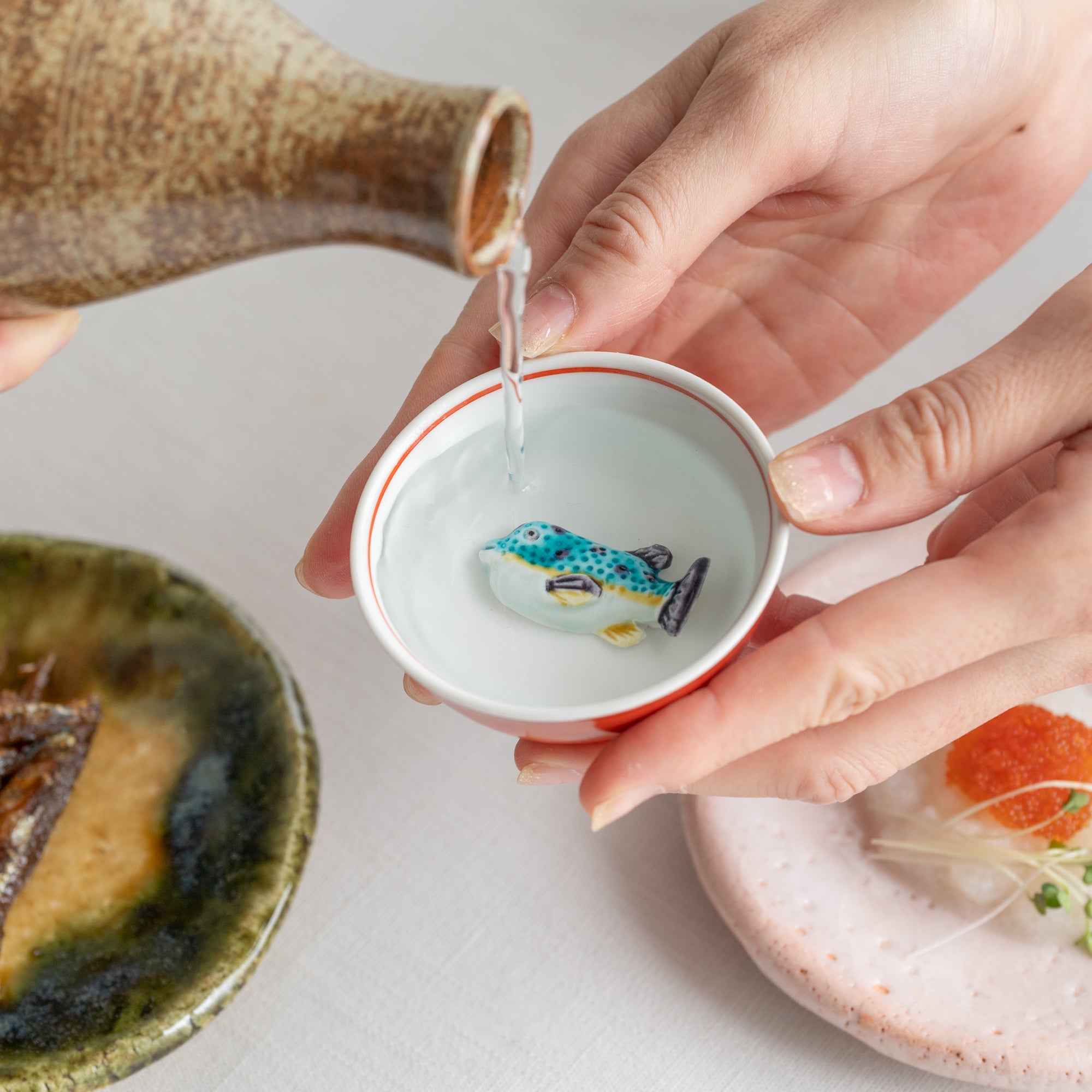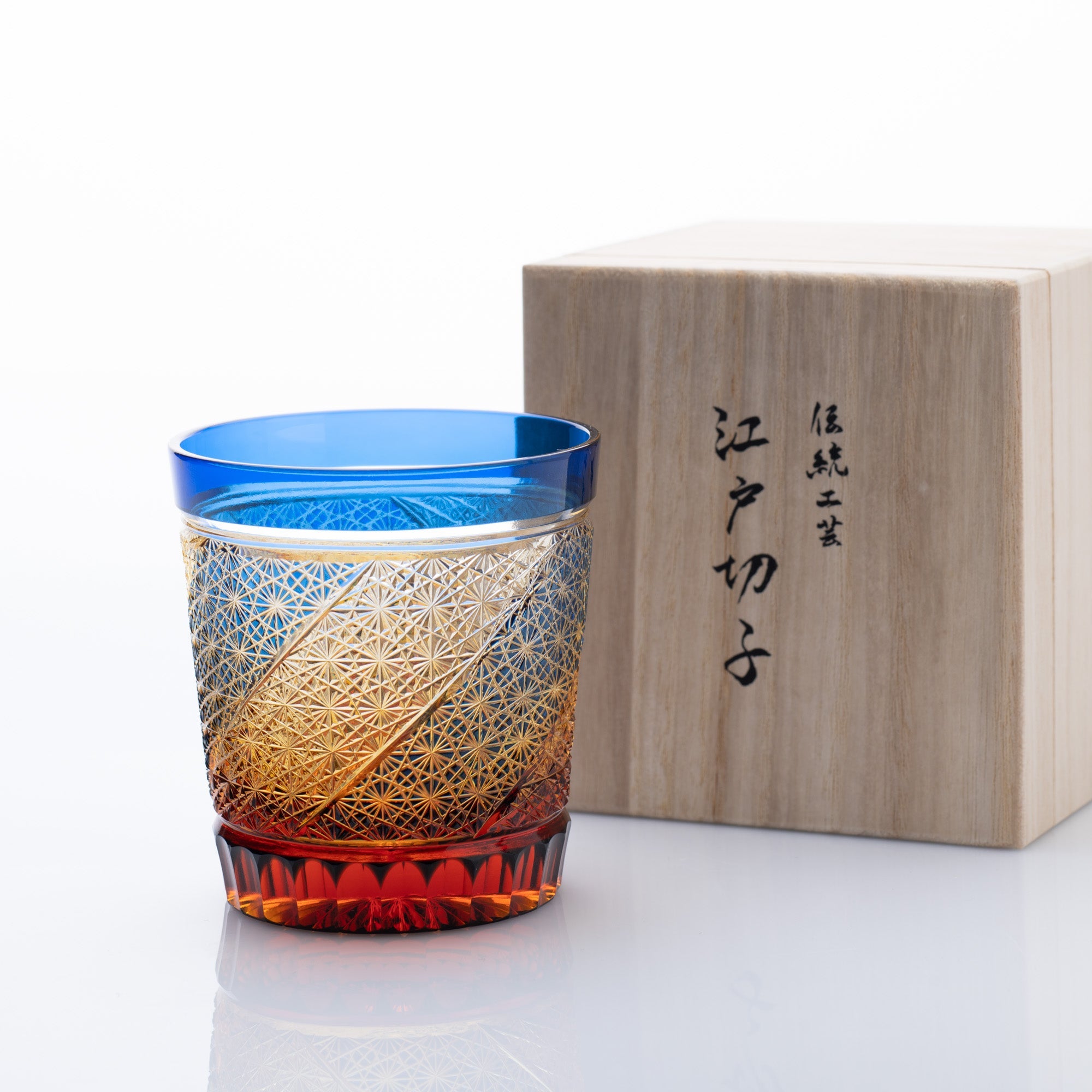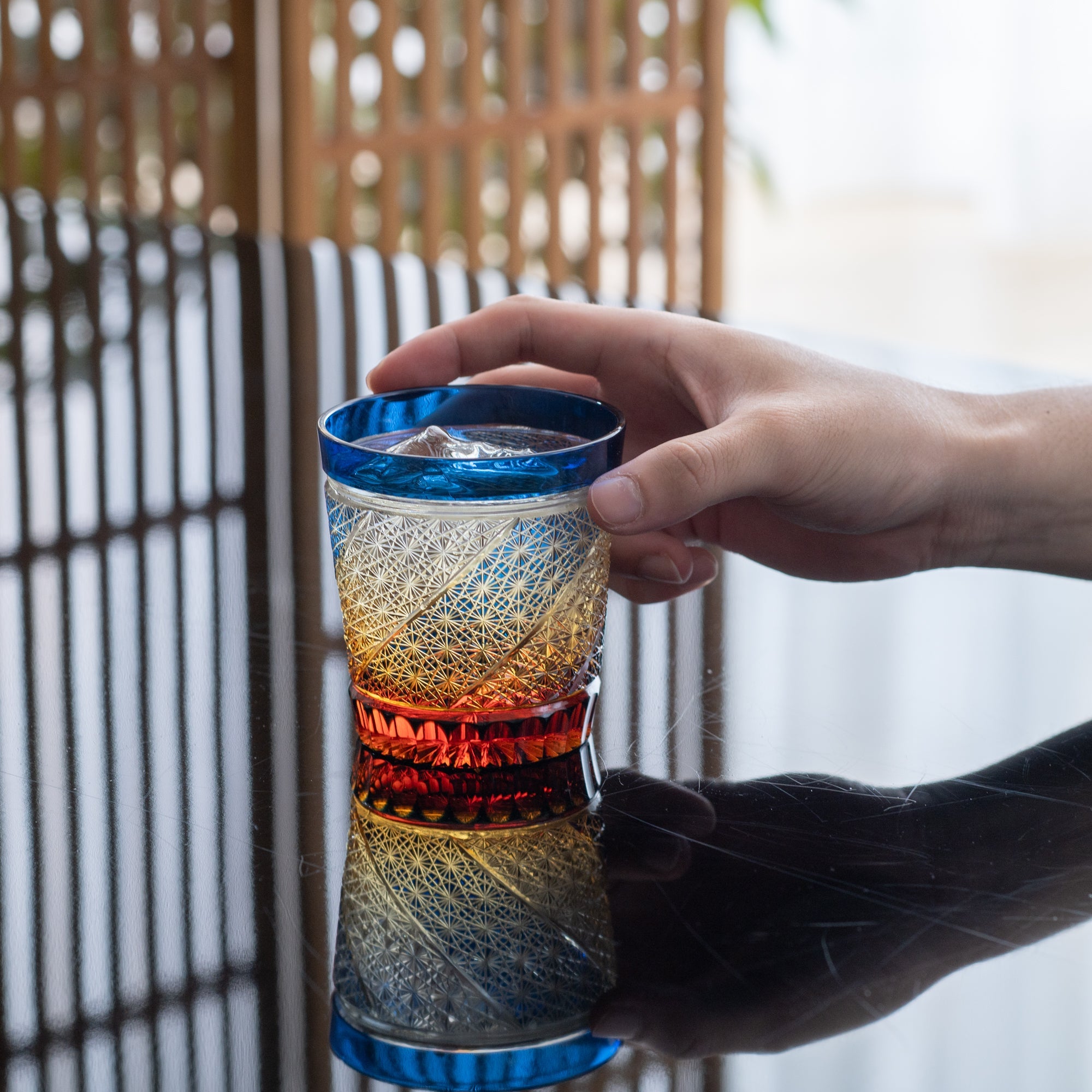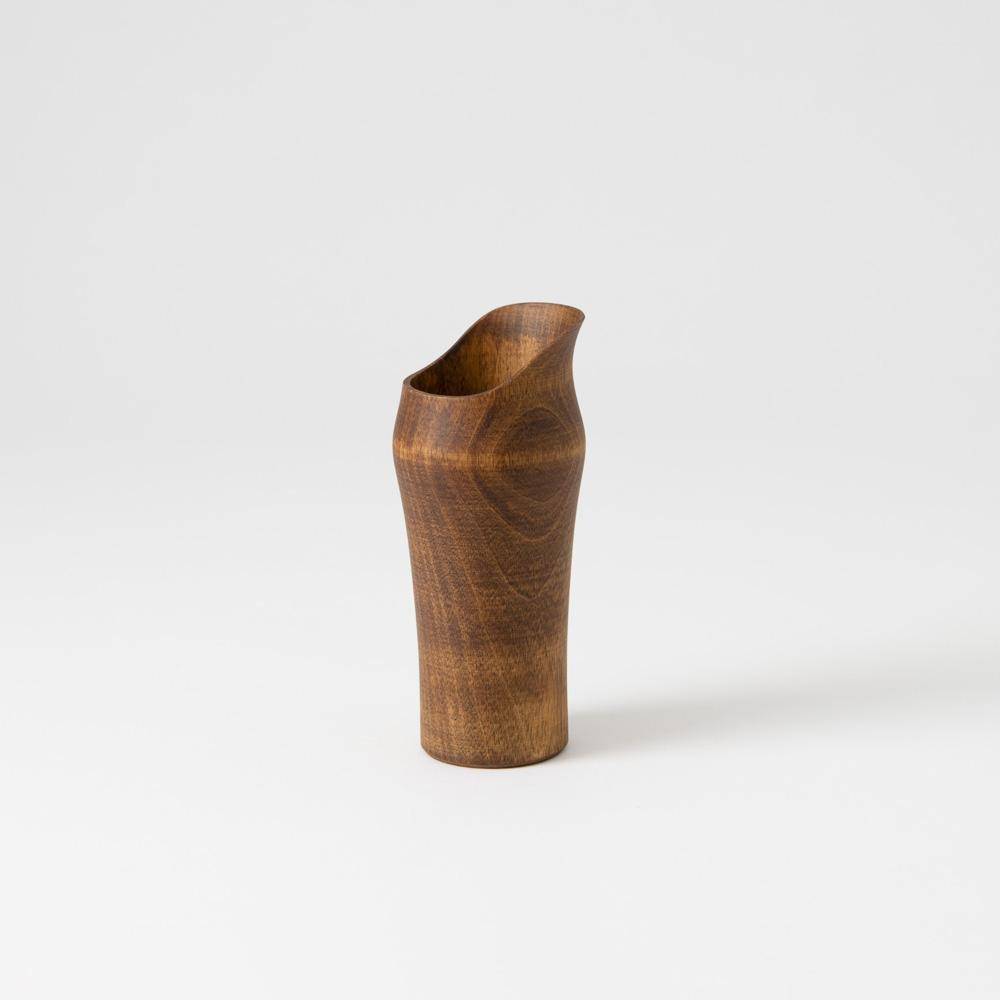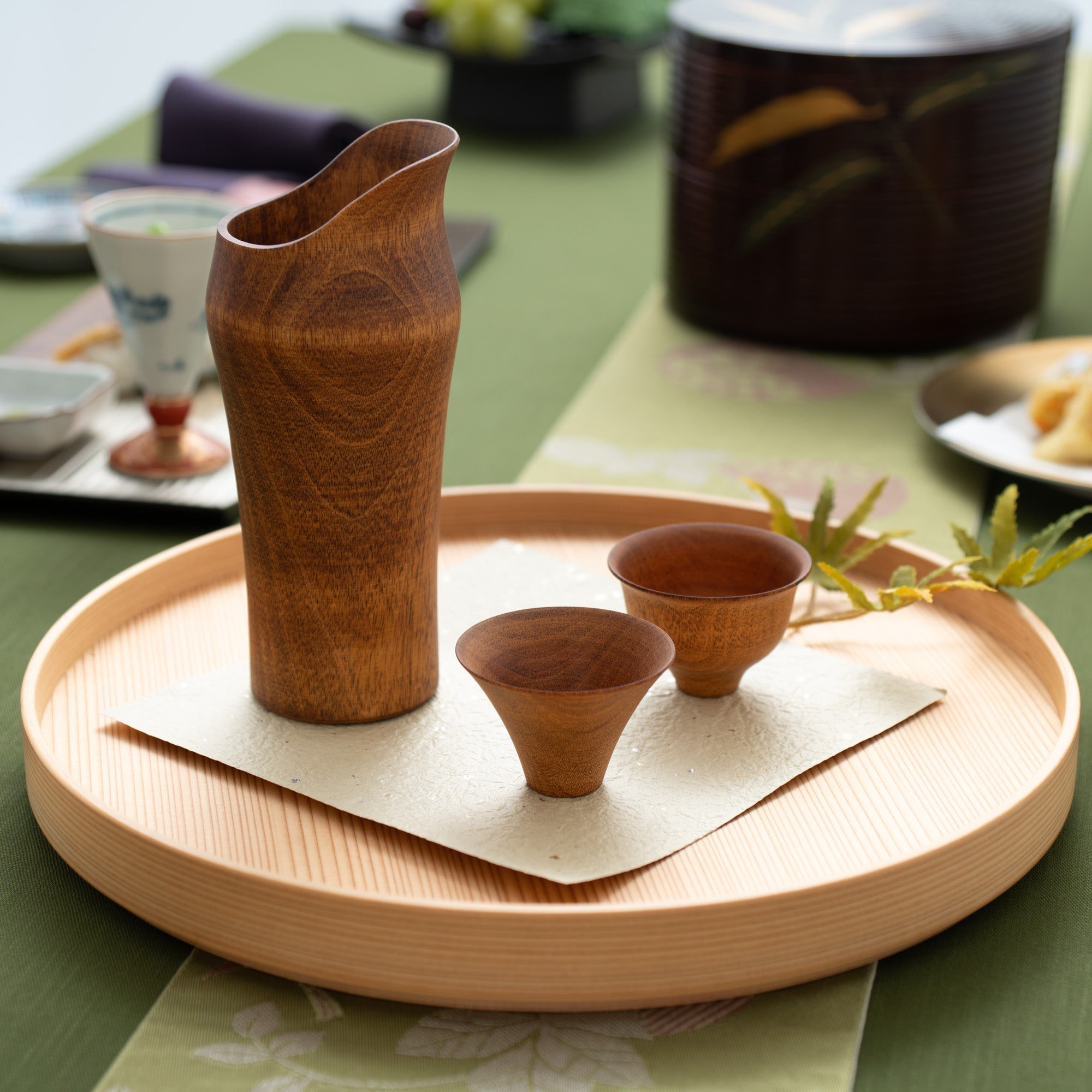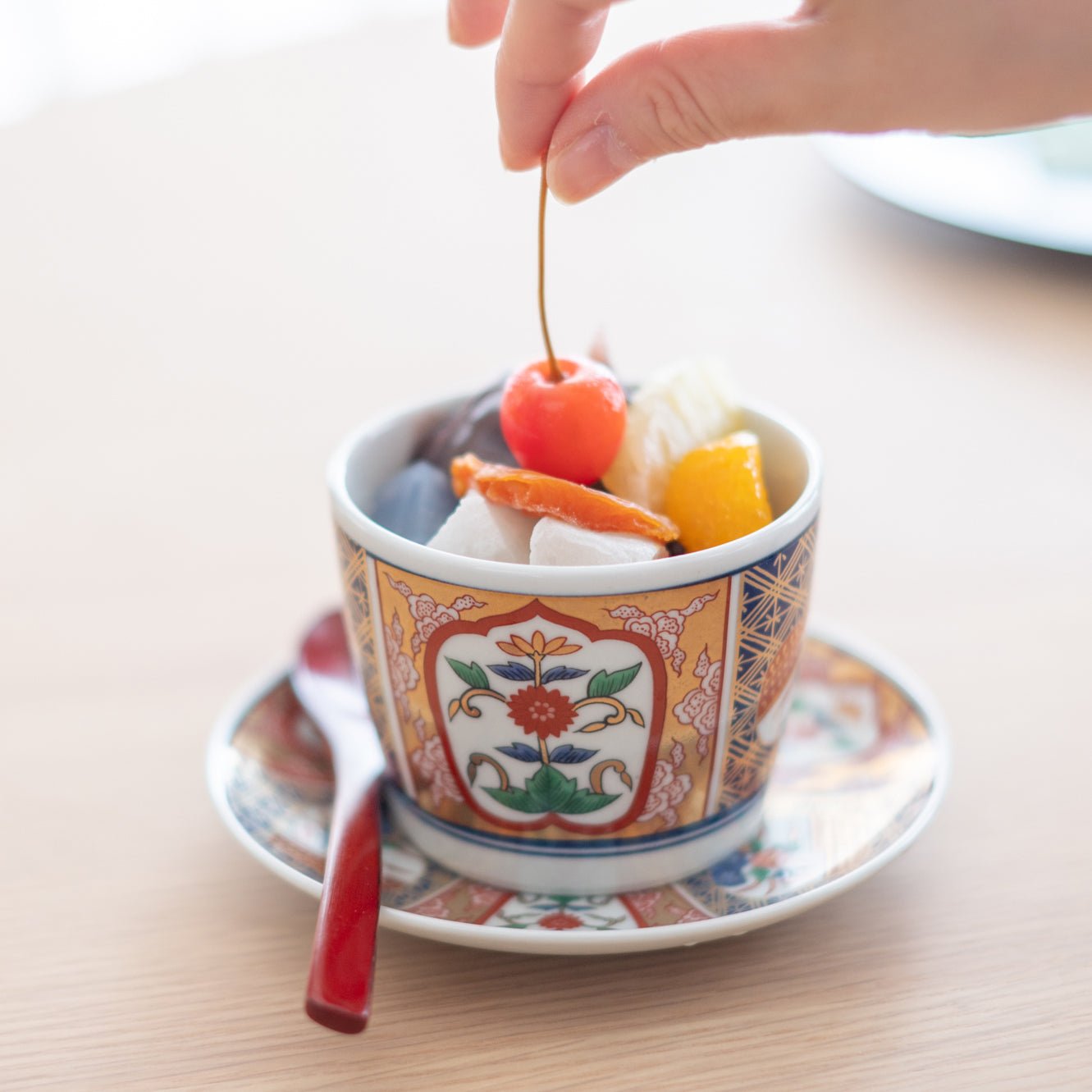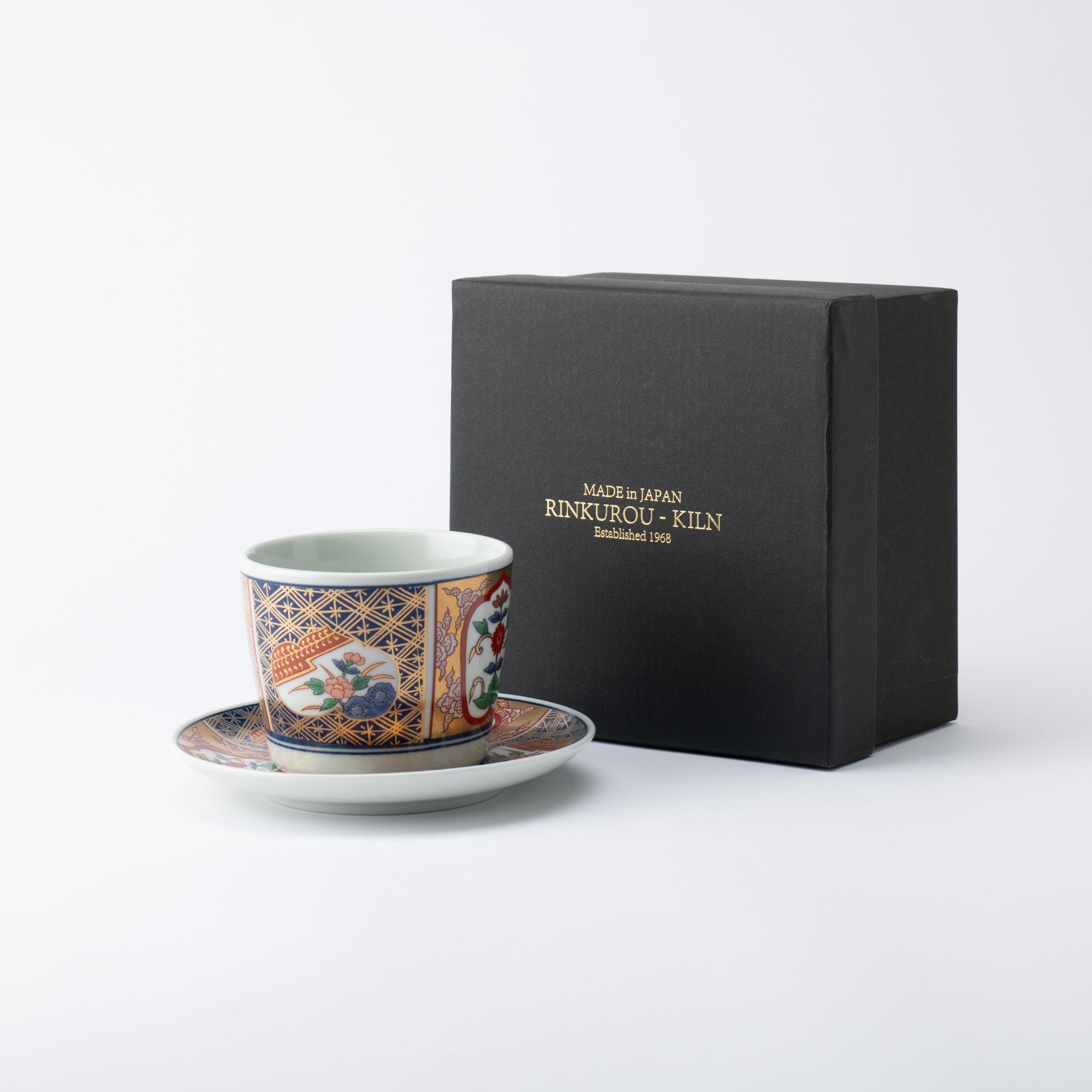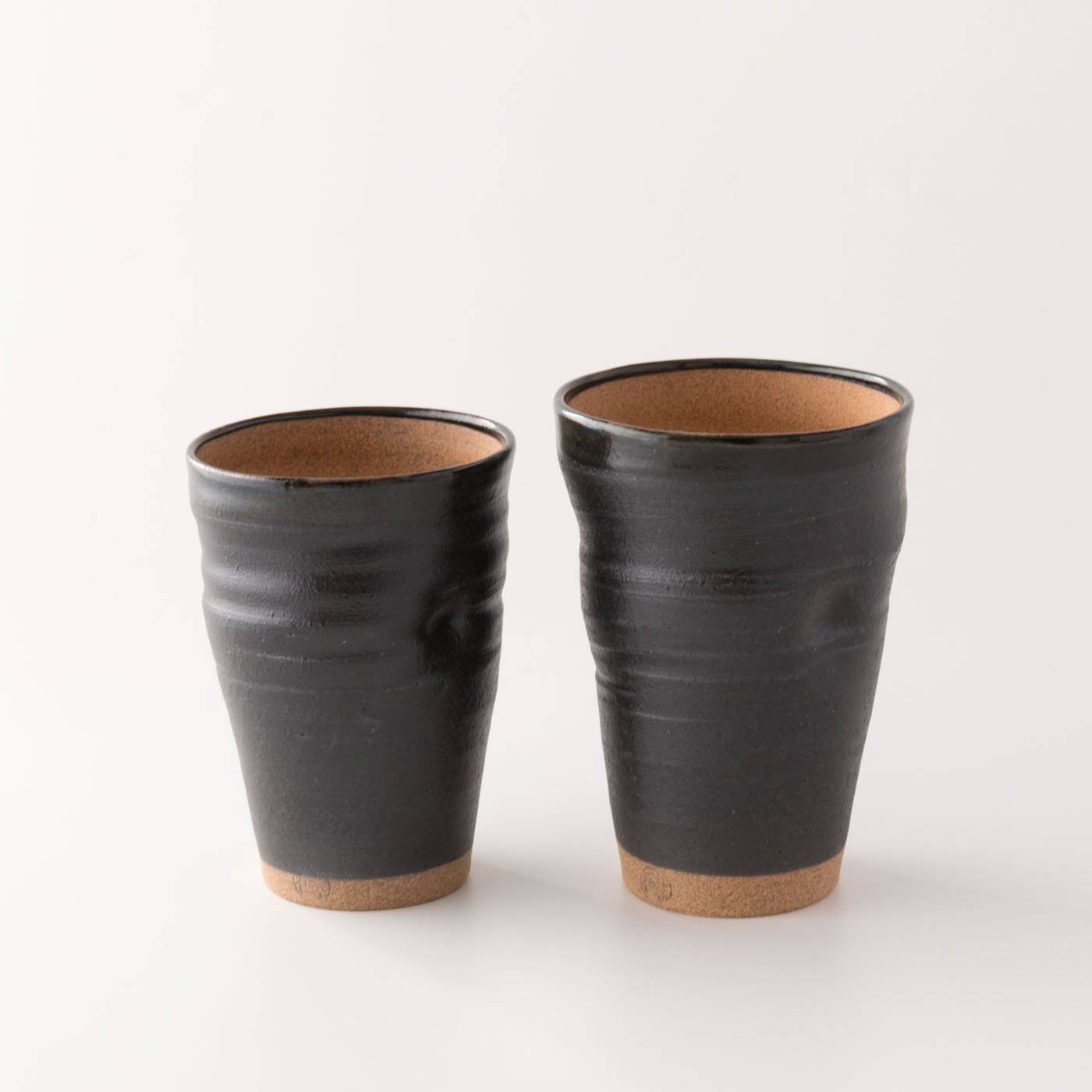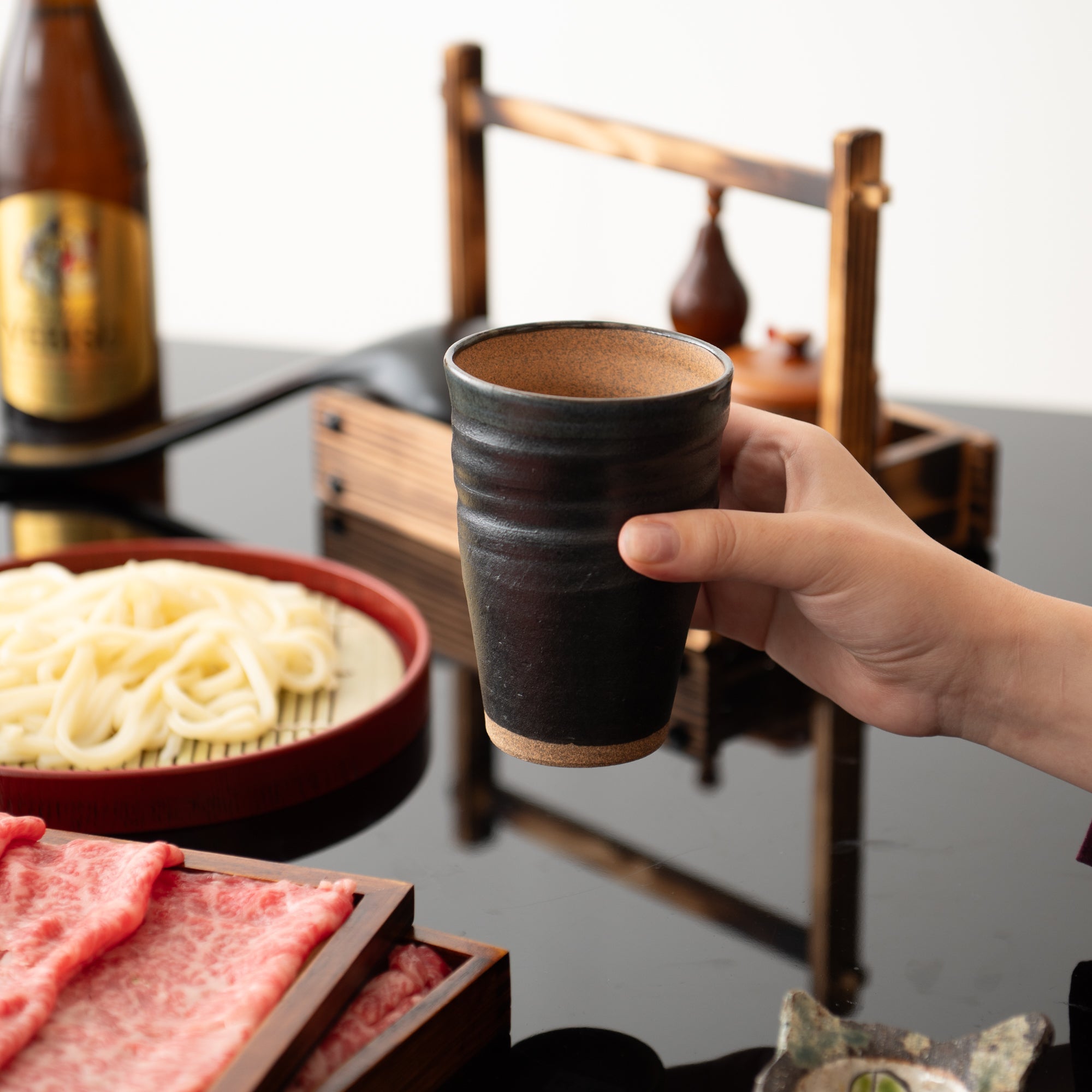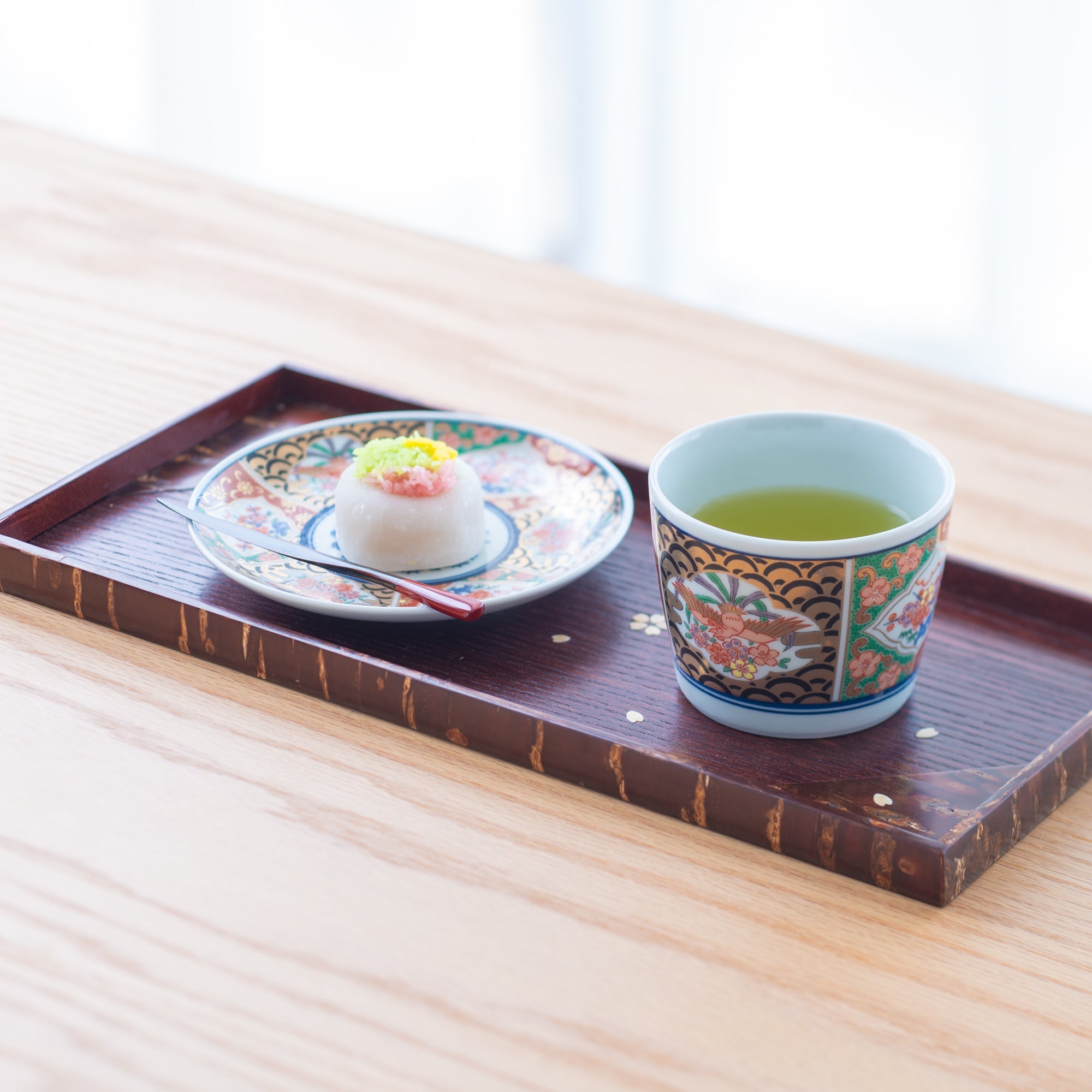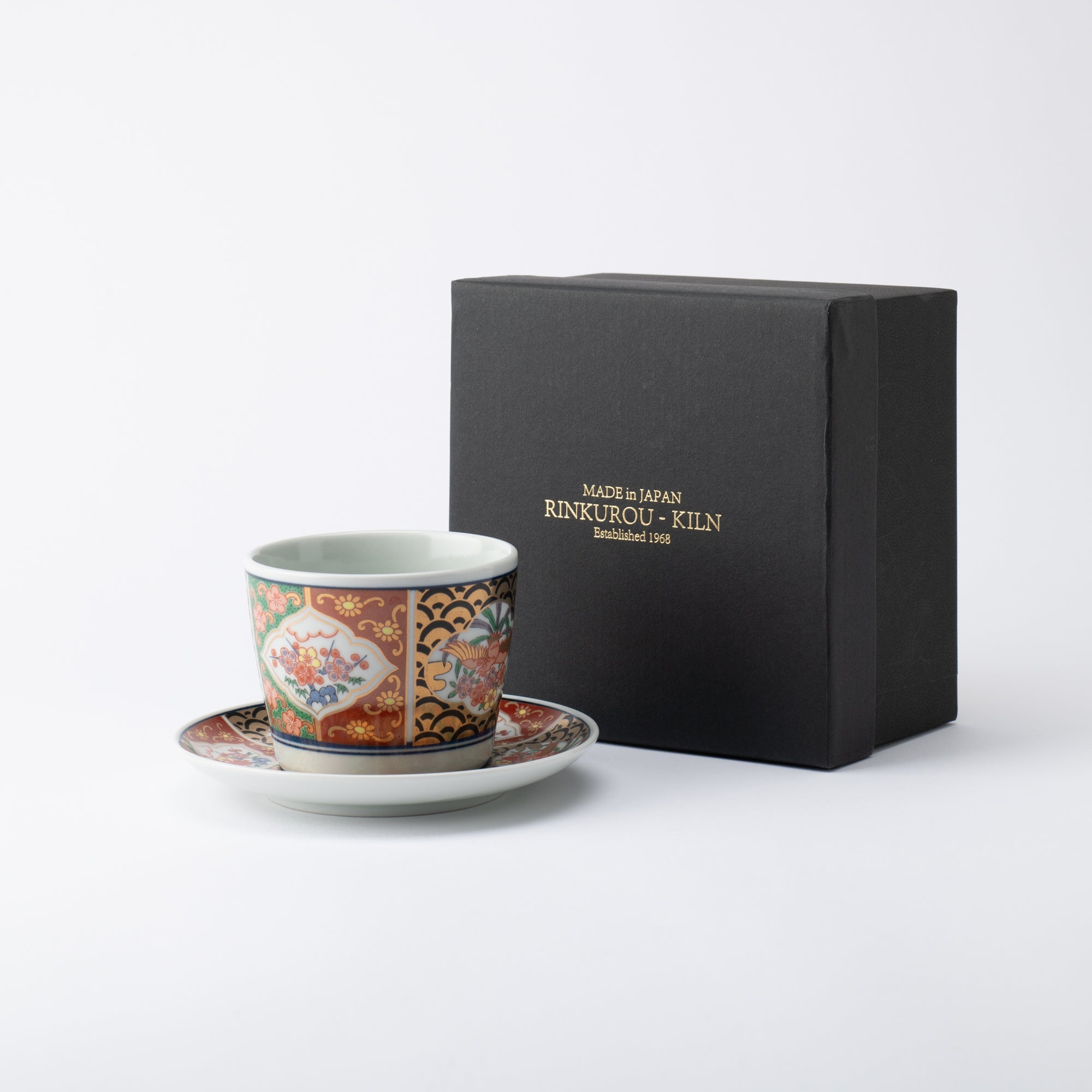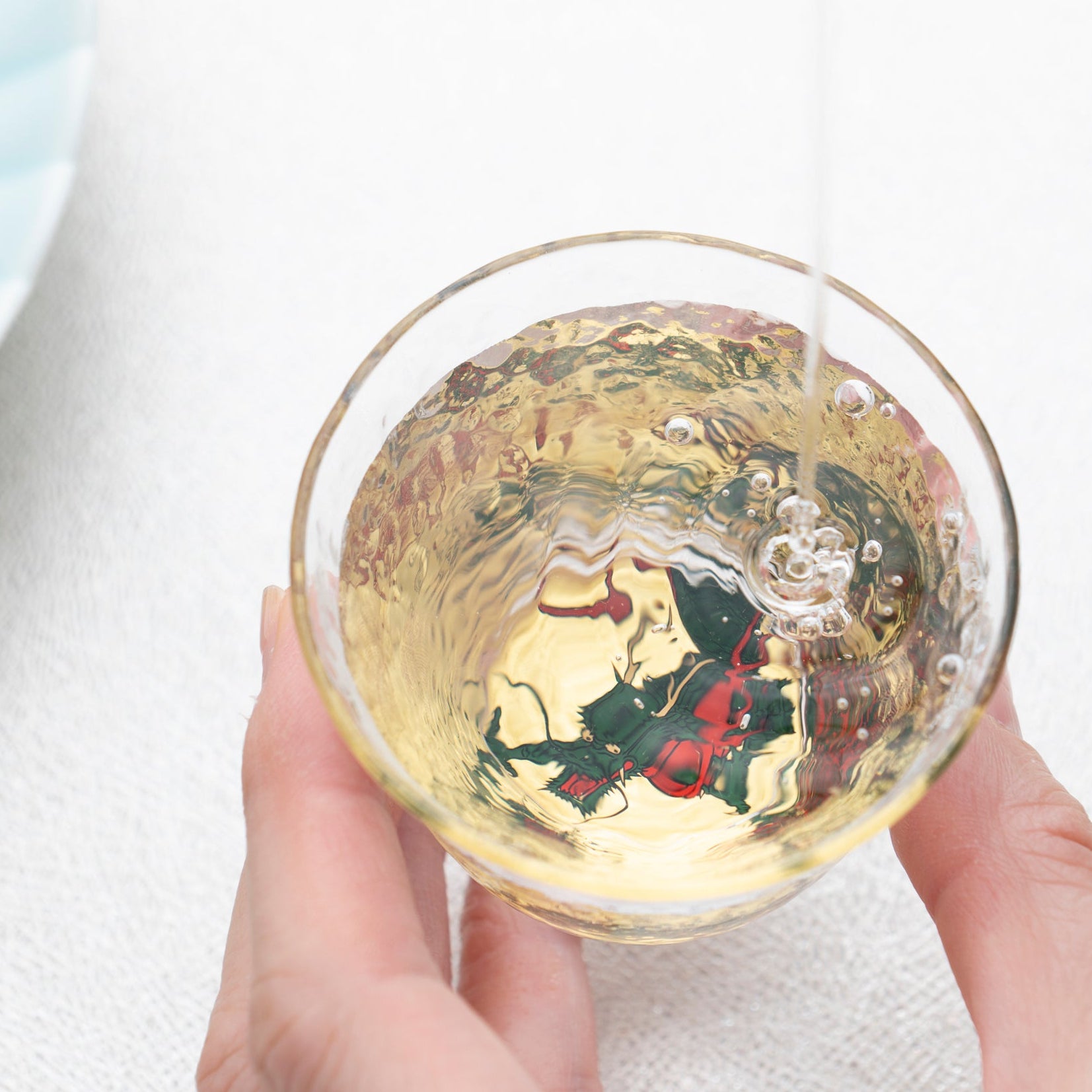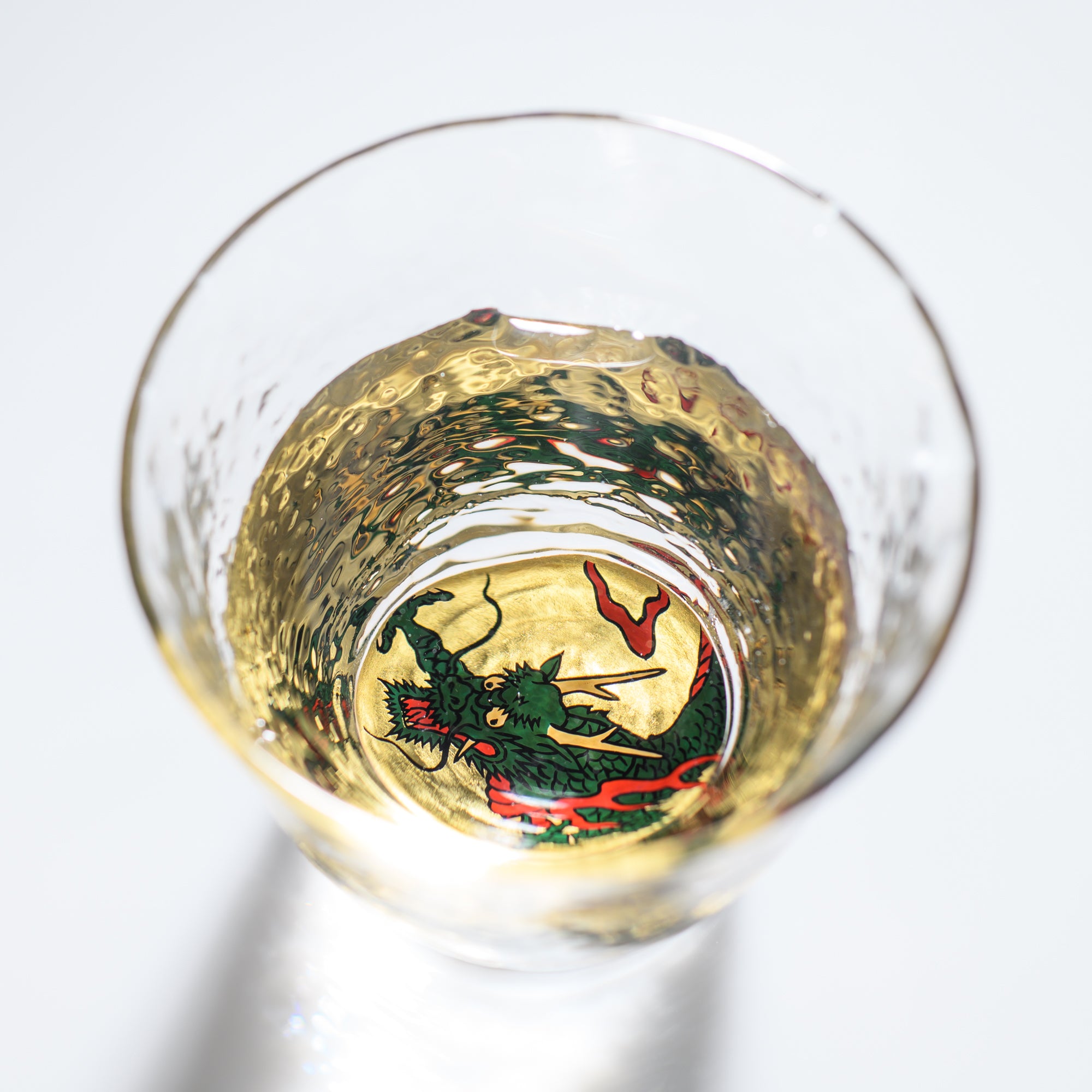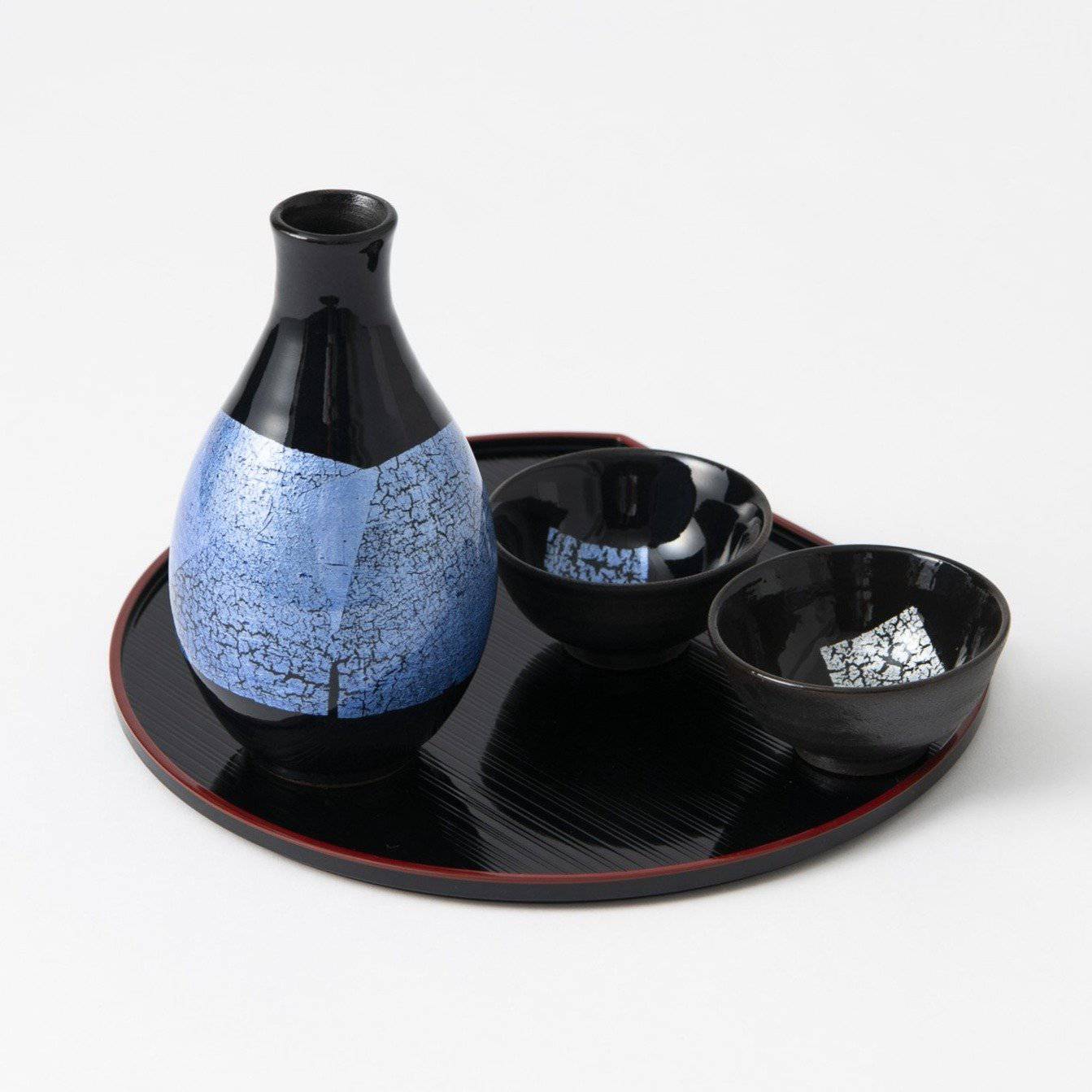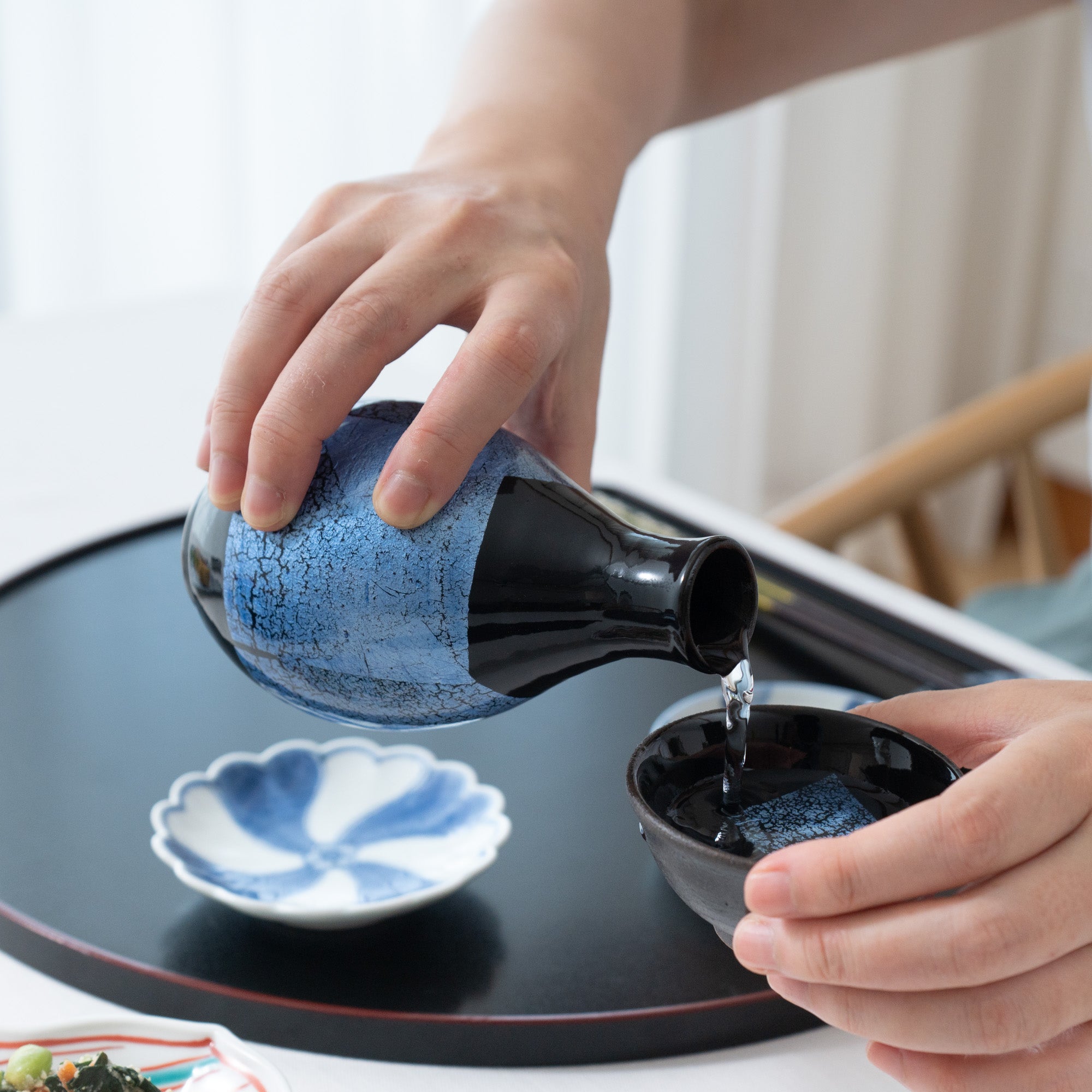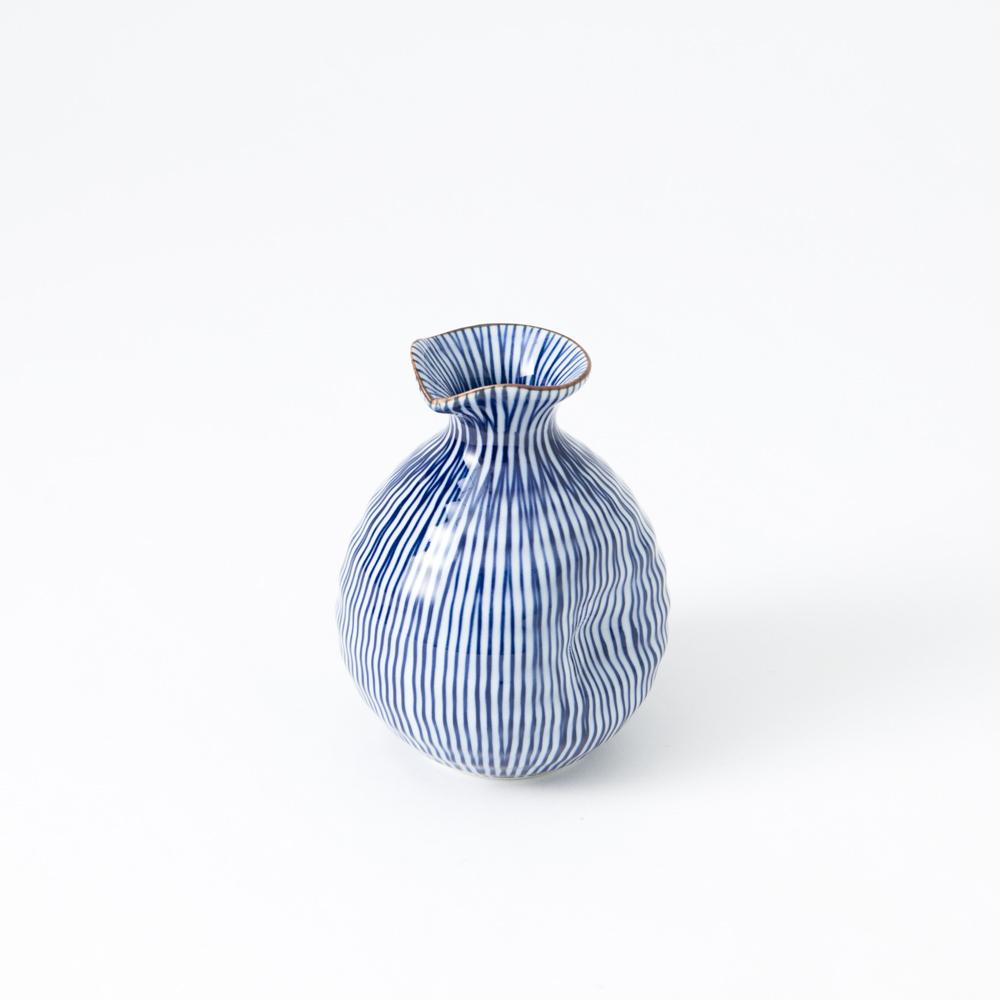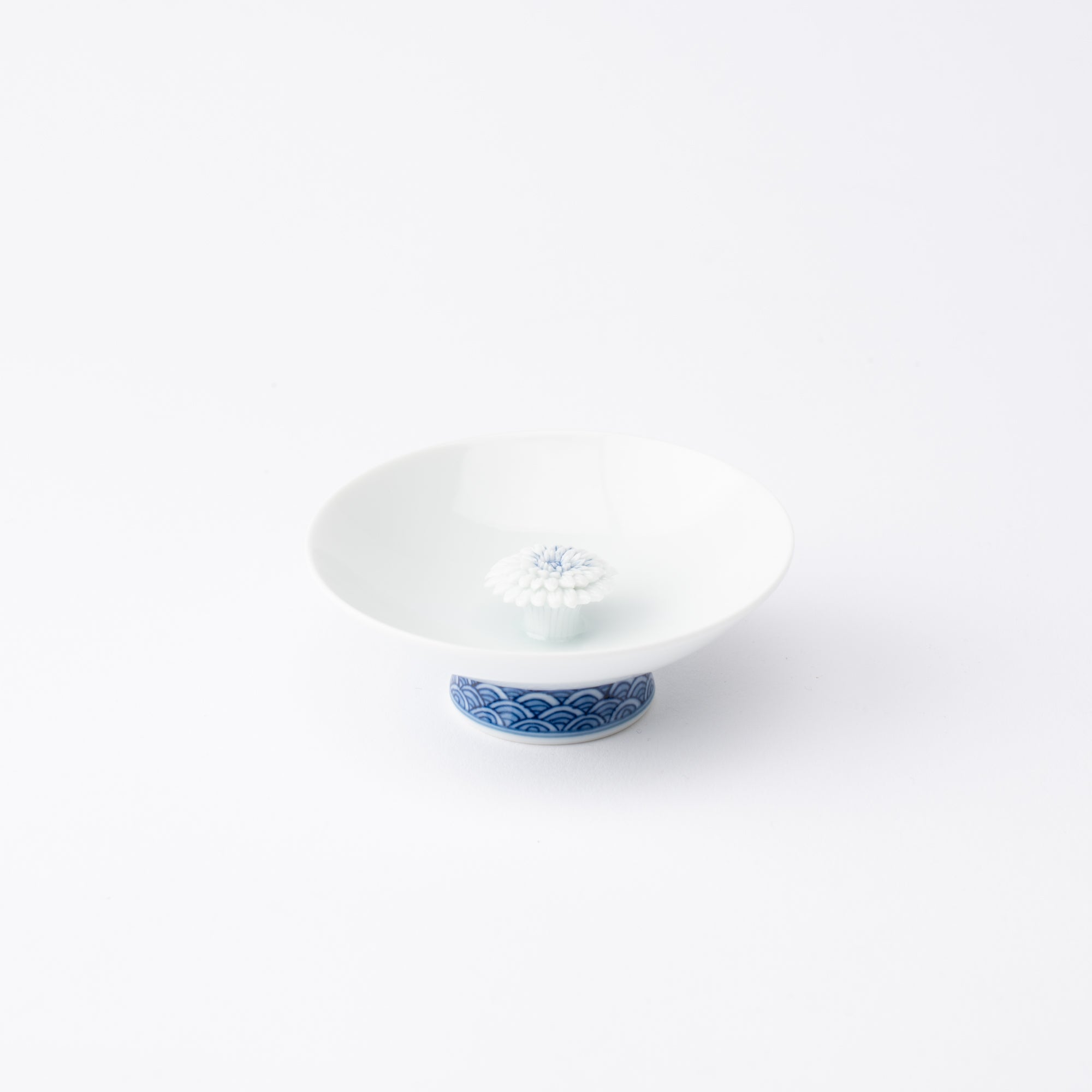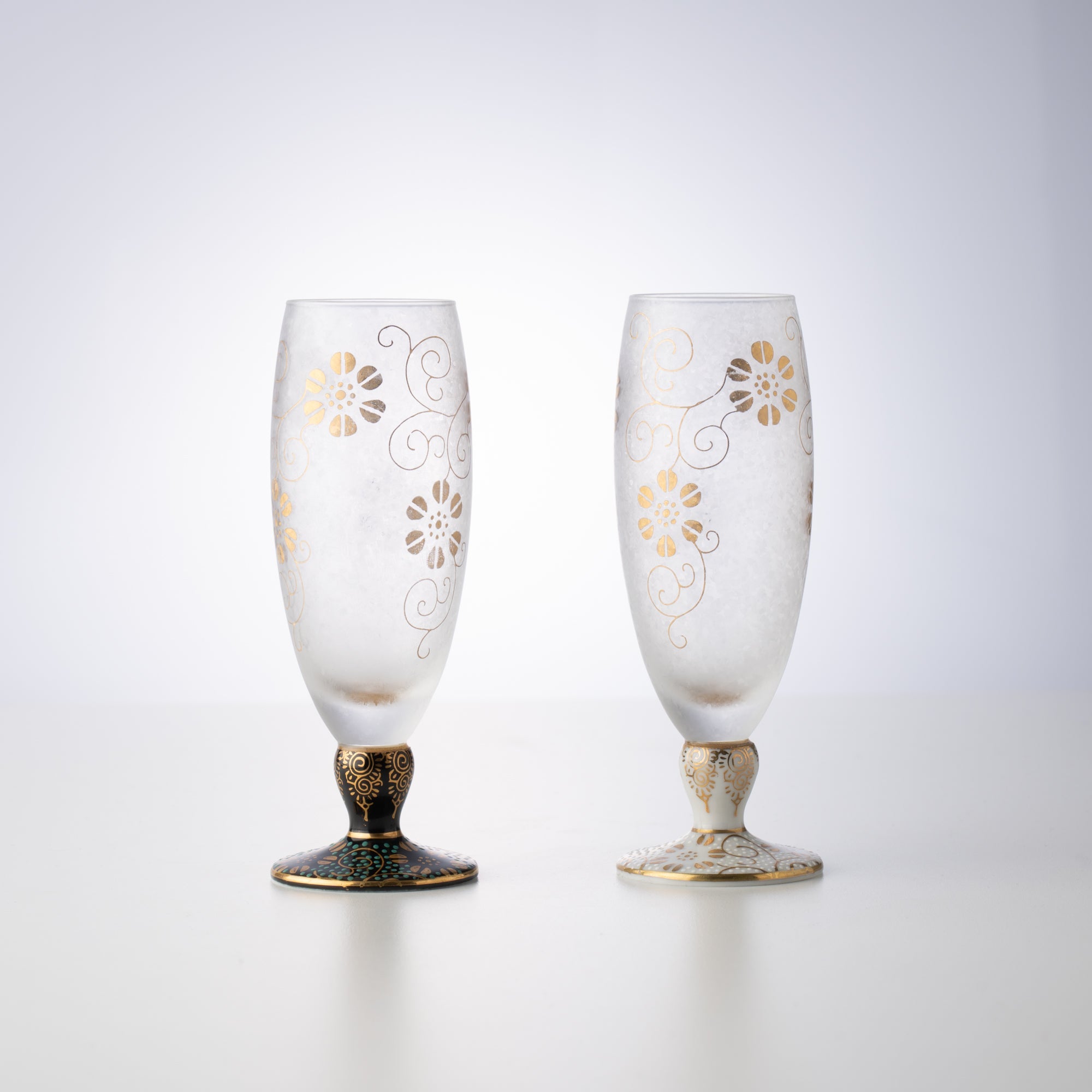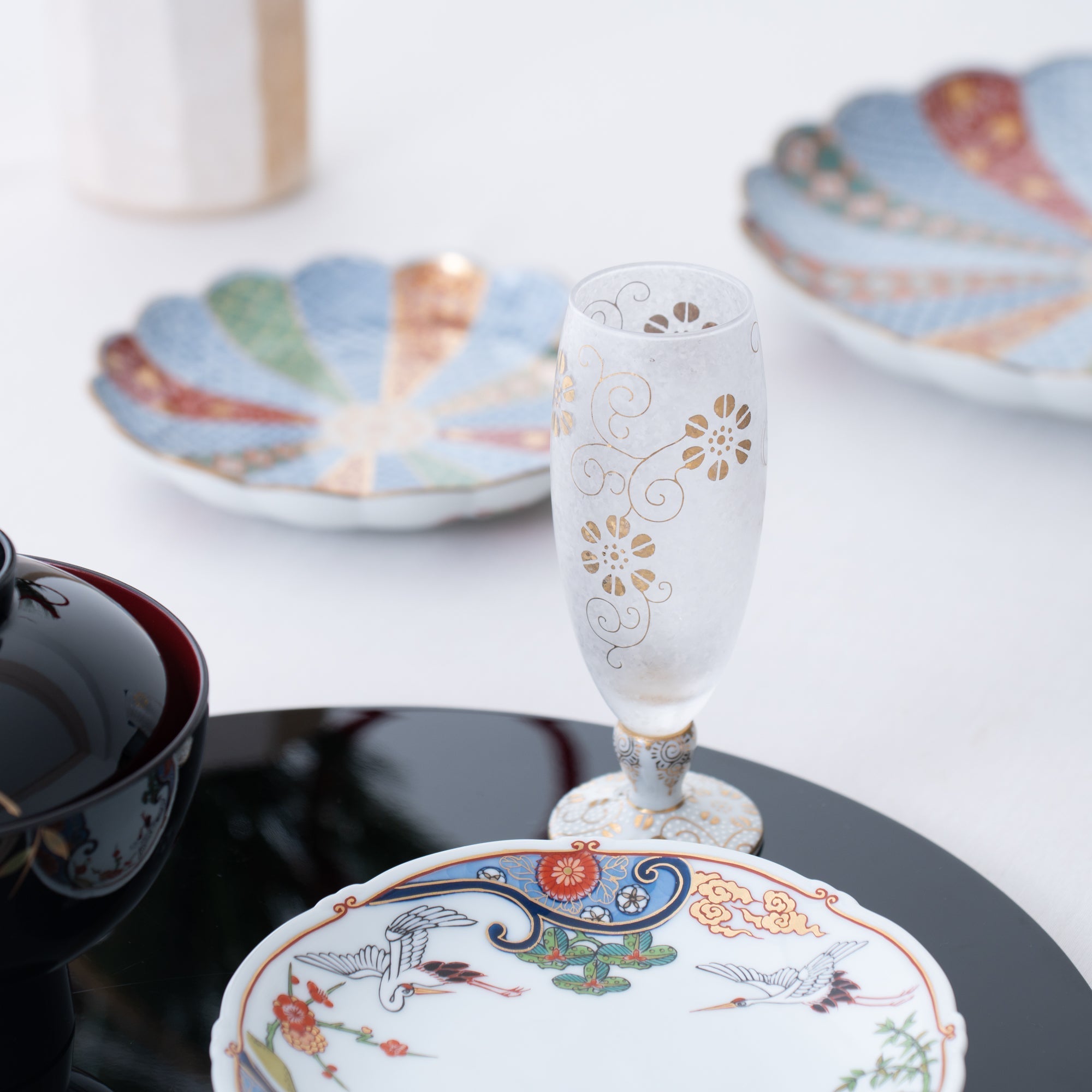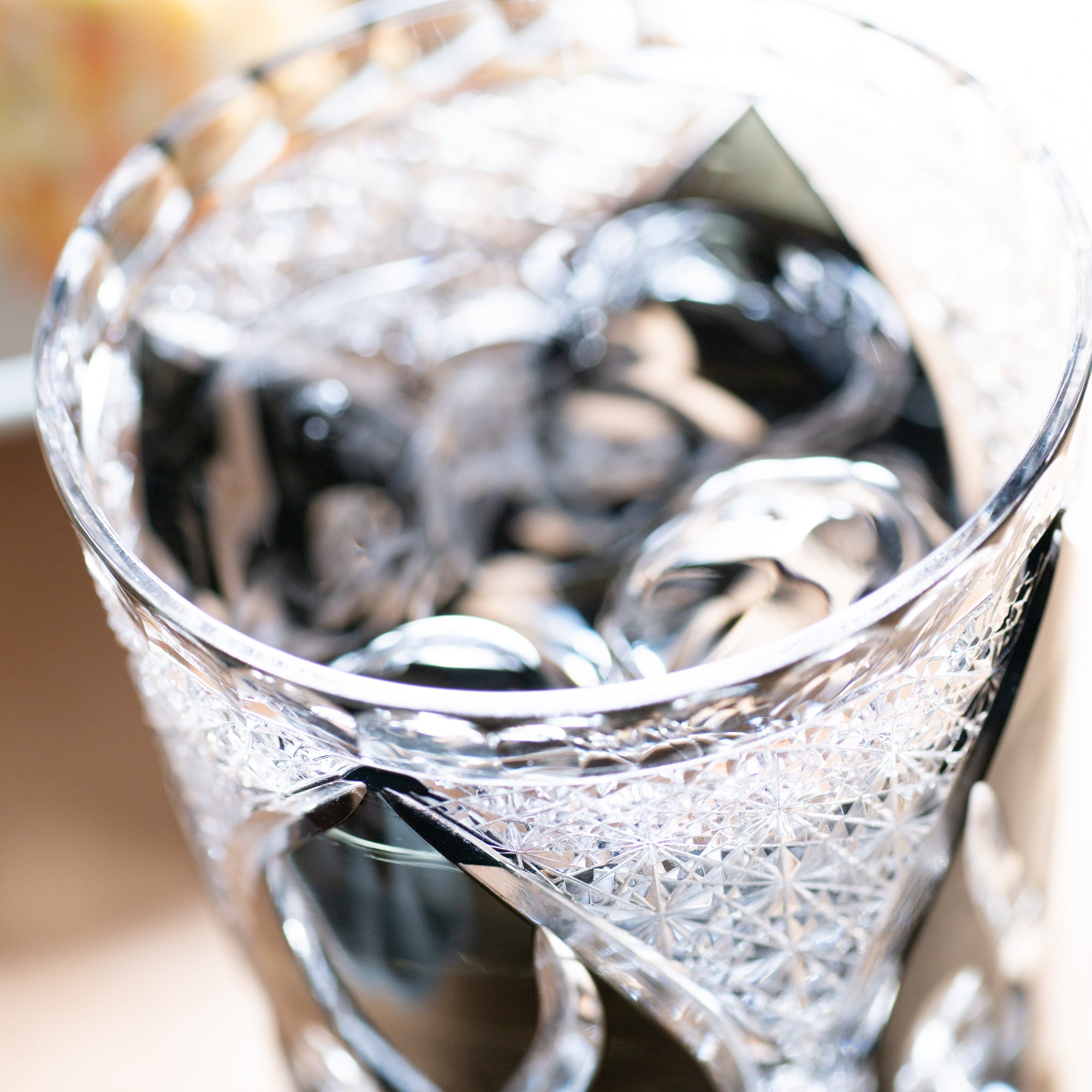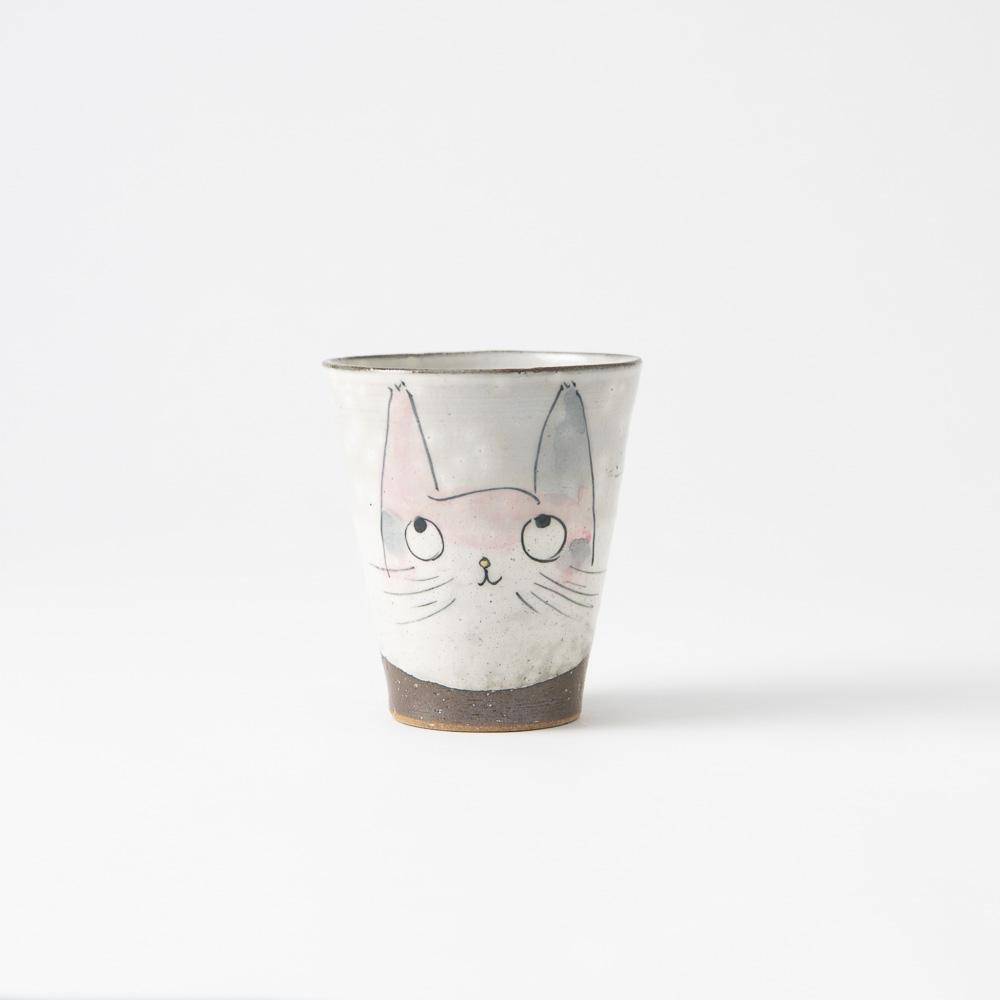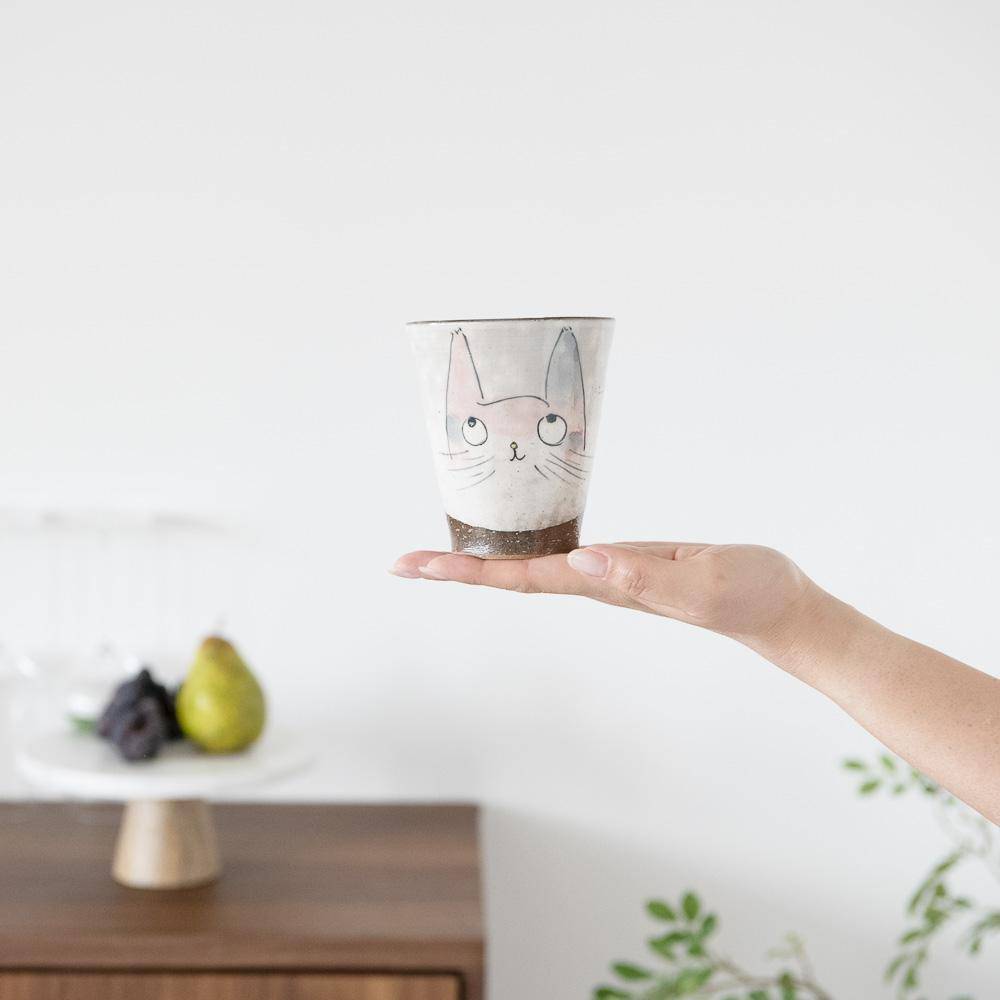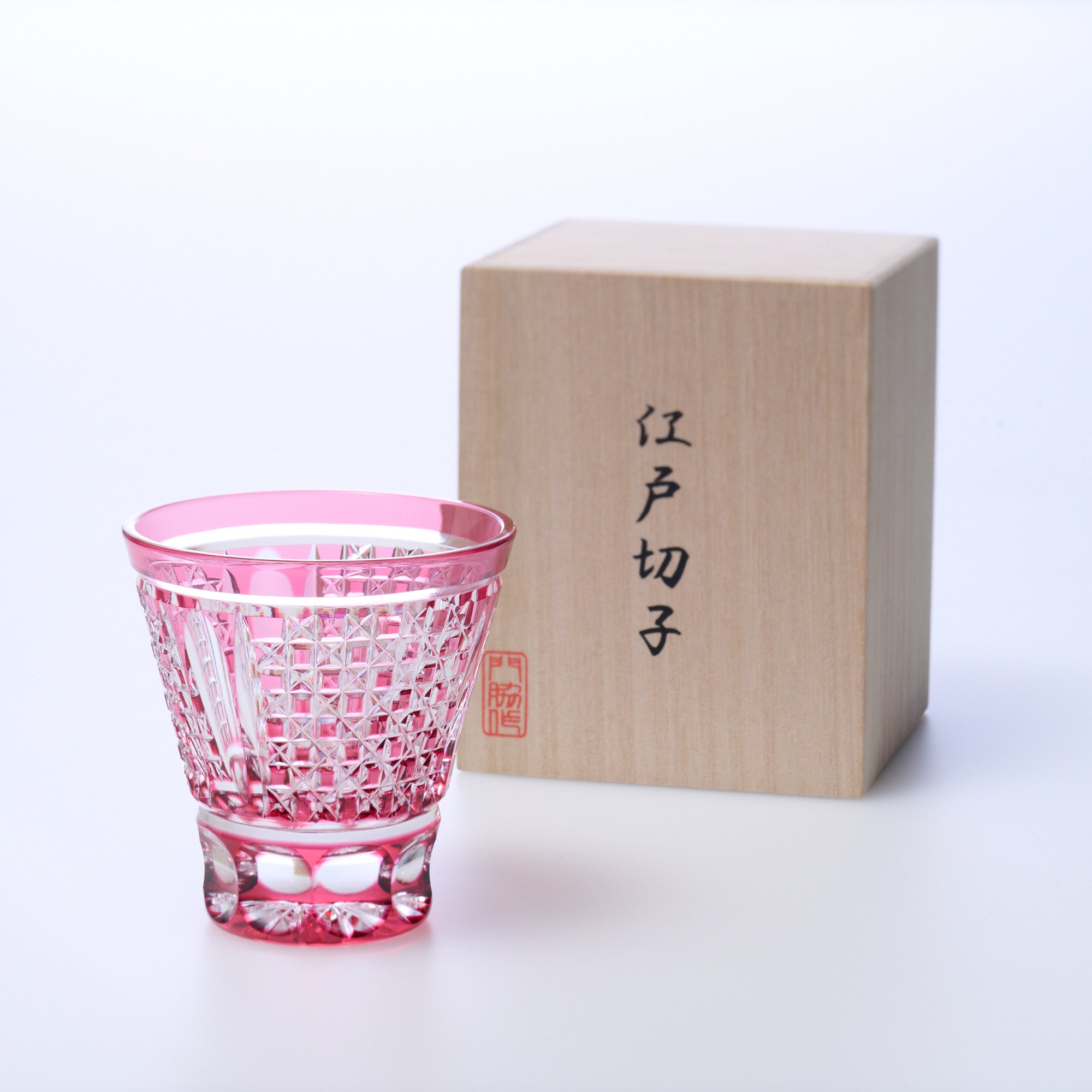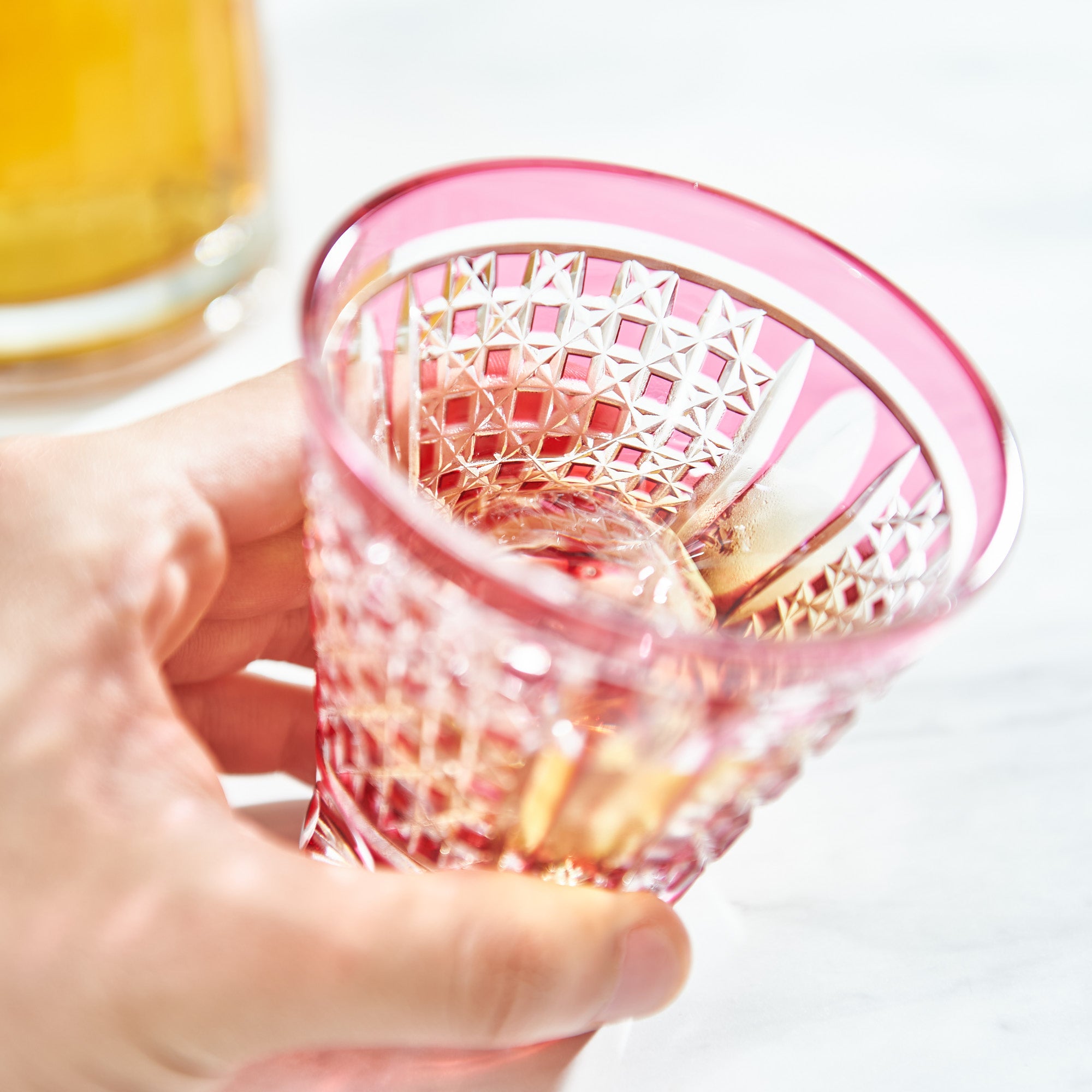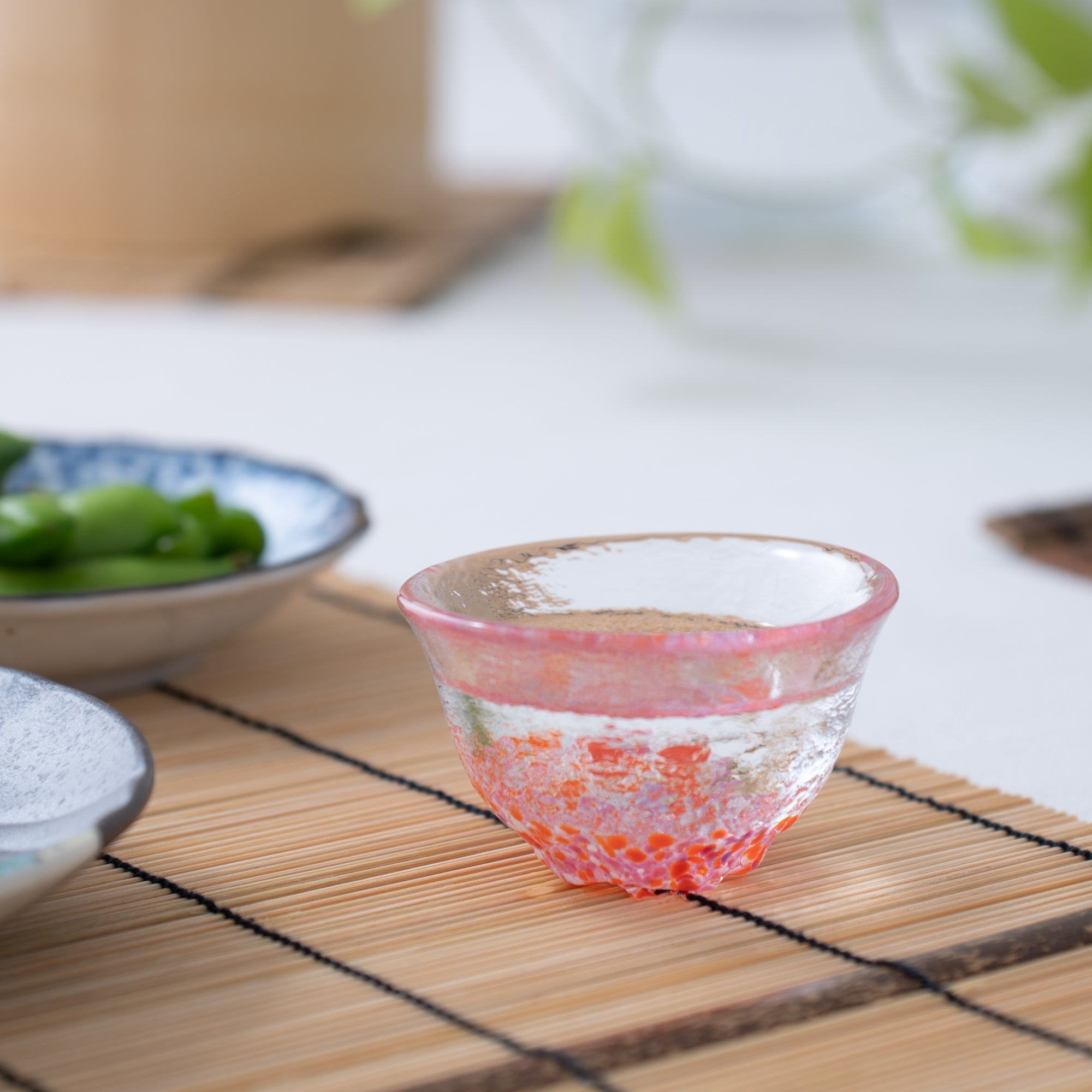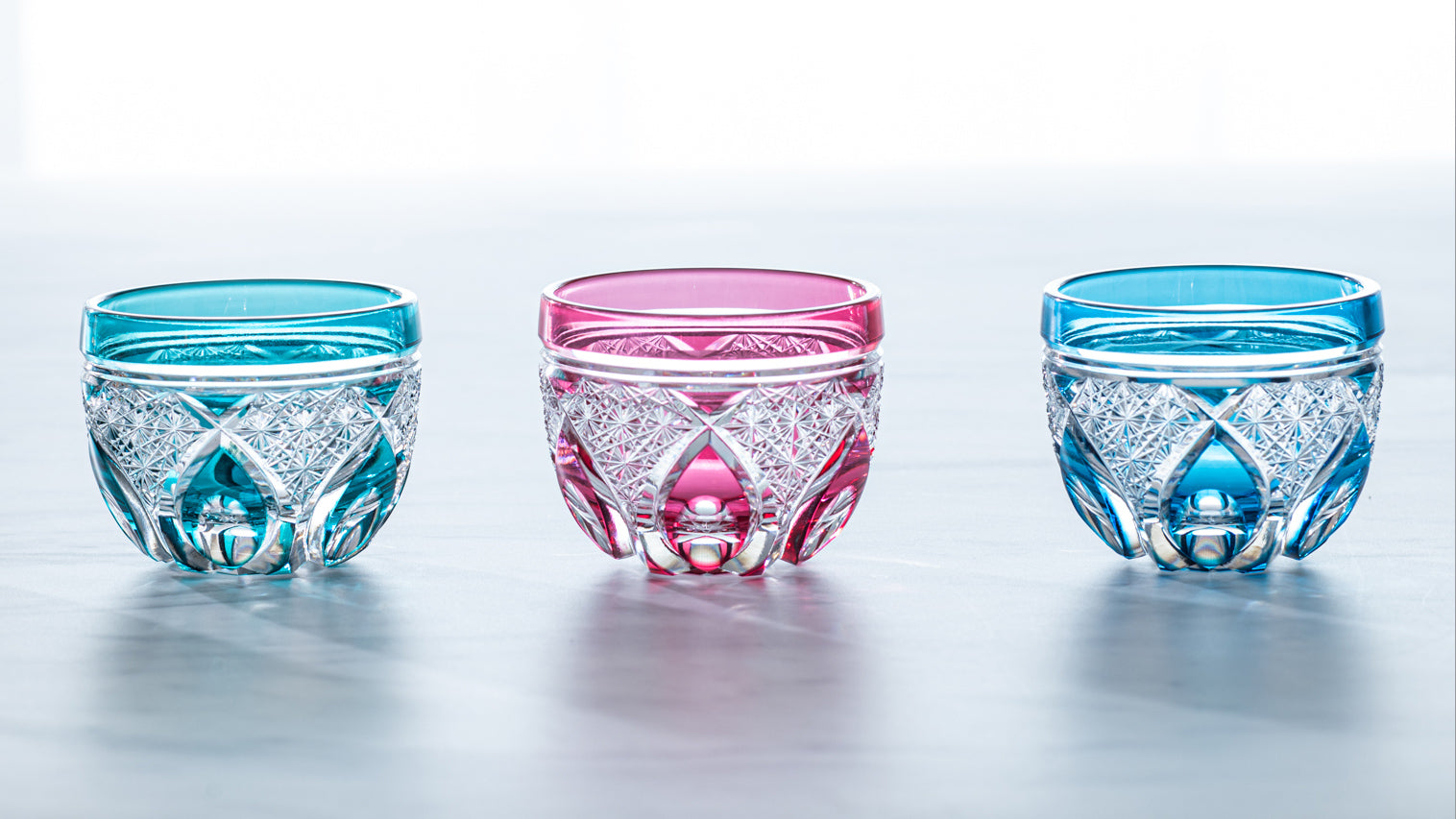
Sake / Barware
Sake is a nuanced beverage whose flavors are influenced by both the serving temperature and the vessel used. To truly savor its distinct character, choose a sake serving set that resonates with your personal tastes and complements the particular variety of sake you favor.
Our collection showcases exquisite sake serving sets from across Japan, each designed to enhance your experience savoring sake. Discover the perfect set to elevate your enjoyment of this traditional drink.
Related posts
Filters
White Fubuki 3-Piece Sake Set
Sale price$104.00 USD
Koi Fish Maki-e Sake Cup
Sale price$193.00 USD
Black Crystalline Glaze Sake Warmer
Sale price$48.00 USD
Green Amber Whirlwind Guinomi Sake Cup
Sale price$830.00 USD
Hammered Tin Chirori Sake Carafe
Sale price$370.00 USD
Hokusai Red Fuji Maki-e Sake Cup
Sale price$193.00 USD
Hidasuki Gourd‐shaped Sake Set
Sale price$189.00 USD
Goma Gourd‐shaped Sake Set
Sale price$189.00 USD
Tales of a Century Hammered Tin Guinomi Sake Cup
Sale price$232.00 USD
Sangiri Gourd‐shaped Sake Set
Sale price$189.00 USD
Yazaemon White Sake Cooler
Sale price$126.00 USD
Yazaemon Old Imari Sakura Sake Set
Sale price$315.00 USD
Tortoise Maki-e Guinomi Sake Cup
Sale price$193.00 USD
Dimple Blue Wave Tokkuri Sake Carafe
Sale price$76.00 USD
Nishiki Flared-Rim Guinomi Sake Cup
Sale price$221.00 USD
Charcoal Blue Sakazuki Flat Sake Cup
Sale price$35.00 USD
Hidasuki and Goma Beer Cup Pair
Sale price$114.00 USD
Yoshidaya Sakura and Bird Sake Set
Sale price$112.00 USD
Old Imari Ochoko Sake Cup Set
Sale price$189.00 USD
Ginsai Camellia Sake Set
Sale price$126.00 USD
Gold Leaf Kutani Sake Set
Sale price$126.00 USD
Golden Hanazume Ochoko Sake Cup
Sale priceFrom $43.00 USD
Hokusai Great Wave off Kanagawa Maki-e Sake Cup
Sale price$193.00 USD
Rolling Waves Edo Kiriko Whiskey Glass
Sale price$1,022.00 USD
Red Hazy Moon Guinomi Sake Cup
Sale price$195.00 USD
Old Imari Kinrande Sake Set
Sale price$231.00 USD
Lapis Lazuli Hazy Moon Guinomi Sake Cup
Sale price$195.00 USD
Goma Sake Set
Sale price$170.00 USD
Blue Amber Waves Whiskey Glass
Sale price$818.00 USD
Plum Flower with Gold Leaf Sake Set
Sale price$315.00 USD
Tales of a Century Hammered Tin Chirori Sake Carafe
Sale price$788.00 USD
Seven Lucky Gods Sake Cup Set
Sale price$189.00 USD
Crane Maki-e Guinomi Sake Cup
Sale price$193.00 USD
Swimming Sea Creature Sakazuki Flat Sake Cup
Sale price$48.00 USD
Blue Amber Whiskey Glass
Sale price$1,208.00 USD
TOHKA KAKUSEN Katakuchi Sake Carafe
Sale price$302.00 USD
Old Imari Flowers in Window Soba Choko Cup and Saucer
Sale price$65.00 USD
Regular price$76.00 USD
Matte Black Beer Cups Pair
Sale price$126.00 USD
Old Imari Waves and Phoenix Soba Choko Cup and Saucer
Sale price$65.00 USD
Regular price$76.00 USD
Green Dragon Maki-e Guinomi Sake Cup
Sale price$234.00 USD
Ginsai Blue Sake Set with Tray
Sale price$283.00 USD
Tokusa Tokkuri Sake Carafe
Sale price$48.00 USD
Floating Chrysanthemum Sakazuki Flat Sake Cup
Sale price$114.00 USD
Mizore Guinomi Sake Cup
Sale price$246.00 USD
Black Star and Sword Whiskey Glass
Sale price$962.00 USD
Stargazing Cat Shochu Cup
Sale price$87.00 USD
Pink Checkered Whiskey Glass
Sale price$476.00 USD
Four Seasons Color Ochoko Sake Cup
Sale price$34.00 USD


